- Search Please fill out this field.
- Manage Your Subscription
- Give a Gift Subscription
- Newsletters
- Sweepstakes

How to Travel to Patagonia
Here's everything you need to know about visiting Patagonia, including the best treks and places to stay.
:max_bytes(150000):strip_icc():format(webp)/Nora-Walsh-2000-1e93f87ed6fd4b669b3b1520510499a1.jpg)
Stretching across Chile and Argentina, Patagonia has long lured travelers to what is very nearly the end of the world. Here, in the countries' national parks, are snow-capped mountains, cobalt fjords, and old-growth forests. At the southernmost tip of the Americas, icebergs rupture with a dramatic roar from ancient, massive glaciers.
Torres del Paine National Park in Chile and Los Glaciares National Park in Argentina are two of the region’s top highlights, attracting hundreds of thousands of visitors per year. For a complete Patagonian travel journey, consider visiting both. Of course, doing so requires a lot of logistical planning — especially during the high season. Here’s a comprehensive guide to help you maximize your travels in this wonderfully remote corner of the planet.
Though most hotels in the region remain open year-round, you might find amenities and activities that keep tourists comfortable and entertained throughout the busy season are unavailable during winter in the Southern Hemisphere, which is from April to September.
To avoid the crowds and still experience good weather, visit during the spring when the flowers are in bloom, or fall when the leaves are a fiery mosaic of red, orange, and yellow. The summer months (December to February) have the mildest weather, but keep in mind that temperatures average below 70 degrees and winds are strong.
Travelers should be aware that the weather in Patagonia is highly unpredictable, particularly in spring and early summer. Weather and temperatures can fluctuate without warning, and violent storms can sweep in from the Pacific. It’s helpful to pad your schedule with additional days in case you encounter inclement weather.
How to Get to Patagonia
Because distances are quite long in Chile and Argentina, you will probably want to fly to Patagonia (unless you have several days to spare for a road trip from Buenos Aires or Santiago). Airline seats fill up quickly during peak season (December to February), so you should purchase tickets as far in advance as possible: Six months is ideal. For other months in the high season (October until early May), book at least three months ahead to avoid steep fares and limited options.
In Chile, LATAM Airlines serves southern Chilean Patagonia year-round with daily flights between Santiago and Punta Arenas, a common jumping-off point for Patagonia travel, with a flight time of three and a half hours.
Sky Airlines, Chile’s low-cost provider, also flies between Santiago and both Punta Arenas and Puerto Natales — another jumping-off point to Punta Arenas' south — often stopping at Puerto Montt, though passengers usually get to stay on the plane. Sky Airlines generally offers lower fares than LATAM.
Puerto Natales fares are cheaper the earlier you book. And as for driving time, it's three hours between Puerto Natales and Punta Arenas, two hours between Puerto Natales and Torres del Paine National Park, and four to five hours between Punta Arenas and the park.
In Argentina, Calafate and Ushuaia are the primary entryways, both less than a four-hour flight from Buenos Aires. These destinations are serviced by LATAM Airlines and Aerolineas Argentinas. Los Glaciares National Park, home to the famous Perito Moreno Glacier, is an hour's drive from El Calafate Airport. Another popular destination in this region is the trekking mecca El Chaltén, which is a three-hour drive from El Calafate Airport, where you can rent a car.
How to Get Around
Many of Patagonia's luxury hotels include transfers to and from the airport, as well as transportation for daily excursions. Traveling between Chile and Argentina can be done easily by land or sea. Unfortunately, there are no flights from Puerto Natales or Punta Arenas to El Calafate or Ushuaia.
By sea, Australis cruises run from the end of September to the beginning of April, connecting Punta Arenas and Ushuaia. Expeditions lasting four to eight nights navigate fjords, the Avenue of the Glaciers, the Strait of Magellan, Beagle Channel, and Cape Horn. Daily Zodiac rides get passengers up close to the ice and wildlife including penguin colonies and elephant seals.
For an overland trip, you can rent a car, organize a private transfer, or catch a bus. The bus company Bus-Sur connects Puerto Natales, Chile, and El Calafate, Argentina, daily during the tourist season and several times a week during the low season. The transfer takes five hours or longer, depending on how long it takes to clear customs. Book online at least a month in advance to guarantee a seat, especially during the high season.
Traveling by bus or organized tour is the most convenient way to cross the border because guides and drivers handle many of the logistics, but self-driving tourists travel between Chile and Argentina in private vehicles all the time. Do your research on the process before attempting a border crossing on your own.
What to Pack
In Patagonia, travelers will need to be ready for all kinds of weather. Since temperatures can go from freezing to 70 degrees over the course of a single day, it’s crucial that travelers pack layers. A waterproof jacket and trekking boots are essential, as are sunscreen and a pair of quality sunglasses (the sun can be extremely bright).
If you’re staying in upscale lodges, it's fine to bring a suitcase, but a backpack is needed for multiday trekking. Smaller backpacks are ideal for full- or half-day excursions. Many upscale hotels provide personal water bottles and trekking poles.
Packing Essentials
- Long thermal underwear that wicks perspiration
- Water-repellent hiking pants
- Light pullover or sweatshirt
- Fleece or down liner
- Waterproof parka or weatherproof jacket
- Hat for sun protection
- Liner or wind-stopper gloves
- Waterproof hiking boots
- Long hiking socks
- Neck gaiter
- Hiking backpack or day pack
Chilean Patagonia Travel Tips
Chile's portion of Patagonia is smaller and more rugged — i.e., less touristy — than Argentina's. Head to the Chile side to get off the beaten path and go beyond the major highlights.
Travelers flock to Patagonia to experience the otherworldly beauty of Torres del Paine National Park and spot Patagonia’s wildlife, including the Big Five: pumas, llama-like guanacos, South Andean deer known as huemul, Andean condors, and the ostrich-like rhea (or ñandú). There are also flamingos, foxes, penguins, and more than 100 species of birds. Several tour companies offer multiday puma-tracking safaris through the park.
Visitors will also want to explore the park’s old-growth forests. In the canopies of primeval southern beech trees (lenga, coihue, ñire) you can spot Magellanic woodpeckers and Austral parakeets.
Full- and half-day treks along the famous W Circuit (named for the shape of the route) offer one-of-a-kind vistas of sweeping freshwater lakes, teal lagoons, ice floes, and glimmering glaciers. The W Circuit is a roughly 50-mile trail that takes four or five days to walk and showcases major attractions. Trekkers settle into refugios (basic dorm-style shelters) or campsites for overnight stays.
Less remote, you can stroll through the colorful fishing town of Puerto Natales, or explore the region’s labyrinth of scenic fjords, where immense glaciers and marine life can be admired from the deck of a boat. On the shores of Punta Arenas, visit penguin colonies at Seno Otway or Magdalena Island and look out for sea lions and whales that populate the waters. You can also kayak the Strait of Magellan.
Where to Stay
Patagonia's luxury lodges offer all-inclusive packages that cover airport transfers, a wide range of full- and half-day excursions, and three gourmet meals per day with premium wine and cocktails. Explora is a pioneer in this category, offering dozens of expeditions led by experienced guides in Patagonia and Torres del Paine national parks. Besides that, 14 exclusive villas are the signature of Awasi , where guests have their own private guide and four-wheel drive vehicle to explore the scenery at their own pace.
Overlooking Lake Sarmiento and Paine Massif, Tierra Patagonia subscribes to an adventure spa philosophy. Guests are encouraged to unwind after jam-packed days of exploration with a massage or a session in the open-air hot tub.
For glampers, the sustainable EcoCamp is a geodesic dome hotel inside Torres del Paine National Park. Accommodations range from basic to over-the-top heated two-story tents that boast private terraces, bathrooms, and windows facing upward to the Patagonian sky. Assisted camping experiences on the trekking circuit are arranged by operators like Las Torres , Cascada Expediciones , MT Sobek , and Swoop Patagonia .
A number of upscale properties are located in and around the colorful fishing town of Puerto Natales, too. The Singular Patagonia , a property situated on the banks of the Last Hope Sound, is an early-20th-century national monument that’s been refurbished with industrial-chic accents.
At Lakutaia Lodge , on Navarino Island next to Cape Horn, guests are deeply immersed in the surrounding glaciers and fjords. But the real draw for adventurers is the opportunities to helifish and heliski.
What to Eat and Drink
Most of the lodges on private reserves offer full room and board, employing talented chefs who take advantage of locally sourced ingredients like white strawberries, rhubarb, seaweed, Patagonian honey, and gamier specialties like guanaco and Patagonian hare.
From the sea, try South American king crab, snook-and-hake ceviche, conger eel, choritos (mussels), and oysters. Wash it all down with a Chilean pisco sour or bottle of local wine.
Day Trips From Chile
Hotels in Chilean Patagonia offer a staggering array of full- and half-day excursions for just about any interest and fitness level: mountain trekking, horseback riding, cycling, kayaking, sailing scenic fjords, and glacier cruises, among others. For avid hikers, hiking to the base of Torres del Paine ("Mirador Las Torres") is a must-do. It’s a challenging, full-day out-and-back trip, but a clear view — weather depending — of the granite spires rising from the turquoise glacial lake is an ample reward.
You can take a Zodiac voyage to get up-close views of ancient, glistening glaciers. Grey Glacier is a popular destination, as are the Balmaceda and Serrano Glaciers, accessible from the wharf in Puerto Natales. Otherwise, spend the day with Chilean cowboys at the family-run Estancia Mercedes for horseback riding along fjords.
General Tips for Visiting Chile
- When visiting during Chile’s summer months, beware of biting midges. Spray yourself with natural insect repellent at regular intervals and wear light-colored clothing with long sleeves, as these small flies are attracted to dark colors.
- If you are an avid hiker, avoid heavy crowds of backpackers in Torres del Paine National Park by traveling in November or April.
- On challenging treks, opt for two trekking poles. They will save your knees on the descent.
Argentine Patagonia Travel Tips
Argentina's portion of Patagonia is larger and more geographically diverse than Chile's portion. Another potential benefit is that the Andes Mountains leaves Argentina in a rain shadow, meaning it stays dry while the Chilean side takes the rain that rolls in from the Pacific.
The 97-square-mile Perito Moreno Glacier — a declared UNESCO World Heritage site in Los Glaciares National Park — attracts tens of thousands of visitors every year. Located near El Calafate in one of the world’s most exceptional ice fields, it’s a must-see on the Argentine side of Patagonia. Boat cruises on Argentina's largest freshwater lake, Lake Argentino, will take you close enough to witness colossal icebergs fall from the glacier into the water. Some tours give visitors a chance to hike out onto the glacier wearing metal crampons.
Visiting the area’s historic estancias offers travelers a glimpse into the rural life of Patagonian ranchers. Estancia Cristina and Nibepo Aike (see below, Where to Stay) are destinations in their own right. Unspoiled landscapes and opportunities to hike, horseback ride, and visit the area’s stunning glaciers are abundant.
Three hours north by car from El Calafate is the laid-back hiking hamlet of El Chaltén, famous for its towering Fitz Roy mountain peak. The tiny frontier town is dotted with picturesque chalets and a network of scenic trails that suit every skill level.
You’ll travel to the “end of the world” in Tierra del Fuego. Its capital city, Ushuaia, is a port of arrival or departure when traveling by sea between Argentina and Chile. Take a boat cruise or catamaran trip to see penguins, sea lions, and cormorants inhabiting the legendary Beagle Channel made famous by naturalist Charles Darwin on his Beagle voyage in 1831.
Tierra del Fuego National Park offers a lush sub-Antarctic rain forest shaded with beech trees, while Glacier Martial offers a panoramic view of Ushuaia and the channel. International anglers make pilgrimages to the banks of the Rio Grande in the hope of hooking a record-breaking brown trout.
Two pleasant hotels offering relatively affordable accommodations right on the southern shore of Lake Argentino are Esplendor El Calafate Hotel and Xelena .
EOLO , 30 minutes west of El Calafate, is built on 10,000 acres of arid steppe and pampas grass with lake views. Antiques, heavy wooden furniture, and mismatched dishware give the lodge a cozy country atmosphere. Nearby, guests can take guided treks, go horseback riding, mountain biking, and bird-watching. The hotel can also arrange excursions to the Perito Moreno and Upsala Glaciers. Book one of the corner suites for an especially good view.
Further out of town is Estancia Cristina , an early-20th-century sheep ranch accessible only by the resort's boat across Lake Argentino. Set on 54,000 acres of wild Patagonian terra firma, the preserved estancia offers a menu of excursions including trekking, horseback riding, and sailing among icebergs near the Upsala Glacier.
Meanwhile, Estancia Nibepo Aike on the shore of Lake Roca is a working ranch founded by a Croatian pioneer at the turn of the 20th century. The estancia still raises cattle and sheep, granting guests the opportunity to see sheep be sheared, learn cowboy skills on horseback, and sample a traditional prepared asado (barbecue) of Patagonian lamb. Guests can also take day trips from here to explore the lesser-visited glaciers Cubo, Frías, and Dickson.
Between El Chaltén and El Calafate, you can stay at Helsingfors Lodge , a former ranch set on the shores of Lake Viedma with great food and stunning mountain views. On Lake San Martin, several hours north of El Calafate, there's also the pristine private nature reserve that houses Estancia El Cóndor , named for the nearby condor nesting sites.
Los Cerros , located on a hilltop providing epic views of El Chaltén, is the most luxe option in a backpacking haven brimming with hostels. And the exclusive Aguas Arribas Lodge , about an hour's drive north of El Chaltén, is a secluded lakeside retreat looking upon the north face of Mount Fitz Roy.
In Ushuaia, luxury properties Los Cauquenes and Arakur Ushuaia Resort & Spa both overlook the Beagle Channel and offer guided wilderness hikes and excursions on the water.
Most estancias offer full board with three meals per day, but there are some local delicacies you must check off your list.
El Calafate gets its name from the calafate berry (barberry), and there is a local legend that says whoever eats one will return to Patagonia. Try calafate gelato, calafate liqueur, and delicious jams made from chaura (prickly heath) and zarzaparrilla (wild currant).
Experiencing a Patagonian asado is a must at one of the estancias . Watch the asadors cook local lamb on an iron cross over a live fire and enjoy it with a glass of Patagonian pinot noir in hand. One of the best restaurants for grilled cuisine is La Tablita in El Calafate. In Ushuaia, dine on classic Argentine seafood at the restaurant Kaupé , considered one of the best in the country.
While you're in Argentina, be sure to try Beagle , a beer brewed using meltwater from nearby glaciers. However, arguably the most important and culturally significant of all Argentine drinks is mate. It's a longstanding social ritual to drink yerba mate tea, a caffeine-rich blend of dried herbs steeped in hot water, from a hollowed gourd or wooden mate cup. Of course, you must use a bombilla (a traditional straw) for the full experience. Try adding a little sugar if the taste is too bitter for your palate.
Day Trips From Argentina
UIG/Getty Images
A trip to Perito Moreno Glacier in Los Glaciares National Park is one of Patagonia’s most iconic excursions. Book an ice trekking adventure — big or small — with Hielo & Aventura .
Another guide company, Marpatag , takes guests on multiday glacier adventure sailings along Lake Argentino, visiting the Upsala, Spegazzini, and Perito Moreno Glaciers.
A full-day excursion to Estancia Cristina includes a boat ride past glaciers and waterfalls, too. Cañadon de los Fosiles is a 4.5-hour trek from the estancia providing views of Lake Guillermo and the Upsala Glacier before descending through a valley of ancient fossils.
El Chaltén offers a variety of scenic day hikes including the Cerro Torre Trek, which takes about six hours, and the more challenging Mount Fitz Roy Trek, an eight-hour hike to Laguna de los Tres. You can also ice hike atop the Viedma Glacier.
In Tierra del Fuego, look for marine wildlife in the Beagle Channel or visit panoramic lookout points on hikes through Tierra del Fuego National Park.
General Tips for Visiting Argentina
- Perito Moreno Glacier’s ice treks have strict age limits — typically from 18 to 65 years old — that differ by tour.
- If you plan to spend a night at Estancia Cristina, you should overnight in Calafate before and after, as the boat departs early in the morning and returns in the late afternoon.
- Avid hikers should visit El Chaltén in November or April to avoid heavy crowds.
- Outdoor equipment is expensive in Argentina, so be certain you’re well equipped before traveling.
Do Americans Need a Visa to Visit Patagonia?
The capital cities Santiago, Chile, and Buenos Aires, Argentina, both serve as gateways to Patagonia. Americans do not need a visa or to pay a reciprocity fee to enter either country.
Which side to start on is a matter of personal preference. However, if you plan to visit both countries, you can start in one city and finish in the other, so you have the opportunity to experience both.
Related Articles

How to Travel to Patagonia: The Essential Guide for Visitors
By Author Steph Dyson
Posted on Last updated: 24th January 2024
Turquoise lagoons perched beneath sharp, granite pillars and reached only by spellbinding hiking trails; chattering Magellanic and king penguin colonies; slow but magical boat journeys through untamed waters; glaciers towering higher than apartment blocks that calve house-sized bergs into icy waters below.
It’s fair to say that by choosing to travel to Patagonia, a wealth of unforgettable sights await.
Having found international fame as a truly beyond-the-beaten trail travel destination in recent years, Patagonia – a sparsely inhabited region that comprises the southern stretches of both Chile and Argentina – is increasingly finding its way onto travel itineraries and bucket lists .
Click to navigate this article:
A complete Patagonia travel guide
But, as with much of South America, this region can feel like a hard place to travel.
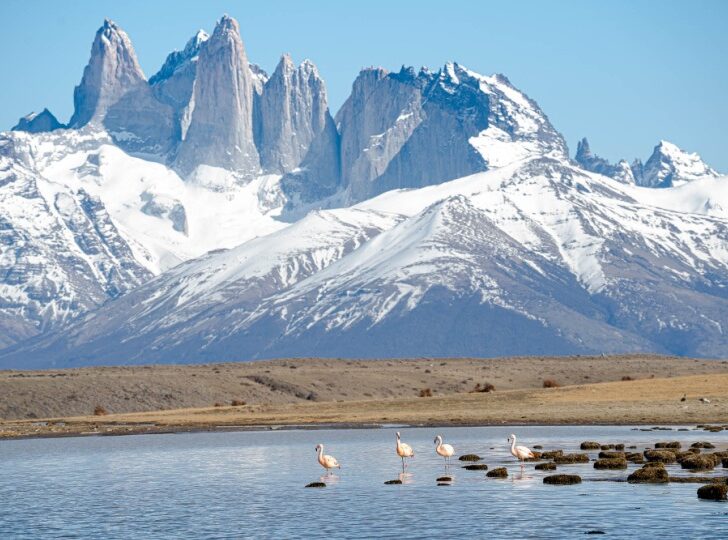
Planning a trip to Patagonia can be a challenge, due in part to just how big it is (at around one million square kilometers, it’s roughly the same size as Egypt or twice the size of Spain – although the exact definition of where Patagonia is is open to debate) and a lack of useful logistical information.
The vast majority of emails I receive each week revolve around questions about travel to Patagonia, with the nitty-gritty details of organizing a vacation in Patagonia or a longer-term trip something that my readers complain is hard to find online.
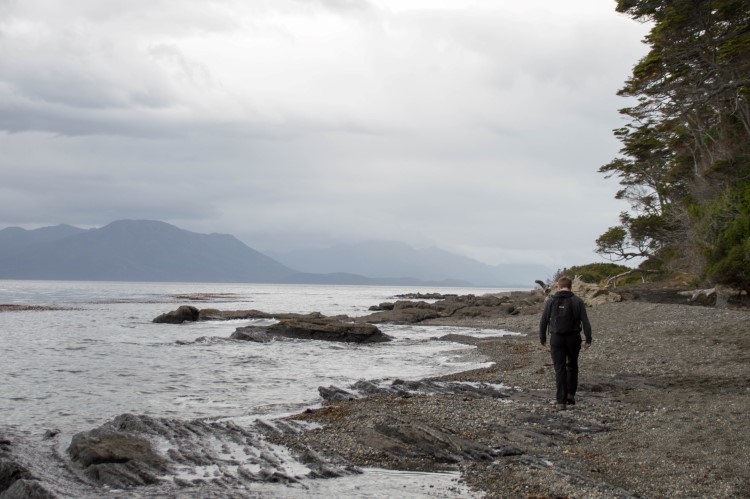
Patagonia is the place I’ve written most about over the last two years. I’ve spent around four months in the region, on three different occasions, the most recently on a research trip covering Chilean and Argentinean Patagonia for the new Moon Chile travel guidebook .
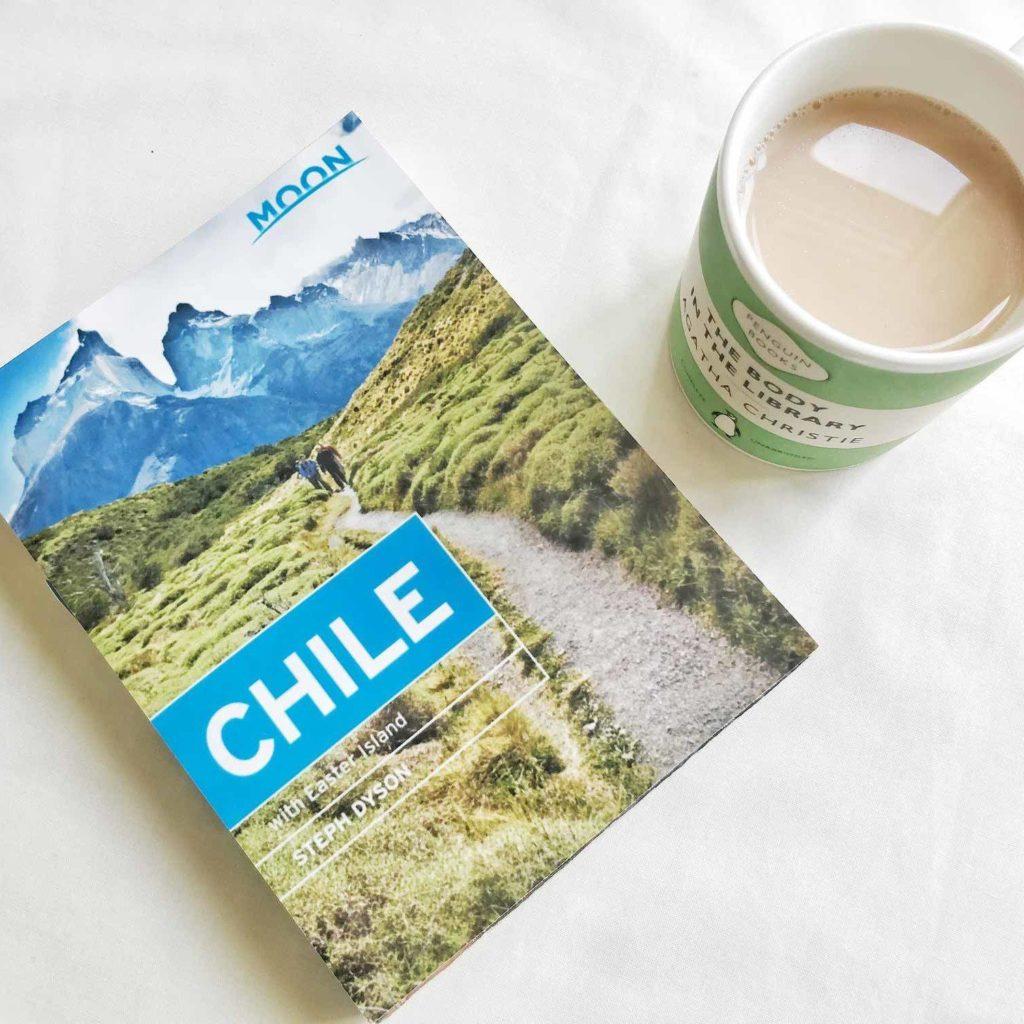
Need more inspiration?
You’ll find even more detailed itineraries, off-the-beaten-path gems, hiking routes and accommodation, restaurant and tour recommendations to suit your travel style in my brand-new guidebook, Moon Chile.
I’ve trawled the entire region, hiked many of its most acclaimed trails, slept beneath expansive, unpolluted night skies, and traveled by boat to almost the very tip of the South American continent.
All of this information has been used to inform this Patagonia travel guide and I’ve included links to plenty of other articles on Worldly Adventurer that have further details to help you in your trip planning.
In this guide, you can expect to learn about how to actually get to Patagonia , the best times and places to visit, and how to travel or backpack through the region on a budget . I’ve included as many details as possible to save you time, money, and stress on your trip.
If you’ve got questions, don’t hesitate to comment below or drop me an email .
Planning Your Trip to Patagonia?
Save time, stress & money with a customized travel itinerary planned for you by a Patagonia expert
What previous clients have said:
“It’s refreshing to find someone with insider knowledge that can take you off the beaten track, away from the mainstream. I particularly liked the detail you give; where to stay and your favourite places. We stayed in some lovely places because of your knowledge, places that we would probably never have found. I also liked the fact that we could ask you questions whilst on the move. Lots to like Steph!”
Why go to Patagonia?
Patagonia is a hiker’s paradise.
Not only do you have the now world-renowned trails of Torres del Paine National Park in Chilean Patagonia, but across the border, Los Glaciares National Park is becoming an increasingly popular destination, particularly as visitor numbers to the Chilean national park rise exponentially each year.
But Patagonia is more than just hiking trails. Road tripping in Patagonia either along the Carretera Austral (Chile), through the wildernesses of Tierra del Fuego (Chile), or down Ruta 40 (Argentina) are equally memorable experiences.
Hitchhiking is another way of not only exploring Patagonia on a budget but also offers up incomparable chances to meet local people.
And then there’s the wildlife, ranging from elusive big cats to humpback whales and penguins and the vast glacier fields, where you can hike over millennial ice or even drink it in a cold glass of whisky.
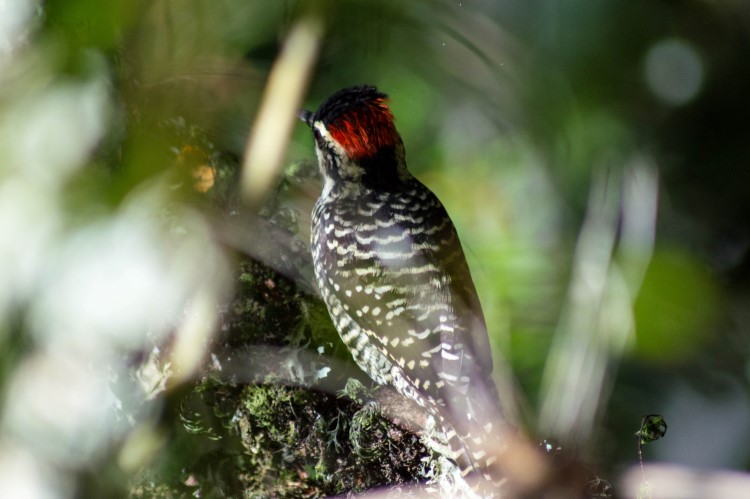
As a region so far removed from the rest of both Argentina and Chile, life here is unique. A local saying, “el que se apura en la Patagonia, pierde el tiempo”, sums up everything you need to know about Patagonia: “he who rushes in Patagonia loses time”.
To truly get under the skin of this region, time is what you need. At least a month is recommended for seeing as much of Patagonia as possible (you can read my recommended three-week and one-month itineraries here ).
However, a shorter trip still offers some time to experience the region (these one and two-week itineraries can help you plan).
Just be aware that you visit Patagonia at your peril; it’s the kind of place that you find yourself returning to over and over again.
As they say in Patagonia, if you eat the local Calafate berry (it’s particularly delicious in a pisco sour), then you’ll be back in the future.
How to plan your Patagonia trip
The following information is the product of months of travel in Patagonia and I hope you find it useful for planning yours!
I often get asked: “Do I need a tour to explore Patagonia?”. As the information below highlights, then no, it isn’t necessary to have a tour.
Argentina economy update
The Argentine economy is a huge mess at the moment, with inflation expected to hit 200% this year. Using Argentine pesos can therefore be a nightmare – and mean you lose a lot of money. The blue dollar (an unofficial exchange rate that gives you a better conversion than the official rate) is around, but if you want to avoid carrying lots of cash, you can now pay using your credit card and get an exchange rate similar to the blue dollar rate. You must choose to pay in Argentine pesos (not USD!) to secure this rate.
Both Mastercard and Visa give you what is called the MEP rate, which is almost as good as the blue dollar rate. Mastercard will charge you the official rate but refund you the money a few days later; Visa will charge you the MEP rate from the beginning.
If you do want to have some Argentine pesos for paying in cash (which I highly recommend as you will need them for some restaurants and attractions), it’s best to use Western Union, whereby you send cash to yourself using the Western Union app and then withdraw it in Argentine pesos from one of their branches in Argentina. Bear in mind, those in El Calafate and Ushuaia can run dry of notes, so it can be easiest to do this in Buenos Aires.
Additionally, you can bring USD (unmarked and untorn hundred dollar bills), which you can exchange at “cuevas” (unofficial exchange houses). These will be able to give you the blue dollar rate and any hotel owner will be able to tell you where your nearest one is. Souvenir shops in most parts of the country will be able to give you pesos in exchange for dollar bills – although they might not give you the best rate.
Avoid cash machines. Currently, the maximum withdrawal is the equivalent of $15 USD in Argentine pesos and it will cost you $10 USD in fees.
While Patagonia is vast and the logistics of organizing your trip can be complicated, ultimately it’s far cheaper to do so alone.
I have a whole section of the blog dedicated to Patagonia travel , so you can head there for further Patagonia travel resources and guides.
However, if you want more guidance, there are various options available to you.
Firstly, I offer a Patagonia trip planning service , where I plan your full itinerary for your vacation in Patagonia using my expert knowledge of the region . I’ve had 150+ happy customers since I started offering the service in 2018 and can guarantee that the service will save you time, money and stress.
If leaving all of the planning and booking to someone else sounds even better, I have partnerships with local companies where you can get a discount for being a Worldly Adventurer reader:
- Chile Nativo can organize private trekking tours in Torres del Paine National Park (great if you’re struggling to book accommodation last minute) as well as across Patagonia. They offer a 5% discount and you need to use the discount referral code “Worldly Adventurer” when you book. Find out more here .
- EcoChile Travel run fully custom-made tours across Chile and Patagonia, organizing every step of the process. They also offer a 5% discount to Worldly Adventurer readers; just mention us when you enquire!
When to go to Patagonia
Patagonia’s extreme southern location means there are certain months of the year when it’s a better time to visit. However, when to travel to Patagonia depends a lot on what exactly you want to do there.
Although the exact limits of Patagonia remain debated (as it’s a region shared by two countries and not a nation), it theoretically starts at 41˚ south (Bariloche, Argentina) and ends at 56.5˚ south (Águila Islet, Chile).
As a result, snowfall is relatively common during winter, while blustering westerly winds are an issue throughout the year.
Patagonia in December through February: the Austral summer
The most popular time to visit Patagonia is during the Austral summer. Visiting Patagonia in December, January or February is when temperatures are at their highest, peaking at around 22°C (72°F).
However, because of the winds, which, are strongest in the summer and can hit up to 120 km/h (74 miles/h), the temperature can feel a few degrees cooler.
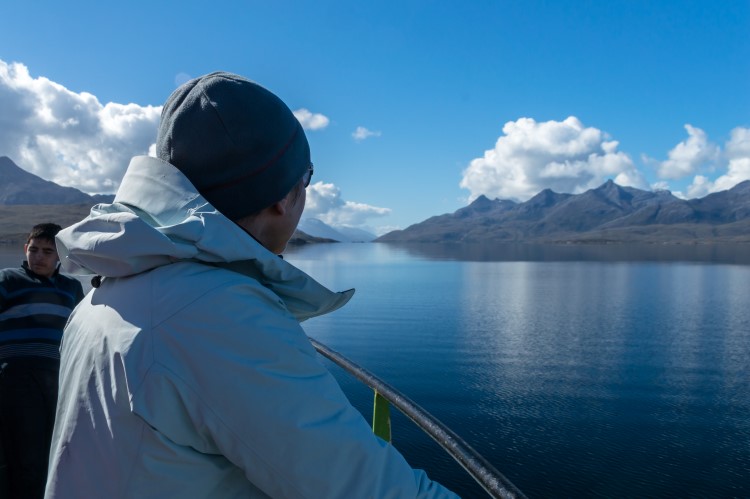
Weather systems also change rapidly, particularly in places such as Torres del Paine National Park, where you can often experience four seasons in one day: namely baking sunshine, cool breezes, rainfall, and even snow.
December, January, and February are also the best months for hiking and other outdoor activities in Patagonia, where it’s recommendable to wear layers, so you can layer up when it suddenly turns cold, or strip down if the sun comes out.
It’s also a good season for wildlife watching , as penguin colonies at Magdalena Island (Isla Magdalena) near Punta Arenas, Punta Tombo near Puerto Madryn and at Bahía Inútil on the island of Tierra del Fuego, arrive to nest from September until the end of March.
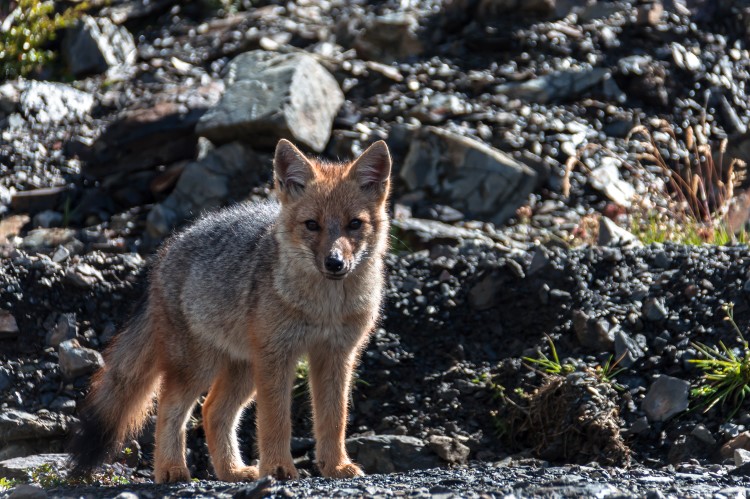
Humpback, minke and blue whales, Commerson’s and bottlenose dolphins, toninas (the Chilean dolphin), plus South American sea lions, and even otters can regularly be spied in the waters off the coasts of different parts of Patagonia.
Ferry journeys through Chilean Patagonia, such as the Navimag ferry from Puerto Montt to Puerto Natales or the boat between Punta Arenas and Puerto Williams offer excellent opportunities for seeing marine mammals.
However, these months are when everyone travels to the region. Patagonia in January and February is particularly busy , as this is when most Chileans and Argentineans have their summer holidays.
As a result, buses and accommodations get booked up, trails are heaving with hikers and for those who like a bit of flexibility in their travel plans, it can be difficult to visit the region without having reserved everything a good few months in advance.
Patagonia travel tip: You’ll need to book your accommodation and campgrounds in Torres del Paine, at least four months before you plan to hike. Reservations theoretically open in June/July but if you email the companies directly, you can often get a reservation before this time. Get more information about organizing the Torres del Paine W trek without a tour .
Patagonia in September to November and March to May: fall and spring
I’ll admit that I’ve never traveled to Patagonia during the peak Argentinean and Chilean summer season.
Instead, I’ve always opted for the shoulder season: September through November and March through April.
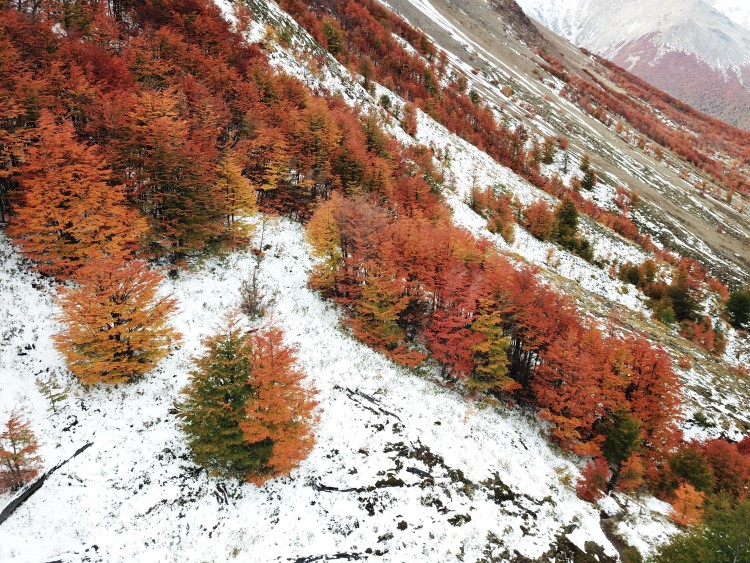
The reason for this is that for me, the magic of Patagonia is in its sense of remote, untouched wildness – something that gets lost when it’s full of other tourists.
Personally, I think that the best time of the year to go to Patagonia is in the months that bookend the Austral summer.
Temperatures are still pleasant enough: in spring (October-November) temperatures hit up to 18°C (64°F) , while in fall (March-April) they hover around 10°C (50°F), although in my experience, when the sun’s out, it can feel a lot warmer.
Overnight temperatures can drop to below freezing during these months, so bring plenty of warm clothing if you’re going to be camping.
During both, rainfall is a possibility – but this is Patagonia: rainfall is always a possibility!
September and May are months that I would avoid if you’re planning on traveling independently, however . Both are just outside of the typical shoulder seasons and few, if any, tourist facilities are open during these months.
In Torres del Paine National Park, for example, you must hire a guide if visiting in these months, while trails in many other national parks are closed due to snow. The Carretera Austral can also be tricky because of snowfall and ice on the road.
In spring , the landscapes awaken to the prospect of a new year, with plants and greenery covering much of the mountainous west of the region, while in fall , it’s a great time for photographers as the lenga and Southern beech forests that cover much of Patagonia turn golden and orange with the approach of winter.
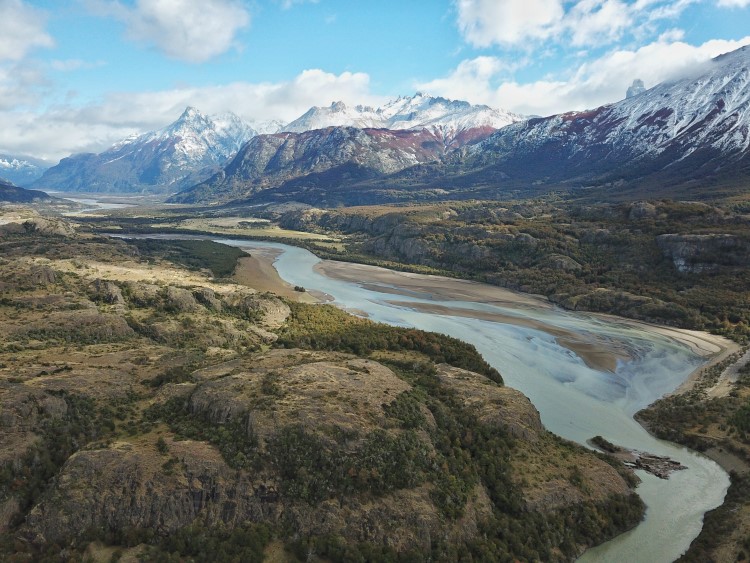
For both of these periods, crowds are fewer. Don’t underestimate the difference that this can make.
Following troops of hikers, 20-people deep, around the boardwalks of the Perito Moreno Glacier near El Calafate and elbowing them out of the way when you try and get a shot of the ice, isn’t personally my idea of fun.
Outside of peak season, accommodation and flights can sometimes be more inexpensive too and for the former, it’s often possible to even turn up without a reservation.
However, bear in mind that particularly in September and October and April and May, many restaurants, hotels and hostels, and tour agencies close for the year, meaning you might find yourself out of luck.
This is particularly the case along the Carretera Austral, where many of the towns seem to go into hibernation outside of summer.
Buses also return to their infrequent schedules, making a trip only possible if you have the time to wait sometimes a few days for the next one.
It’s also worth noting that winter sets in fast. On my first visit to Patagonia, I vividly remember shivering next to a wood fire in a hostel in Coyhaique despite wearing practically all of my clothes, so pack for cold weather.
Patagonia travel tip: Every time you arrive in a new place, you’ll want to double-check the bus timetables to be sure of when the next one is leaving. In spring and fall in Patagonia , you may find yourself waiting at least a few days for the next departure.
Patagonia in June through August: the Austral winter
Patagonia in winter is a unique experience. Heavy snowfall coats much of the region, particularly on the Chilean side, lending the landscapes a magical atmosphere.
As a result, traveling to and around Patagonia can be very difficult and you’ll find buses and even flights into the region have reduced timetables during the months of June through August.
What’s more, many hostels and hotels don’t have central heating and it can get seriously cold at night, even with access to a wood fire or gas heater.
Hiking trails can also end up being closed as snowfall and challenging conditions make them unsafe. In the last couple of years, Torres del Paine National Park has opened to tourists in winter, however, you must go with a licensed guide.
If you are planning to visit the park during this months, I recommend checking out Chile Nativo, a local operator who organize winter W treks (and give Worldly Adventurer readers a 5% discount if you use the discount referral code “Worldly Adventurer” when you book).
Los Glaciares and Tierra del Fuego national parks in Argentina are both open throughout the year, also be aware that trails often close due to snowfall and you can expect temperatures to drop to only a little above freezing during the day.
National parks along the Carretera Austral on the Chilean side are hard to visit in winter, mainly because much of the road (particularly south of Coyhaique) is unpaved and can be problematic after heavy rainfall or snow. Many of the lodgings outside of Coyhaique close for the winter.
However, Bariloche (theoretically the very northern tip of Patagonia – although this is debated ) is home to Cerro Catedral , Argentina’s top ski resort – and one of the best in South America. It has modern runs and lifts and plenty of places to stay during the night. You can expect snow between mid-June and September.
Patagonia travel tip: If you are planning on traveling to Patagonia in winter, I would recommend booking accommodation in advance, or at least confirming that hotels and other lodgings are available, as many close down when they don’t have guests.
How to get to Patagonia
The easiest way of getting to Patagonia depends on the side you wish to visit. Because Patagonia isn’t a country but a region divided between Argentina and Chile, there are various different ways to get to Patagonia.
Getting to Chilean Patagonia
Chilean Patagonia can be a bit of a headache to reach. Why?
You’ll notice if you look at the south of Chile on a map that the north of Patagonia (connected by the Carretera Austral – a road that goes from Puerto Montt in the north to Villa O’Higgins in the south) is actually separated from southern Patagonia by the Southern Patagonian Icefield.
This means it is virtually impossible to travel by road from Puerto Natales directly to the Carretera Austral.
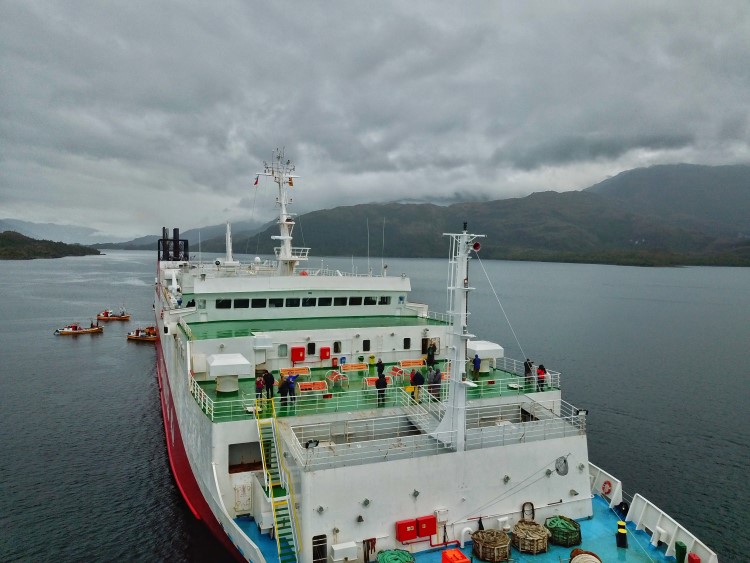
There are ways – which I’ll discuss shortly – but bear in mind that if you want to see both Northern Chile and Southern Chile, you will likely have to cross into Argentinean Patagonia at some point. More on that later!
There are various different options for getting to Patagonia from Santiago. The cheapest way to get to Patagonia from Santiago is generally by flying – although it depends on when you book.
I always recommend comparing prices on Skyscanner.com and then booking directly with the companies themselves. This means that if there’s an issue with your flight or the timings need to change, you can communicate directly with the company rather than an intermediary.
Where to fly into Chilean Patagonia
Flying into Patagonia is often cheaper on the Chilean side than in Argentinean Patagonia, as Chile has more budget airline carriers.
- Jetsmart is the most inexpensive, although it operates fewer flights than other companies and you often have to pay an additional fee for hold baggage.
- Sky Airline is medium priced and has regular flights into Patagonia and again, you pay more for hold luggage.
- LATAM generally has the highest frequency of departures but they’re generally far more expensive. Hold luggage is normally included in the price.
Northern Chilean Patagonia and the Carretera Austral
The easiest way to get to Northern Patagonia and the Carretera Austral is via a flight or bus from Santiago to Puerto Montt (PMC) , the latter a city located just at the top of the Carretera Austral and from where there are plenty of onward connections south. The flight time to Puerto Montt is around one hour and 40 minutes.
Flights to this part of Patagonia are operated multiple times daily by the country’s three main providers: Jetsmart (very cheap but with fewer flights), Sky Airline (medium priced and with regular flights), and LATAM (highest frequency of departures but expensive).
Often, if you book at least a month in advance, you can get flights for as cheap as $15,000 CLP ($23 USD) one-way.
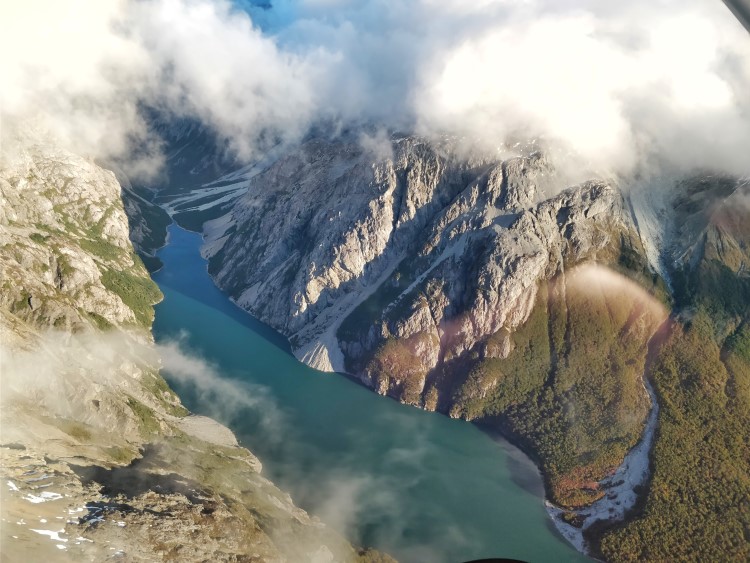
All three companies also fly directly from Santiago to Aérodromo Balmaceda (BBA), an airport about an hour’s drive south of Coyhaique , although Jetsmart only flies to this part of Patagonia between November and February (for prices as low as $7,000 CLP ($11 USD)). Be aware that the cheaper tickets may include a layover.
With the other two flight companies, there are only departures from Santiago to Aérodromo Balmaceda a few times per week and you can expect to pay anywhere between $22,000 CLP ($35 USD) and $66,000 CLP ($104 USD) one-way. Booking in advance is recommended for getting cheaper flights.
Southern Chilean Patagonia
Southern Chilean Patagonia has one main airport, Aeropuerto Presidente Carlos Ibáñez (PUQ ), a thirty-minute drive from the city of Punta Arenas .
There are normally around four flights daily in summer operated by LATAM, Sky Airline, and Jetsmart, and slightly fewer outside of these peak months, and the flight time to Punta Arenas is just under three hours 30 minutes from Santiago.
Flights can cost as little as $38,000 CLP ($49 USD) and up to $150,000 CLP ($164 USD) one way.
From the airport, it’s possible to pick up a direct bus to Puerto Natales or a transfer service into the city. The latter costs around $7,360 CLP ($8 USD) per person; minivans wait outside the arrivals hall for passengers.
A taxi should charge between $10,000 CLP ($11 USD) and $14,000 CLP ($16 USD).
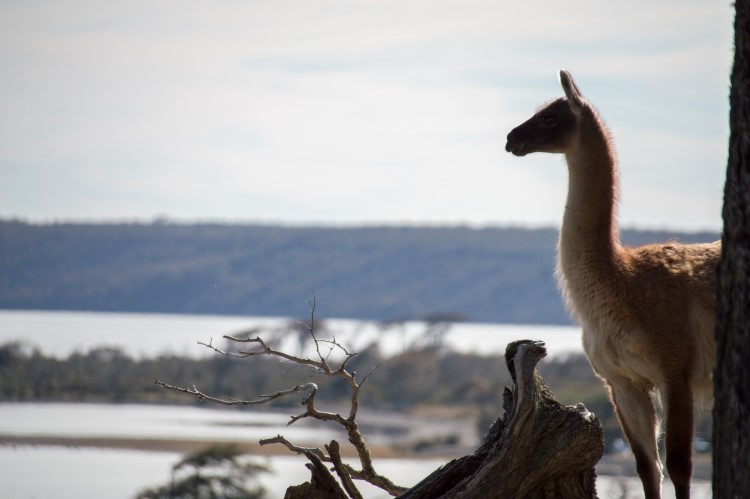
Aeropuerto Teniente Julio Gallardo (PNT) is a smaller airport, six kilometers north of Puerto Natales.
LATAM have flights here from Santiago between two and four times weekly in the months of November through March; flights are more expensive than to Punta Arenas and start at around $73,000 CLP ($80 USD) one-way.
A taxi into Puerto Natales from the airport should cost around $10,000 CLP ($11 USD).
If you’re hoping to continue your journey into Northern Chilean Patagonia and the Carretera Austral, there are weekly flights (normally on Tuesdays) operated by the small airline Aeriovías DAP between Punta Arenas and Aérodromo Balmaceda (near Coyhaique).
Patagonia flights tip: Try and book Chilean flights directly through the Chilean version of the LATAM website, not the US version. You’ll notice substantial savings if you do this; unfortunately, the Chilean website is only in Spanish.
How to travel to Patagonia, Chile by bus
Northern patagonia.
Buses can often be the cheapest way to get to Patagonia, although flights can be even better for your budget if booked in advance.
To get to Patagonia from Santiago , take a bus from the Terminal Sur in Santiago, where you can find overnight buses to Puerto Montt ($18-27,000 CLP ($20-30 USD) semi-cama , $78,000 CLP ($85 USD) salon cama ; £95,000 CLP ($104 USD) Premium , thirteen hours), from where buses and boats continue south.
Food is not normally included in this service and if you want a better night’s sleep, shell out the couple of extra thousand pesos for a cama seat (a 160˚ recline and with more legroom) or the Premium (the new 180˚ recline) rather than for the semi-cama service (a 140˚ recline).
There are generally working toilets on board, although aim to not reserve a seat right next to one! It’s also wise to take hand sanitizer and spare toilet roll as hygiene can leave a lot to be desired.
You can generally find space on buses the day before or even the day or travel, although be aware that holidays and between January and February see a lot more locals using the buses – and fewer tickets available.
Southern Patagonia
It used to be possible to travel by bus to Southern Chilean Patagonia. Services used to leave Puerto Montt and travel the entire length of Patagonia (normally via the Argentinean side) and arrive in Punta Arenas , 32 hours later. They used to cost about the same amount you’d spend on the same plane journey. I’m not surprised that they’re no longer operating!
Patagonia bus travel tip : Most bus companies in Chile are bringing themselves into the 21st century with bus timetables published online and where you can even book tickets in advance. The main bus companies with the most frequent departures along this route include: Turbus , Pullman Sur, and Cruz del Sur . Websites that collate the bus information and through whom you can also book include Bus Bud , which is also in English, unlike the others.
How to travel to Patagonia, Chile by boat
My personal favorite way of traveling to Patagonia is by passenger and cargo ferry. Similar to arriving by bus, this way of getting to Patagonia is the slow journey – the contemplative way of travel that mimics the arrival of the first indigenous and colonial people to the region.
There are two main companies offering ferry journeys into Patagonia:
The Navimag
The Navimag has one route: departing from Puerto Montt to Puerto Natales (four days/three nights; starting at $590 USD for bunk in shared cabin).
I’ve taken this journey and would strongly recommend it.
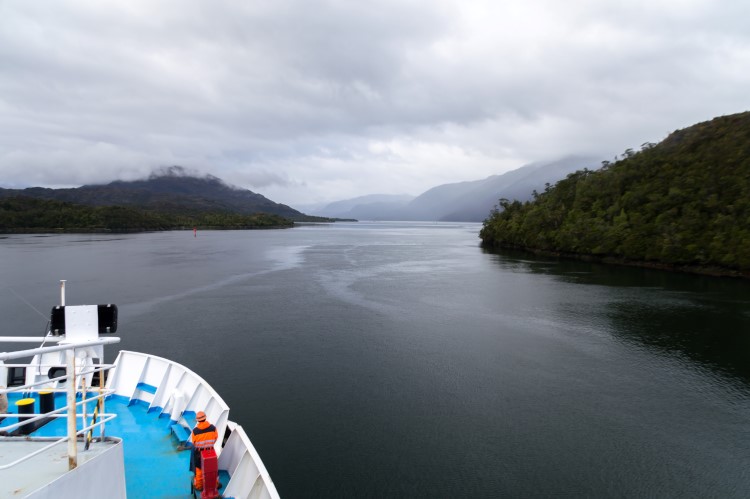
You can read up on the Navimag ferry to Puerto Natales for more price, itinerary, and general information plus a review of the experience.
The ferry is a cargo ship primarily and has been adapted to carry tourists so don’t expect a five-star, luxury cruise; instead, see it as a truly Patagonian adventure.
The Naviera Austral
The Naviera Austral has a selection of ferry routes that are used predominately by local people traveling around Northern Patagonia.
One leaves from Quellón in the south of Chiloé and travels down to Puerto Cisnes , about halfway down the Carretera Austral. This ferry leaves from Quellón on Tuesdays (6pm), Thursday (6pm) and Saturdays (5pm). You can buy tickets online or in their Puerto Montt office (Angelmó 1673). There are no cabins on this ferry, instead you purchase a chair, and you’ll need to bring your own food or make the most of the (limited) on-board cafeteria. It costs $29,000 CLP ($31 USD) for foot passengers and $170,000 CLP ($184 USD) vehicles and takes 12 hours.
Another ferry leaves from Quellón in the south of Chiloé and travels down to Puerto Chacabuco , further south along the Carretera Austral. This one stops at several small ports en-route, making it the ultimate ferry into Patagonia if you want to see the isolated fishing communities that still populate the edges of the fjords.
It’s cheap ($45,000 CLP ($48 USD) foot passengers, $290,000 CLP ($315 USD) per vehicle), long (31 hours), and you get a seat in the boat rather than a bed in a cabin. It leaves from Quellón on Thursdays and Sundays at 1am and again you can buy tickets online or in their Puerto Montt office (Angelmó 1673).
Read more about the Naviera Austral (scroll to about half-way down the article). Food is not included and you’ll want a sleeping bag or blanket to keep you warm overnight.
Patagonia boat travel tip : If you’re planning to travel to Patagonia in peak season (December through February), you’ll want to make reservations for these two ferries at least a couple of months in advance , particularly if you’re planning on taking a vehicle (both have space for cars). Bring plenty of warm, waterproof layers for time spent out on the deck watching the scenery and the wildlife pass; whenever you travel, the weather is likely to be changeable and often cold.
Getting to Argentinean Patagonia
Traveling to Argentinean is theoretically easier than getting to a lot of parts of Chilean Patagonia.
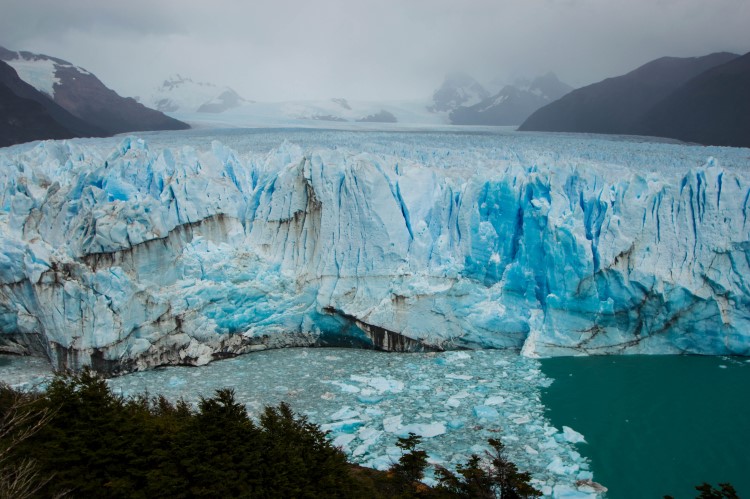
Well, on the eastern side of the Andes Mountains, the terrain is mostly pampa (flat grasslands). On the western side, it’s full of dense forests, mountains, glaciers, and fjords.
This means that bus travel from further north in Argentina is straightforward (if mind-numbingly long). Flights are also possible but generally more expensive than on the Chilean side.
Where to fly into Argentinean Patagonia
Unfortunately, flights in Argentina are expensive. However, if you’re on a short timeframe, they’re certainly worth it as they’ll save you from spending hours on the bus that could be used enjoying Patagonia.
From Buenos Aires to Patagonia you have three options of airports:
Aeropuerto Internacional Teniente Luis Candelaria (BRC) receives some five flights daily from the national airport, Aeroparque Jorge Newbury (note this is a different place than the international airport in Buenos Aires).
Your cheapest option is with Fly Bondi , a new low-cost airline in Argentina, who have two daily flights starting from $50USD. JetSmart often have similar prices.
Aerolíneas Argentinas , who are rubbish (they’re known for being delayed and losing luggage), also run this route and are the most regular carrier operating flights from Buenos Aires to Patagonia. LATAM also offers this route. Flight times are normally two hours.
El Calafate
Aeropuerto Internacional de El Calafate Comandante Armando Tola , just outside of El Calafate also has flights from Buenos Aires. The journey takes just short of three hours and costs from $114 USD one-way. LATAM also has flights but for around double the price.
Aeropuerto Internacional Malvinas Argentinas , a 15-minute drive from Ushuaia . Aerolíneas Argentinas and LATAM have five direct flights from Aeroparque Jorge Newbury to Ushuaia. One-way tickets cost from $140 USD.
From all three cities, there are plenty of overland travel routes into other parts of Patagonia (including the Chilean side) and flights.
Patagonia flights tip: Try and book flights directly through the Argentinean version of the LATAM website, not the US version. You’ll notice substantial savings if you do this; unfortunately, the Argentinean website is only in Spanish.
How to get to Argentinean Patagonia by bus
From Buenos Aires to Bariloche and the northern tip of Patagonia, it’s a 22-hour journey that can cost from $38,000 ARS ($108 USD).
From Bariloche, it’s a further 26 hours to 23 hours to El Chaltén ($62,000 ARS ($177 USD), where there are onward connections to El Calafate and Ushuaia.
Cama suites are the top of the range and include a 180˚ recline – like traveling business class. Cama ejectutivo or cama (160˚) and semi-cama (140˚ with little to no legroom) are the other two options and are progressively cheaper – and less comfortable.
When you book, double-check how far your seat reclines as these definitions vary between companies. A blanket and pillow are normally provided for cama suite and cama ejecutivo services.
Food (and even wine!) is normally provided on long bus journeys through Argentina but definitely check this when you book to avoid getting caught out – it can be a long time before you find yourself at a place where you can buy any food!
As with all bus journeys around Patagonia, take toilet paper and hand sanitizer as the bathrooms likely won’t be in the state that you would hope.
You can buy bus tickets in bus terminals in all cities, as well as online at Omnilíneas and Plataforma 10 . It’s worth booking a couple of days in advance for long-distance services.
Patagonia bus travel tip: Check before you buy how long the journey is as this can vary significantly between companies. Longer times indicate more stops along the route – something that can be a pain when you’re trying to sleep. It is worth noting that the Argentinian Peso exchange rate is very changeable so do double check prices closer to the time of your trip.
The best way to see Patagonia
So you’ve traveled to Patagonia; now what?
As we’ve already discussed, Patagonia is one hell of a big region and getting around (and planning how you do it) can feel like another mammoth task.
Let’s break it down into the easiest and best ways to see and get around Patagonia.
Best way to travel around Chilean Patagonia
Bus is the easiest way to get between cities in Southern Chilean Patagonia and also to cross into Argentina.
- Punta Arenas to Puerto Natales: Buses leave hourly between the two cities ($8,000 CLP ($13 USD); 3hrs 15mins) Bus Sur and Buses Fernandez have their own terminals in Punta Arenas and operate out of the Terminal Rodoviario bus station in Puerto Natales.
- Puerto Natales to Torres del Paine National Park: Buses leave at 7.30am and 2.30pm from the Terminal Rodoviario bus station in Puerto Natales and take two hours 15 minutes to reach the first stop in the park ($8,000 CLP ($13 USD)). For more information, read this guide to Torres del Paine and the W hike .
- Puerto Natales to El Calafate: Buses leave at least once daily for El Calafate in Argentina, operated by Bus Sur , COOTRA and Turismo Zaahj . The journey costs $17,000 CLP ($27 USD) and can take anywhere between five and eight hours, depending on the queues at the border.
- Punta Arenas to Ushuaia: Bus Sur have three direct services per week to Ushuaia.
In Northern Chilean Patagonia , buses generally leave every day between towns and cities, although buses traveling longer distances (such as directly between Coyhaique and Futaleufú or Chaitén), often only have once-weekly departures.
That said, it’s normally possible to hop on a bus traveling to the next town (and then onwards) or hitchhike .
The main bus companies in Northern Chilean Patagonia are:
- Kemelbus : daily services between Puerto Montt and Chaitén.
- Buses Cárdenas (tel. 9/4268 0432): daily services between Futaleufú and Chaitén.
- Buses Becker : destinations from Coyhaique north.
- Aguilas Patagonicas (tel. 67/2112 88): daily services from Coyhaique to Cochrane south and from Cochrane to Villa O’Higgins (via Caleta Tortel).
Read on for more information about bus transport along the Carretera Austral or get tips about hitchhiking safely in South America .
Patagonia bus travel tip: Book at least the day before, even for short journeys, between December and February. You may need to even book a few more days in advance between Puerto Natales and El Calafate. Recorrido and Voy Hoy can be useful for finding up-to-date bus timetables.
Some of the activities in Patagonia that I’ve most enjoyed have been the ferry journeys. Aside from the Navimag and Naviera Austral services into Patagonia, there are also a handful of boats that ply the waters around Patagonia.
The Yaghan: Punta Arenas to Puerto Williams
Off all the boat trips I’ve taken in Patagonia, I can honestly say that the TABSA-operated Yaghan ferry from Punta Arenas to Puerto Williams was my absolute favourite.
This 32-hour journey is aboard a converted cargo ferry that sets sail twice weekly from the Terminal de Ferry Tres Puentes in Punta Arenas, navigating south through the Strait of Magellan, into the labyrinthine, green-drenched Chilean fjords before joining the Beagle Channel and docking finally at Puerto Williams.
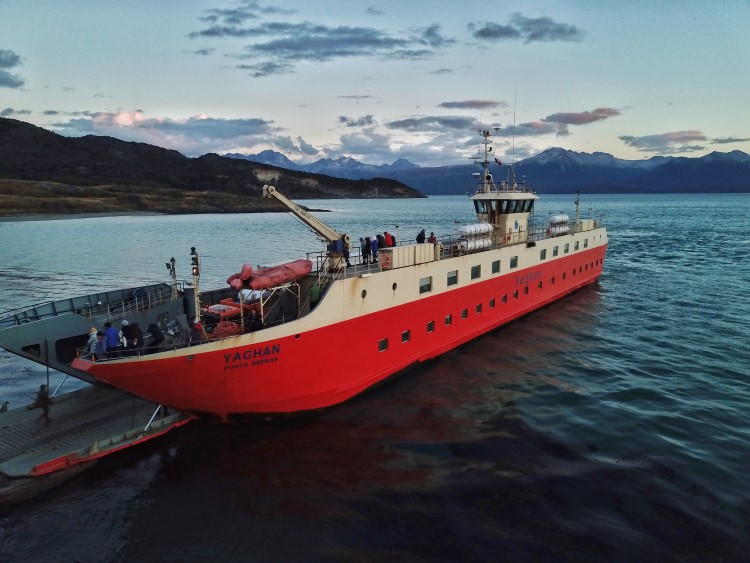
I boarded the ferry at the end of March and we had the most spectacular weather: blue skies and the calmest, crystalline waters that you can imagine.
Every few minutes we spotted more wildlife: Magellanic penguins floating atop the water; South American fur seals and sea lions shrugging their fins at us as they dipped in and out of the water; albatrosses cresting the boat; and finishing with a family of humpback waves leaping out of the water as we entered the Beagle Channel.
What’s more, the journey along the Beagle Channel is made even more spectacular by the fact that you pass mid-afternoon through Glacier Alley, a row of tidewater glaciers plunging down the edges of the Darwin Mountains and into the water.
Accommodation is more like a bus than a traditional boat. Foreigners booking in advance (something essential between December and March; aim for at least two months) pay $151,100 CLP ($237 USD) for a cama seat (180˚ recline with a separator between you and the person behind and in front).
Locals and those who snag a spot in the 24 hours before departure (obviously only if there is space left) pay $108,100 CLP ($170 USD) for a semi-cama (160˚ recline and a lot less space).
There are charging sockets on board, hot showers and three, three-course meals per day served in a poky downstairs dining area. They seemed able to cater to most dietary requirements as you’re required to indicate this when you book.
Be aware that while the return journey departing from Puerto Williams still promises stunning scenery, the boat passes through Glacier Alley late evening/in darkness. The journey from Punta Arenas south guarantees the best views.
Schedules change monthly and you need to book and pay online on the TABSA website . We left around 6pm in the evening from Punta Arenas and that meant that we were in front of Glacier Alley early afternoon, so bear that in mind when you book your ferry (later times may mean you pass the glaciers during the night).
The Cruz Australis: Puerto Natales to Caleta Tortel
Similar to the Yaghan, the Cruz Australis is a cargo boat that now carries passengers the 42-hour journey between Puerto Natales to Caleta Tortel, a town close to the southern tip of the Carretera Austral and terminating in Puerto Yungay, 43 kilometers east.
This vessel has faced few adaptations for tourists and is less comfortable: for example, the ratio of passengers to showers and toilets is somewhat lower and the food quality and quantity leaves a lot to be desired.
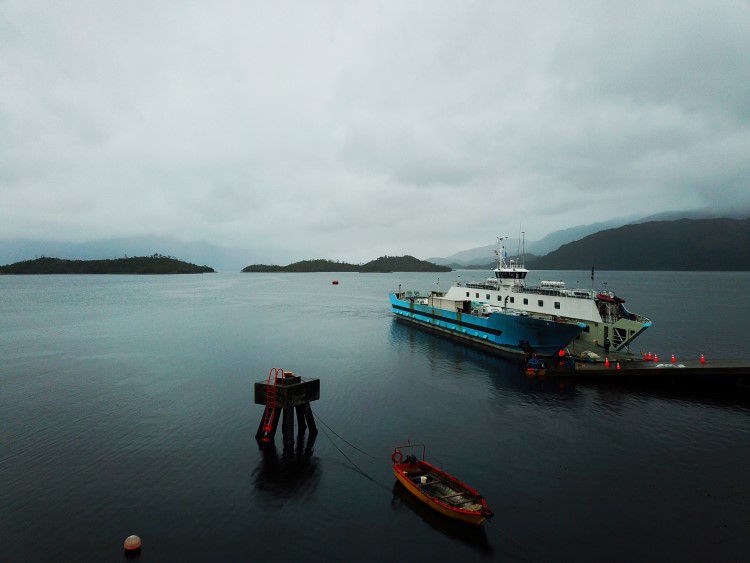
All seats are semi-cama (160˚ recline) and unfortunately, foreigners get to pay $125,160 CLP ($197 USD) per person, five times the cost for Chileans. Blankets are provided but it can get cold, so bring extra layers.
However, this trip feels similarly wild and provides an easy connection between Southern Chilean Patagonia and the Carretera Austral, particularly for those with a vehicle (at an additional cost) or who don’t fancy hiking with all their belongings between El Chaltén and Villa O’Higgins.
You also get to stop at Puerto Eden, a magnificent fjord-side settlement home to around 170 people, including the final members of the indigenous Kawésqar group.
The boat leaves weekly from Puerto Natales at 5am, although all passengers and those with vehicles are required to board the previous night. Three meals per day are included, although extra snacks are recommended as portion size and quality is not the best.
You can book and pay for this online directly through the TABSA website .
Patagonia boat travel tip: For both journeys, an eye mask and ear plugs to escape the pesky light and noise of the television screens, and a towel to make use of the hot showers in a small day pack is recommended; you’re required to leave luggage in a locked room off the main deck upon entry. You’ll get them back when you dock. You’ll also want warm, windproof, and waterproof clothes for time spent on dock watching the scenery go past.
Speedboats between Puerto Williams and Ushuaia
This journey isn’t exactly a ferry journey but is worth mentioning as it’s a useful way of getting between Chilean and Argentinean Patagonia.
Speedboats connect Puerto Williams (the southernmost Chilean settlement in Patagonia), with Ushuaia (the southernmost Argentinean settlement in Patagonia) by crossing the Beagle Channel, with a journey time of around 40 minutes and quite a high chance of spotting whales – we saw a group of humpback whales very close to our boat.
March 2023 update: No speedboats are currently operating between Puerto Williams and Ushuaia. I expect these to restart for the 2023/2024 season, however, I cannot currently confirm this.
The scenery is spectacular on a clear day because of the sharp, sky-spearing mountains that line both the Chilean and Argentinean sides of the channel.
Unfortunately, the journey is exceptionally expensive: $120 USD one-way, $220 USD return. It’s also really badly organized, particularly if you’re traveling from Puerto Williams to Ushuaia, not the other way around.
Boats leave daily Tuesday through Sunday, normally departing around 9am from the ports in Ushuaia or from the Gobernación building in Puerto Williams; boarding crossing formalities are conducted in both and you’ll be guided through the process by the boat staff.
Ferry tickets can be bought in Puerto Williams at Shila, a shop opposite the Gobernación building, or in Ushuaia from Seaboat , an agency located on the Muelle Turístic.
Ferries to Cape Horn
Finally, another popular boat trip in Patagonia is the journey to Cape Horn on Isla Hornos.
This island is mistakenly considered the southernmost point of South America, which is actually the Diego Ramírez Islands 104 kilometers south.
Either way, this trip has long appealed to adventurous tourists as the act of “Round the Horn” was considered the utmost test for sailors over the centuries when Cape Horn offered the fastest route around South America before the construction of the Panama Canal.
This barren, isolated island is inhabited by a member of the Chilean Navy and his family (although only for periods of up to a year) and you can visit with boats from Ushuaia or Punta Arenas, with the chance – if the weather conditions are optimum – to land on the island and visit the lighthouse.
There’s also the Cape Horn Monument, which was erected to honor all the sailors who died across the centuries by drowning in the fierce waves that lash the coastline.
Australis is the best-known company offering Patagonia cruise tours, with a focus on adventure over luxury – although their boats are notably more comfortable than the ferry journeys mentioned above.
However, they don’t come cheap and you can expect to pay $4,586 USD for two people sharing a twin room on a three-night, four-day cruise, including Glacier Alley, the penguin colony on Isla Magdalena, and Cape Horn.
If you’re more interested in a “local” experience (and still incredible views of Glacier Alley), I would strongly recommend the TABSA boat trip from Punta Arenas to Puerto Williams at a significantly more affordable price.
If you’ve got a shorter trip or don’t fancy spending a few days on a boat or bus, you can also take internal flights around Patagonia.
Connecting Southern Patagonia with the Carretera Austral, there are weekly flights (normally on Tuesdays) operated by Aeriovías DAP between Punta Arenas and Aérodromo Balmaceda.
This company also flies two times weekly (normally Wednesday and Saturday, only November through March) between Punta Arenas and Ushuaia and has daily flights (Monday-Saturday) between Punta Arenas and Puerto Williams.
Car rental in Patagonia
Renting a car or a campervan can be a useful way of getting around Patagonia at your own pace and having the chance to explore parts that few tourists see.
Car rental is generally cheaper in Chile than in Argentina and there are plenty of global companies here that add to the competition – and keep prices down.
One of the biggest issues I have faced with car rental in Patagonia and Chile, in general, is insurance. In this country, third-party, rather than fully-comprehensive, is the norm.
Some local rental companies won’t even allow you to add extra insurance on top of their basic policy – meaning that you’ll be required to pay anywhere from $700,000 CLP ($1,100 USD) to $950,000 CLP ($1,500 USD) as a security deposit (excess) when you book the car – and you won’t see any of that money again in the event of an accident.
This is perhaps more normal in the USA, but a shift from what you can expect if you’re used to renting in the UK or Europe.
I’ve previously used car hire excess insurance (sometimes known as excess damage waiver insurance) that protects you from having to use the security deposit to pay the excess if the car is damaged in any way.
This can cost as little as $50 USD a year (or less for one trip) and should prevent you from stumping up whatever excess is written into the insurance policy.
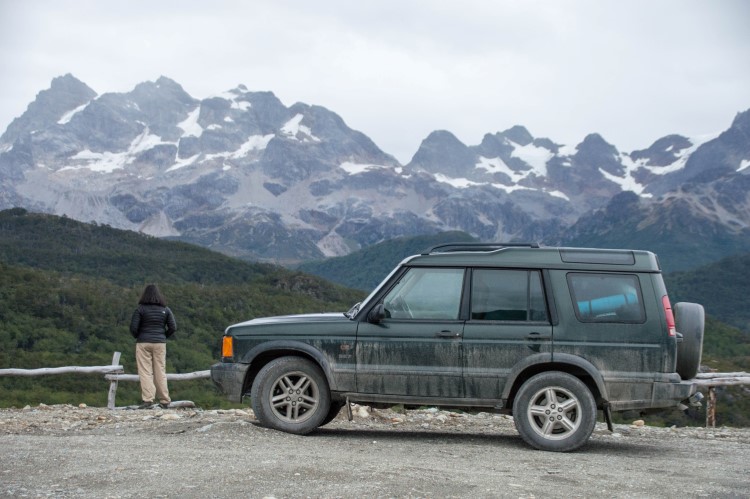
I’ve rented cars across Chile and I personally recommend using RentalCars.com as I’ve found them to be the most reliable and consistently offer the cheapest rental, with prices often starting at around $12,000 CLP ($19 USD) per day.
RentalCars.com link you up to budget car rental companies across Chile and also allow you to add on fully-comprehensive insurance when you book
I’ve rented a car in Patagonia through Europcar and Budget as well, however, I’ve always ended up paying an elevated price as I’ve struggled to rent vehicles through their Chilean websites as you often need a RUT (a Chilean identity document) to book – through their international website, prices are often significantly higher.
As a result, I tend to now go through RentalCars.com as it’s a) in English so you can be 100% what insurance you’re getting and b) in the event of an accident and where you need to claim money back from insurance, you can speak to someone in English – rather than Spanish.
For more tips and tricks, head to my guide to car rental in Patagonia .
Campervan and motorhome rental in Patagonia
If you’re planning a trip for one month or longer in Patagonia, renting a campervan can be a good way of saving money on accommodation and transport costs and will also grant you a lot more flexibility.
In Chile, the main campervan rental companies include:
- Soul Vans : rent vans from Santiago and Punta Arenas
- Wicked : rent vans from Santiago, Punta Arenas, and Puerto Varas in Patagonia
- Condor Campers : pick-up from Santiago, plus Punta Arenas and Puerto Varas (the latter of which you’ll be charged $380,000 CLP ($597 USD) to do so).
For motorhomes and larger camper vans , check out:
- Holiday Rent : pick-up and drop-off in Santiago or Punta Arenas.
- Andes Campers : pick-up only from Santiago or from other cities for a fee and with a limit of 250 kilometers daily.
Patagonia car and campervan rental tip: One-way fees (where the pick-up and drop-off are in different places) can be crippling, particularly if you plan on hiring a vehicle in Punta Arenas and dropping it off in Puerto Montt, for example.
If you’re traveling out of peak season, it’s worth checking out one-way deals offered by campervan rental companies.
These normally come about when they need to shift vehicles at the start or end of the season from one side of the country, and they will give you a significantly discounted price if you drive it for them.
The only problem is you’ll need to fit around their dates – but they won’t charge you a one-way fee. Check out Soul Vans , who sometimes offer one-way deals.
Rental car and van insurance in Patagonia
Theoretically, you need an international driving license to rent a car in Chile, however, I have never been asked to show this in two years of hiring vehicles here.
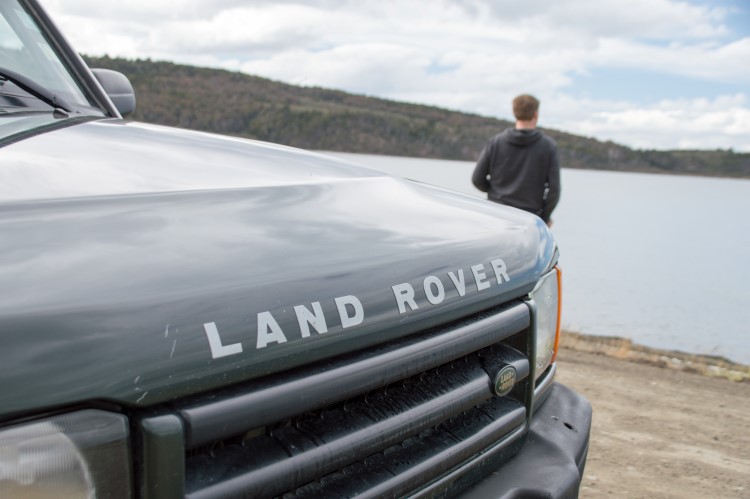
In addition to the obligatory car insurance for your vehicle, if you plan to cross the border into Argentina you will need a notarized document from the car rental company to legally allow you to cross:
- This costs from $70,000 CLP ($110 USD) to $130,000 CLP ($200 USD) and normally needs to be arranged between seven and ten days in advance of picking up the hire car. This should include third-party insurance in Argentina but double-check exactly what your insurance is going to be when you cross the border.
- An extra security bond may also be required by the rental company.
Things to be aware of when hiring a car in Chilean Patagonia :
- You may not be covered to drive on some roads in Patagonia if you rent a small, 2×4 vehicle. I was told when I was renting in Coyhaique that I could take a Chevrolet Spark, but it wouldn’t be insured for driving on the Carretera Austral! Therefore, you may be required to upgrade (at a significant cost) to a 4×4 if you want to drive outside of cities in Patagonia and on gravel or unpaved roads.
- Few companies offer tow-truck assistance if you break down in Patagonia . When it happened to me in Tierra del Fuego, we ended up waiting by the side of the road for about seven hours until they managed to get a new rental car out to us.
- Always carry plenty of food and drink and warm clothes in case of breakdowns. A Chilean and Argentinean sim (or one that works abroad) in case of emergency is also essential. I recommend Entel in Chile and Claro in Argentina.
- In COPEC gas stations (the most common type in Chile), you can normally find the “Rutas de Chile” COPEC map, which all of the COPEC gas stations in Patagonia marked . It’s worth investing in this as it’s good for map reading but also knowing where you can next buy gas.
- Driving along the Carretera Austral is hazardous not only because of the poor state of the roads (we’re talking building-sized potholes) but also the lack of care shown by other drivers on the road. Take it slow to avoid crashing around tight bends and dislodging pesky pieces of gravel that can do serious damage to windscreens.
- Always have your drivers licence, insurance papers, and passport on you in case you get stopped by the police. Chilean cops are not corrupt, so don’t ever attempt to bribe them. Just be polite and follow what they ask you to do.
- Knowledge of some Spanish will make your life easier when hiring a rental car.
Rental car and van insurance travel tip : If you plan to take a Patagonia road trip away from the main cities and into mostly uninhabited territories, such as Tierra del Fuego or into isolated parts of the Carretera Austral, it’s always essential to fill up your vehicle before leaving as fuel can be hard to find in some parts.
An additional fuel container (plastic is the only type allowed) is also worthwhile and you can often request these from your car rental company before you depart.
Best way to travel around Argentinean Patagonia
The Argentinean pampa is a lot easier to navigate than the Chilean side of Patagonia and bus transport is more regular and often more comfortable, making this probably the best way to travel around Argentinean Patagonia.
El Chaltén to El Calafate: From the Terminal de Ómnibuses in El Chaltén, Cal-Tur , and Chaltén Travel have five daily departures to El Calafate (three hours, $600 ARS ($22 USD)).
El Calafate to Ushuaia: TAQSA has daily buses between El Calafate and Ushuaia (16 hours, $2,000 ARS ($75 USD)).
You can buy bus tickets in bus terminals or bus company offices in all cities, as well as online at Omnilíneas and Plataforma 10 . It’s worth booking a couple of days in advance for long-distance services.
Domestic flights in Argentina are expensive, however, they can be useful when you’re on a short trip to Patagonia.
From Bariloche, Aeropuerto Internacional Teniente Luis Candelaria (BRC), Aerolíneas Argentinas have one flight per day ($103 USD; one hour 45 minutes) to El Calafate and one daily to Ushuaia ($104 USD; five hours 50 minutes).
From Aeropuerto Internacional de El Calafate Comandante Armando Tola , just outside of El Calafate, there are normally two flights daily to Ushuaia. The journey takes one hour twenty minutes and costs from $94 USD one-way.
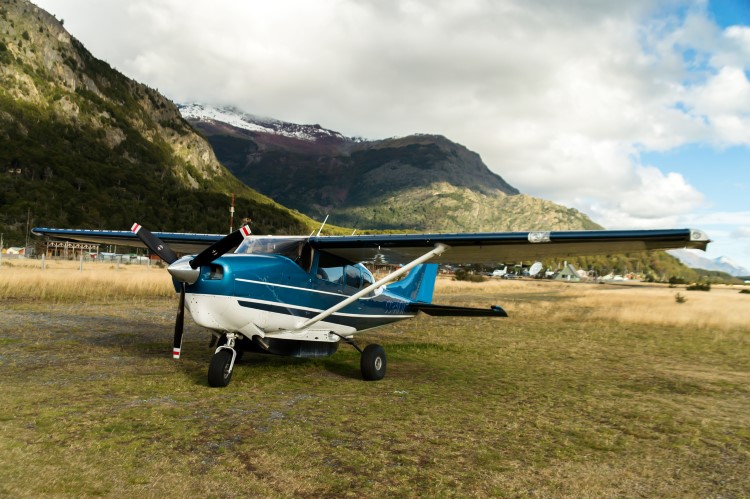
As mentioned above, Aeriovías DAP has twice-weekly (normally Wednesdays and Saturdays, only November through March) between Punta Arenas and Ushuaia.
Car rental in Argentinean Patagonia
All admit that I’ve never rented a car in Argentinean Patagonia. Want to know why?
Well, several reasons:
- It’s expensive, particularly when compared with Chilean car rental prices.
- Distances in Argentinean Patagonia are vast and actually, once you get out of the main tourist hubs (Ushuaia, El Calafate, El Chaltén), there’s not an awful lot to see that you can’t reach by bus. Puerto Madryn is the real exception to this – although you can get there by bus, it’s just a lot of hassle.
The only place I would suggest it makes sense to rent a car in Argentina is in Ushuaia as it makes it significantly easier (and cheaper) to visit Tierra del Fuego National Park, as you’ll save cash on the $20 USD per person bus fare into the park from Ushuaia, and you can tack on a day trip to Estancia Harberton and Laguna Esmeralda too.
However, if you do want to hire a car when you’re in Patagonia, I again recommend going through RentalCars.com where you can get a vehicle from $55 USD per day.
Things to look out for when hiring a rental car in Argentinean Patagonia :
- Be sure to read your insurance policy carefully to see whether you have third-party or fully comprehensive insurance included – again, another bonus of going with an international company such as this as all of the documents are in English.
- You may not be covered to drive on gravel or unpaved roads so confirm this when booking.
- If crossing the border into Chile, you will need additional insurance from the rental company . See above for further information.
- Check if you have a limit on how many kilometers you can drive per day . This is often capped at 200 kilometers (after which you’ll be charged extra per kilometer).
- You may be able to negotiate a lower rental price when you arrive to pick up the car.
- It’s worth photographing pre-existing damage to the rental vehicle to avoid arguments when you return it.
- Always have your driving license, insurance papers, and passport on you in case you get stopped by the police.
If you want to rent a camper van in Patagonia, I’d recommend going with a Chilean company.
Patagonia by train
Although train travel is perhaps the most romantic way of getting around Patagonia, travelers will be disappointed to hear that few of the lines that were once used to carry freight remain in operation.
The most famous is the steam-powered La Trochita, aka the 1922 Old Patagonian Express that found fame in Paul Theroux’s eponymous travelogue.
Nowadays, it only travels the short 20 kilometers to Nahua Pan, the first station on the train’s old route and back again. It costs $900 ARS ($33 USD) for the return ticket.
In summer, it leaves every Saturday, while in winter, it’s generally once a month. You can find out more information on the official website .
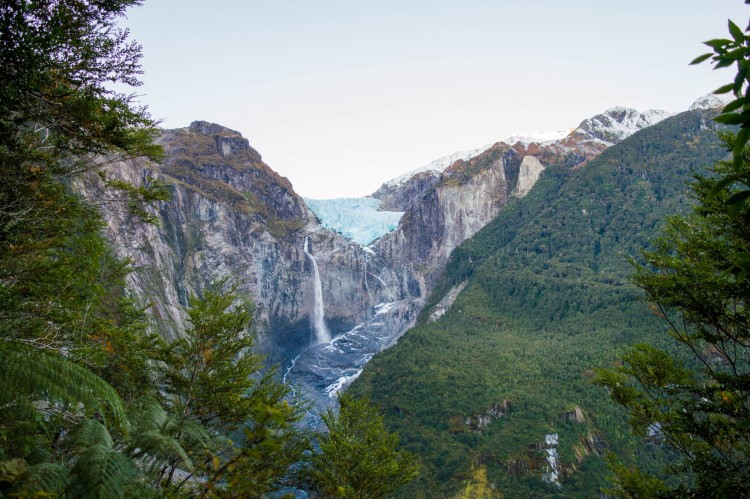
Patagonia road trip itinerary
Many travelers opt to hire a rental car or even buy a vehicle as a way of exploring Patagonia and having the flexibility to visit beyond-the-beaten-trail destinations.
If you’re hoping to plan a Patagonian road trip, I would recommend setting aside at least one month – but preferably more.
This will allow you to see the region’s most unmissable destinations without feeling like you’re on a strict time limit.
Unless traveling with a motorhome or campervan, you’ll want to pack decent camping equipment.
This includes a tent that can survive both the fierce Patagonian winds and the unrelenting rains (find out why I love the Big Agnes Copper Spur ) and a good cooking kit that can withstand both of these weather conditions too.
A spare petrol can, sat nav or map (I use the free maps.me as it has always worked very successfully for hiking and driving in Patagonia) and knowing how to change a tire are other essentials for a road trip through Patagonia.
In terms of itineraries, it depends where you plan to visit in Patagonia and how long you have to hand. I strongly recommend the following:
- The Carretera Austral: Chilean Patagonia’s ultimate road trip is from north to south along the region’s most isolated road. Construction started during the dictatorship and is still underway as this serpentine road is finally being fully paved – although there’s a long way to go. Highlights include Patagonia and Pumalín, two brand-new national parks that were brought into being by Conservación Patagonica (the late Doug Tompkins’ foundation); Caleta Tortel, a village connected entirely by wooden boardwalks; and the glaciers of the Southern Patagonia and Northern Patagonia Ice Fields. Read on for my complete travel guide to the Carretera Austral .
- Ruta 40 : Argentinean Patagonia’s most famous road is Ruta 40, a highway that actually transverses the entire country from north to south. The Patagonian stretch starts in Bariloche, slicing through the pampas as it bypasses El Bolsón, Esquel, Perito Moreno, El Chaltén, and El Calafate, before ending in Río Gallegos. It’s not for the faint of heart, with blustery winds and poorly-maintained roads making it one where you can’t drop your concentration for a minute, but it does promises exceptional views of the Andes Mountains and takes you along the region’s most interesting tourist hotspots. For tips on driving it, take a look at this article and this blog post .
- Tierra del Fuego: Another Patagonia road trip that you can take, although few people do, is into Tierra del Fuego. Plenty of travelers drive along the eastern half through Argentinean Patagonia and Ushuaia; however, the scenery on the western side, as a lone, unpaved road heads south from the ferry crossing at Punta Delgada, is sensational. Comprising angular mountain peaks (the final stretches of the Andes) interspersed with crystalline lakes and lenga beech forests filled with guanaco and foxes, this is the place to go if you’re looking for wild, untouched Patagonia. There’s little written about this on the internet yet, so you’ll have to stay tuned for when I write a post about it or you download my one-month backpacking itinerary , which already contains some key information.
Crossing the border between Argentina and Chile
Most trips to Patagonia involve quite a lot of border crossings, as you’ll likely want to move from Puerto Natales over to El Calafate, or from Argentina onto the Carretera Austral.
It’s not unusual to sometimes even cross the border multiple times in one day!
This is all perfectly legal, although you must ensure that you’ve got the necessary visa or pay a reciprocal fee where required (see these lists for Chile and for Argentina ).
Upon entry into either country, you are issued a 90-day stamp, which is renewed every time you cross in and out.
As I’ve indicated above, crossing between Argentina and Chile is relatively straightforward, however, in some cases, it is something that needs to be pre-planned.
Crossing the border with public transport
Crossing the Patagonian border can be a quick, stress-free process (somewhere between 30 and 45 minutes) or a frustratingly long one (various hours). In summer, queues at popular borders, such as Paso Río Don Guillermo (near Puerto Natales) and Paso Integración Austral (near Río Gallegos), can be very long.
If you’re on a public bus, you’ll be guided through the process by the bus driver, who’ll drop you off on one side of the border, wait for formalities to finish, and then allow you to re-board the bus, before taking you across the border and repeating this process.
The time spent at the border can also be increased by the fact that all luggage entering Chile is checked firstly by sniffer dogs and then put through an x-ray machine.
This is because you are not allowed to bring fruit, vegetables, or animal products with you across the border. The customs authorities are very strict about this and you can face a fine if you do attempt to bring any of these items and don’t declare them.
Whenever entering Chile, it is much better to declare everything and face having it taken off you, than run the risk of a large fine.
Theoretically, the Argentinean border control should check the same, however, I’ve never seen this happen, so you are generally fine to take food items if crossing in that direction.
Crossing the border with a rental car
To be legally able to cross the border in a rental car, you will need:
- A notarized document from the car rental company to legally allow you to cross.
- In Chile, this costs from $70,000 CLP ($110 USD) to $130,000 CLP ($200 USD).
- It needs to be arranged between seven and ten days in advance of picking up the hire car.
- Your car hire and this document should, theoretically, cover third-party insurance in Argentina but double-check exactly what is included in your insurance when you confirm the car rental.
There’s a great overview of the different stages of the border crossing here ; it’s from 2012 but the main information is still valid.
Patagonia border crossing tip: Aim to arrive at borders as early in the day as possible (although they normally don’t open until 8am: you can check opening hours on the official border website here . The Aisén and Magallanes Regions are the ones you want for Patagonia border crossings). Public buses begin to arrive from mid-morning onwards and that’s when the queues start.
Patagonia trip itineraries
If you’re looking for suggested travel routes through Patagonia, this is a subject that I’ve written extensively about.
One week in Patagonia travel itinerary
Although one week certainly isn’t enough to get the best out of Patagonia, you can just about fly from Santiago to Patagonia and squeeze in the W hike in Torres del Paine National Park.
Alternatively, starting in Buenos Aires, you can fly to El Calafate to admire the Perito Moreno Glacier, and spend a couple of days hiking in Los Glaciares National Park near El Chaltén.
For full details, read my one-week Patagonia travel itineraries article .
Patagonia in two weeks
Two weeks is definitely a better amount of time to dedicate to a trip around Patagonia. With two weeks, you can sail by ferry down through the Chilean fjords, before visiting highlights of the Carretera Austral (including the Marble Caves, Parque Patagonia, and the Queulat Hanging Glacier).
For hiking aficionados, you can spend just shy of two weeks hiking the O Circuit in Torres del Paine National Park, a challenging but worthy trek through untamed scenery.
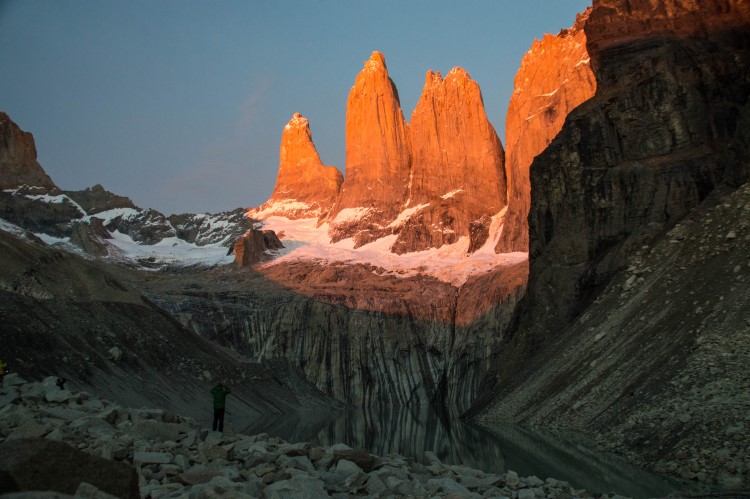
For full details, read my two-week Patagonia travel itineraries article .
Three-week Patagonia backpacking trip
With three weeks in Patagonia, you can hike the region’s best treks, including the O Circuit in Torres del Paine, various routes through Los Glaciares National Park near El Chaltén, and those in Tierra del Fuego National Park near Ushuaia.
Alternatively, you can day-trip into Torres del Paine, see the Perito Moreno Glacier, hang out in El Chaltén before hiking across the border to Villa O’Higgins in Chile, where you head north along the Carretera Austral, stopping at the Marble Caves, the Queulat Hanging Glacier, and Parque Pumalín en-route.
For full details, read my three-week Patagonia travel itineraries article .
One-month backpacking in Patagonia itinerary
Now we’re talking! With an entire month, you can just about see all of Southern Patagonia, both the Chilean and Argentinean sides.
You’ll arrive by ferry to Puerto Natales, hike the O Circuit, visit the Perito Moreno Glacier, hike in Los Glaciares National Park, head through Tierra del Fuego via a king penguin colony and explore the southernmost reaches of Chile before visiting Ushuaia and ending your trip with a visit to the volcanic landscapes of Pali Aike National Park.
For full details, download my one-month in Patagonia travel itinerary .
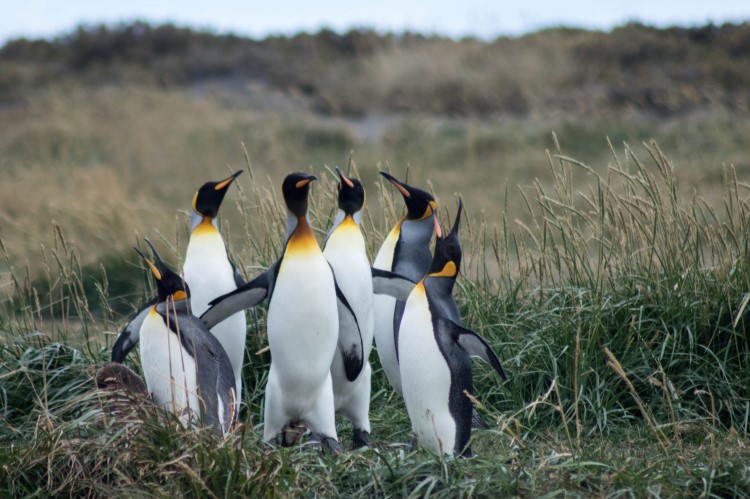
What to pack for Patagonia
Your packing list for Patagonia will depend a lot on what activities you plan to do on your trip.
- Your passport, with at least six months’ validity
- Your driving license (if you plan on hiring a car)
- Moon Chile and Lonely Planet Argentina
- In Patagonia
Day-to-day equipment
- Microfibre travel towel ; Check them out on REI | Amazon
- Flip flops or light-weight sandals; I’m a convert of Teva sandals ; they are lightweight and so comfortable. Check them out on REI | Backcountry | Amazon
- Hat, scarf, and gloves; I love the Buff headband that doubles up as a scarf too, check it on REI | Amazon
- Compression sacks for keeping everything ordered in your bag ; Check them out on REI | Backcountry | Amazon
- Universal adapter plug (Type C (Chile) and Type C and I (Argentina)); Check them out on Amazon
- Battery pack for charging your phone on the move ; Check them out on Amazon and REI
- Sturdy padlock for use with lockers in dorm bedrooms ; Check them out on Amazon
- Steripen for use in Argentina or on the trail; Check it out on REI | Amazon or read my honest review of the Steripen Adventurer
- Extra batteries (they’re very specific for the Steripen Adventurer, but aren’t required for the rechargeable Steripen UV Ultra); Get them on Amazon
- Nalgene reusable water bottle ; Check them out on REI | Backcountry | Amazon
- Medical kit for emergencies ; Check them out on Amazon or REI or you can easily put one together yourself
Hiking equipment
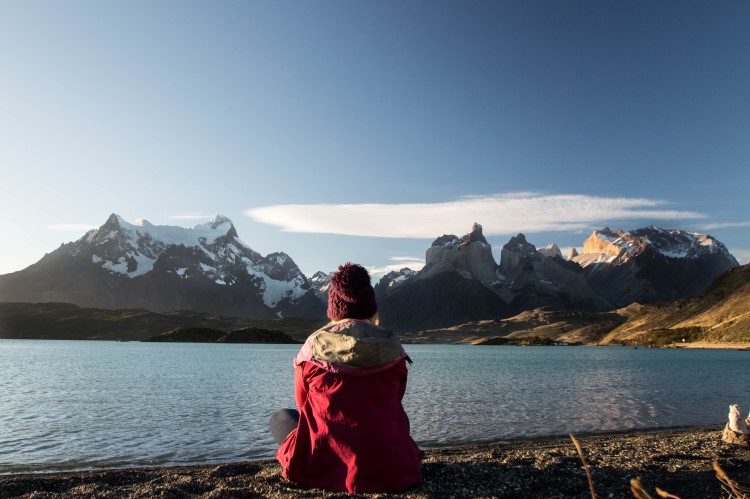
- Sturdy hiking boots ; I have a pair of Salomon hiking boots . Check them out on REI | Backcountry | Amazon or the men’s version on REI | Backcountry | Amazon
- “Inner” and “outer” socks to stop your boots from rubbing; merino wool socks are good as the thicker pair and they help to wick away moisture quickly from your feet: get outer socks on REI | Darn Tough | Amazon and liner socks on REI | Darn Tough | Amazon
- Trekking poles ; These can be invaluable as they can help take some of the pressure off your hips and feet when you’re walking. Check them out from Black Diamond on REI | Backcountry | Amazon .
- A lightweight but waterproof and windproof jacket; I love the Patagonia Storm10 Jacket as it’s an ultralight, easy-to-pack but fully waterproof jacket ( Patagonia ); the North Face Alta Vista Jacket ( Amazon | REI ) is significantly cheaper but offers good weather protection. For him: check out the men’s version of the Patagonia Storm10 Jacket on REI | Backcountry | Patagonia ; if you want something more affordable, the North Face Alta Vista ( Amazon| REI ) is a good shout. I’ve also heard great things about Arc’teryx ( REI | Amazon ) too
- Windproof and quick-drying pants if you plan on hiking in Patagonia ; prAna has a great range available on REI | Backcountry | Amazon ; for men, check out Columbia’s Silver Ridge pants on REI | Backcountry | Amazon
- A warm fleece jacket or down jacket ; Check fleece jackets out for women: Amazon or REI ; for men: on Amazon or REI . I also love my new Jack Wolfskin down jacket ( Amazon ), as it’s extremely warm and lightweight
- A day pack for day hiking ; I use the Lowe Alpine 22l day pack but for readers not from the UK, Osprey has excellent packs (for women REI | Amazon and for men REI | Osprey | Amazon )
- A 60-liter rucksack if you plan on hiking the O Circuit or other multi-day hikes ; I love Berghaus , but if you’re not in the UK, Osprey is again a far better option. You can check out Osprey rucksacks for women on REI | Osprey | Amazon and for men on REI | Osprey | Amazon
- Dry bags for keeping your electronics dry when it rains ; Check out Sea to Summit dry bags on REI | Backcountry | Amazon
- Hiking maps ; check out Trekking Chile : they have the best selection of hiking maps – something very difficult to find in Chile.
Camping equipment
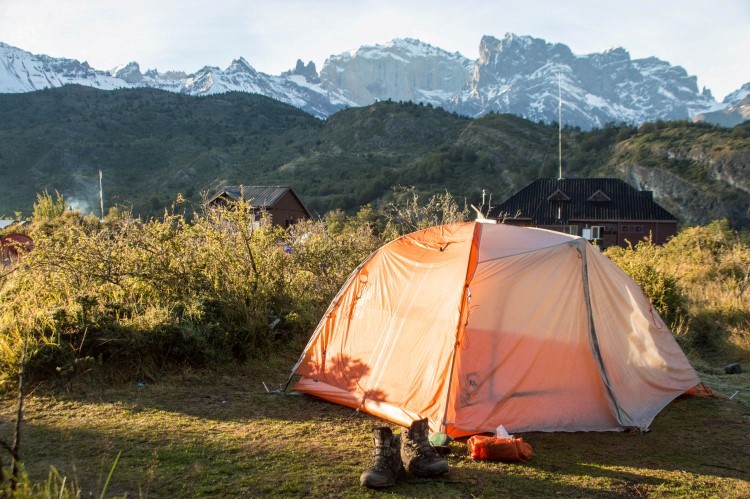
- Headlamp ; Check them out on REI | Black Diamond | Backcountry |
- A lightweight tent ; I recommend the Big Agnes Copper Spur HV UL2 ( REI | Backcountry | Amazon ). You can read my review of the Big Agnes Copper Spur too. The North Face Stormbreak 2 ( REI | Backcountry | Amazon )and roomier Stormbreak 3 ( REI ) are cheaper alternatives.
- Sleeping bag ; I recommend the Rab Ascent 700 Women’s (UK or Canada only) but if you’re in the US, for women, I suggest the Marmot Trestles Elite 30 (find it on REI | Backcountry | Amazon ); for men, the cheaper Marmot Ultra Elite 30 ( REI | Backcountry ) and the expensive Sierra Designs Cloud 800 ( Backcountry | Amazon ) both have rave reviews.
- Sleeping pad ; I really love the Alpkit Cloud Base sleeping mat but it’s not made it to the US yet. Instead, Therm-a-rest have a good line of affordable pads ( REI | Backcountry | Amazon ) or their Prolite is a more expensive and more comfortable option ( REI | Backcountry | Amazon )
- Lightweight and easy to clean cooking equipment; I recommend the MSR pots : check them out on Backcountry | Amazon
- A cooking stove that can survive windy weather ; I recommend the affordable and lightweight MSR PocketRocket ( REI | Backcountry | Amazon )
- Collapsible Bowl; Check it out on REI | Backcountry | Amazon
- Camping Mug; Check them out on REI | Backcountry | Amazon
- Spork; Check it out on REI | Backcountry | Amazon
Road trip equipment
- In car converter plug ; check them out on Amazon
- Copec “Rutas de Chile” map ; you can pick this up in most COPEC gas stations.
Get a full download of this list, with extra information about my reasoning behind my recommendations over at the complete Patagonia packing list .
How much does a Patagonia trip cost?
One of the biggest concerns for travellers to Patagonia is the cost of the overall trip. Patagonia is a notoriously expensive destination to visit, particularly when compared to other parts of South America.
As a rule of thumb, it is possible to backpack Patagonia on a budget of around $50 USD per day .
Staying in budget, dorm accommodation, self-catering and taking public transport, per day you can expect to pay:
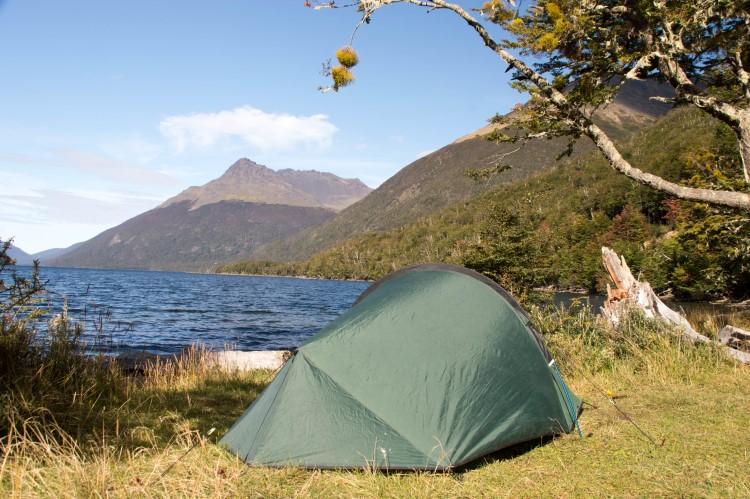
Two people, staying in budget, double accommodation, mostly self-catering and taking public transport can expect to pay:
However, don’t forget to budget in bus or boat transport or flying to Patagonia. Longer bus trips will cost more and you’ll need to budget for any tours that you take, which generally can be quite expensive. National park entrance fees vary, too.
If you plan on hiking in Torres del Paine, the cheapest you can expect to spend is $157,000 CLP ($190 USD): find out how to hike the W Trek without a tour and on a budget .
I’ve written a detailed article about traveling to Patagonia on a budget but these eight tips cover the main jist:
- Use cheaper, budget airlines such as Jetsmart, Sky Airline, and Fly Bondi for cheap flights into and around Patagonia
- Use the free Hopper app to find the best window of time for buying flights
- Hitchhike, cycle, hire a car between a group of you, or buy your own vehicle for the cheapest transportation in Patagonia
- Bring a tent and camp in local campgrounds or choose from budget hostales and residencials (basically local people who rent out rooms) or fully-equipped cabañas if you’re traveling in a group to bring accommodation costs down.
- Self-cater and buy food in big cities in Patagonia to make traveling to Patagonia cheaper – just don’t try and cross into Chile with anything fresh!
- Bring US dollars and make the most of a favorable exchange rate and discounts for paying in this currency
- Use Western Union for withdrawing money in Argentina. This allows you to get the best exchange rate (known as the “blue dollar”) and avoid Argentina’s rampant inflation. Full details here .
- Book in advance accommodation and destinations such as Torres del Paine National Park if traveling in high season
- Avoid unnecessary tours – just pack good quality equipment for your trip (see my recommended gear list for your Patagonia trip with a free checklist download)
For the full, in-depth guide, head over to my article about visiting Patagonia on a budget.
What to do and where to go in Patagonia
It’s probably become clear by this point that there’s a whole lot of stuff to see and do in Patagonia. I’ve spent months there and there remains a shit load that’s still on my list.
But I can condense what I think are the best, most unmissable things to do in Patagonia and so I’ve distilled my favorite destinations, organized by activity. You can also check out my guide to the best places to visit in Patagonia for further inspiration!
Where to go hiking in Patagonia
Torres del paine national park, chile.
Chilean Patagonia’s most famous park, it would be strange not to open this list with Torres del Paine National Park.
Although it’s possible to take a day trip into the park (either with a tour starting from $40,000 CLP ($63 USD) or by renting a car, both from Puerto Natales), hiking the five-day W or ten-day O Circuit is really the only way to appreciate the vast beauty of this dramatic national park.
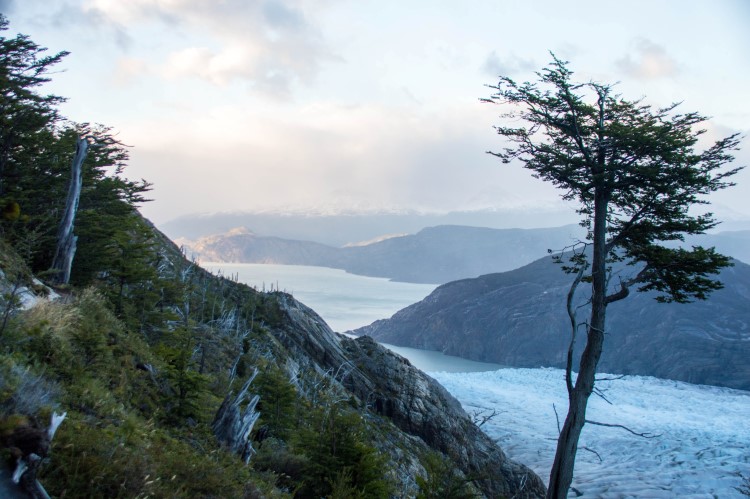
I’ve hiked both, and for me, the O wins easily. With the popularity of the national park increasing exponentially each year (around 250,000 people now arrive annually), the W is frustratingly crowded and this definitely took away a lot of my enjoyment of the hike.
Instead, the O Circuit has a limit of 70 hikers daily and while it’s challenging to carry food for ten or eleven days plus your camping equipment, the actual hike is accessible to even those with little experience.
You can also visit for a couple of days and enjoy day hikes in the park – which is great if you’ve not got much time or have missed out on making campground/refugio reservations for the W.
For further information, check out:
- Everything you need to know about the O Circuit
- Learn about how you can hike the W without a costly tour
- Find out what food to pack for both treks
- Read about the 15 best day hikes that you can do in Torres del Paine
- I’ve also written a lengthy, info-packed post about how to book campsites and refugios in Torres del Paine
- As well as what to do if there’s no space at the campsites for the dates you want .
Los Glaciares National Park, Argentina
Although it’s certainly lesser-known that its rival park across the border, Los Glaciares National Park in Argentina is a seriously beautiful place to go hiking in Argentina.
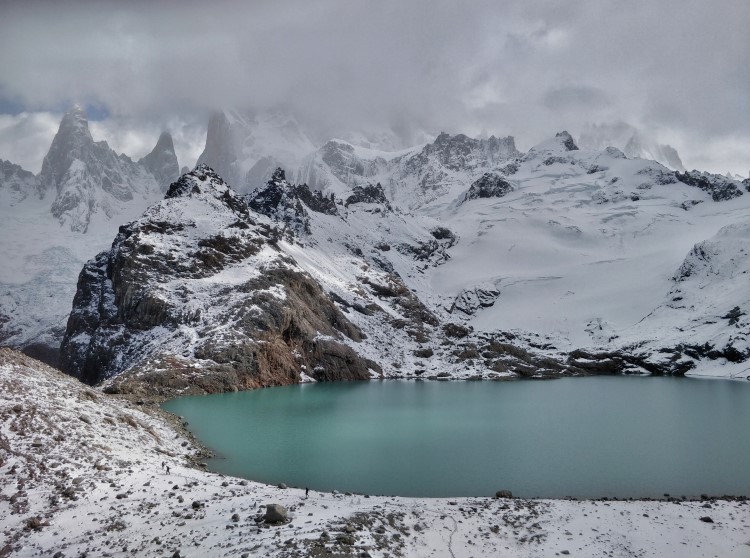
Part of the appeal – and what separates it from the increasingly more complicated-to-visit Torres del Paine – is the fact that this protected area has seventeen hiking trails. Many of these connect up and allow you to spend multiple days trekking through the park and camping at basic grounds, without having to return to nearby El Chaltén.
Alongside the challenging Laguna de los Tres, the most famous trek in the park, there’s also the increasingly popular Huemul Circuit, a 70-kilometer, four-day trekking that starts and ends in El Chaltén and affords spectacular views across the Southern Patagonia Ice Field.
The most detailed post I’ve found for those hoping to do this trek (I’ve not yet done it) is here .
This article from Lonely Planet is a more descriptive overview of what is quickly becoming one of the most sought-after Patagonian treks.
Tierra del Fuego National Park, Argentina
Another top hiking destination in Patagonia is Tierra del Fuego National Park . It’s only 12 kilometers west of Ushuaia at the very tip of Argentina, making it easily accessible for a day trip, although there are also a couple of campgrounds in the park if you choose to stay.
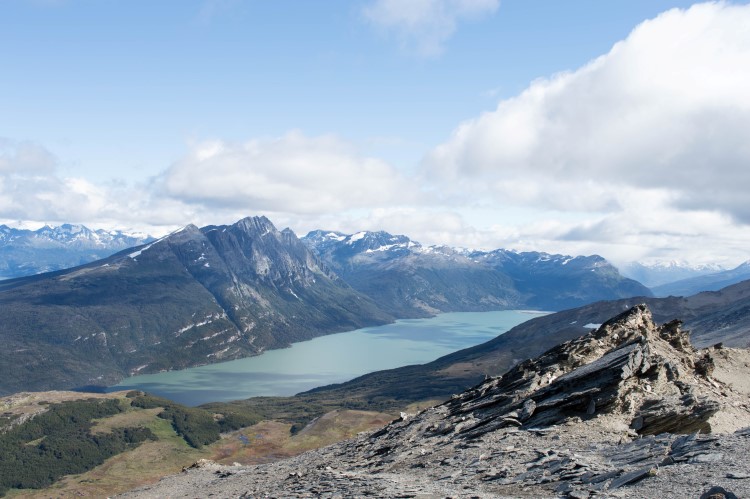
Hiking trails are less plentiful than in Los Glaciares National Park but the views from the Cerro Guanaco trail make it more than worth the visit.
It’s an eight-kilometer round-trip, but a grueling eight-hour hike in total because you ascend 973 meters in only four kilometers to reach a peak.
From here, expect panoramic views of the Beagle Channel below and views across to Puerto Williams, in Chilean Patagonia, when the weather is clear.
You’ll need to download a decent map (I always recommend the free maps.me where you can download maps for offline use) as the path sometimes disappears into a peat bog – and you’ll want decent hiking boots too!
The park is also a great spot for seeing the Southern Lights in Patagonia on a cloudless night.
Buses leave hourly from the terminal in Ushuaia, although, at $20 USD per round-trip ticket, if you’re in a group, it’ll wind up being cheaper (and faster) to rent a car in Ushuaia .
Pumalín National Park, Chile
A newly inaugurated national park, Pumalín was founded by billionaire philanthropist, the late Doug Tompkins (the former CEO of the North Face brand) and is possibly one of the best parks in Patagonia and proves that there’s more to hiking in Chilean Patagonia than just Torres del Paine.
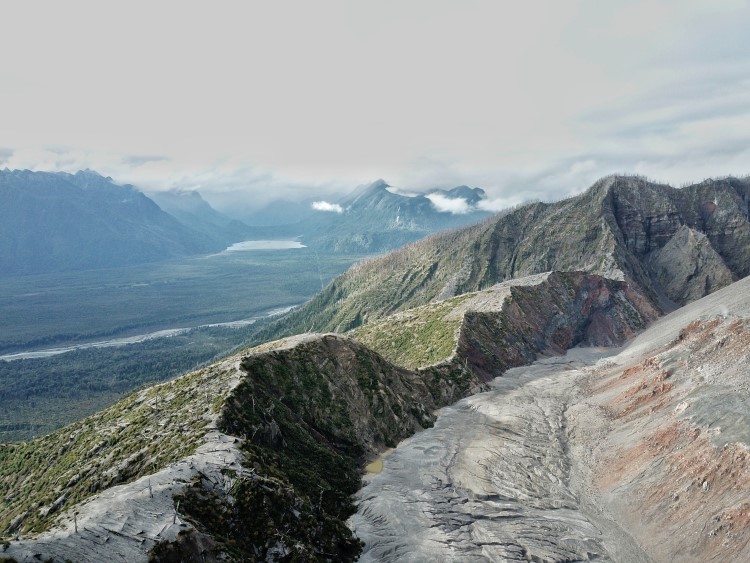
Loads of investment has gone into the park’s infrastructure, with around seven hiking trails ranging from short, easy wanders to day hikes. My personal favorite was the climb up to the crater of the imposing Chaitén Volcano.
It actually erupted back in 2008, burying the nearby town of Chaitén under lahars of ash and mud and forcing thousands to evacuate from their homes. The views down into the crater and, when the sun is shining, out towards the ocean, are spectacular from the top.
There are plenty of campgrounds in the national park charging $6,000 CLP ($9.5 USD) per person. Be aware that there is no public transport from Chaitén, so you either need to hitchhike, bring a car down from Puerto Montt or take a tour.
You can find more information about this on the park’s English-language website .
I highly recommend Chaitén Excursions run by the wonderfully knowledgeable US-expat Nicolás, who runs flexible tours that start from as cheap as $10,000 CLP ($16 USD) per person. He’s based in Chaitén.
Cerro Castillo National Park, Chile
Further south along the Carretera Austral, Cerro Castillo is another newly-inaugurated national park that converted from national reserve status back in October 2017.
The area is best known for the spectacular Laguna Cerro Castillo which is dominated by the sharp, torrent-like spires of Cerro Castillo itself (“Castillo” means castle).
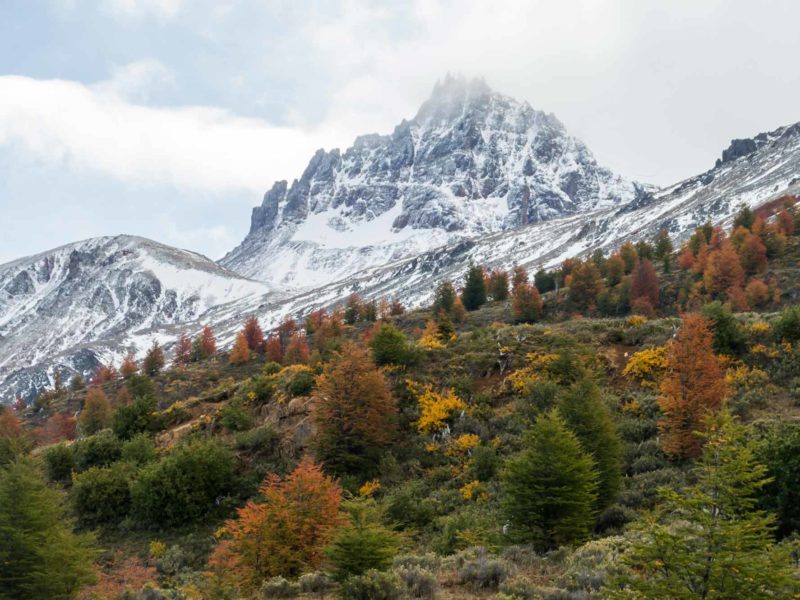
It’s a climbing, one-day hike up to the lagoon, although there’s a growing number of tourists choosing to opt for the 47-kilometer, four-day Cerro Castillo Traverse.
This starts in the east and cuts right through the park west, passing a series of viewpoints for glaciers and lakes, as well as the all-important Cerro Castillo itself.
The most complete guide to this four-day trek can be found via Adventure Alan and it’s a challenging hike but one you can do without a guide.
Patagonia National Park and Lago Jeinimeni National Reserve, Chile
I’m still debating over which is my favorite national park in Patagonia for hiking, but Patagonia National Park is definitely in the running.
Another Doug Tompkins-founded protected area, Patagonia has breathtaking scenery, covering everything from mountain-top lagoons to dusty, sun-scorched grasslands and even mountain traverses through river gorges.
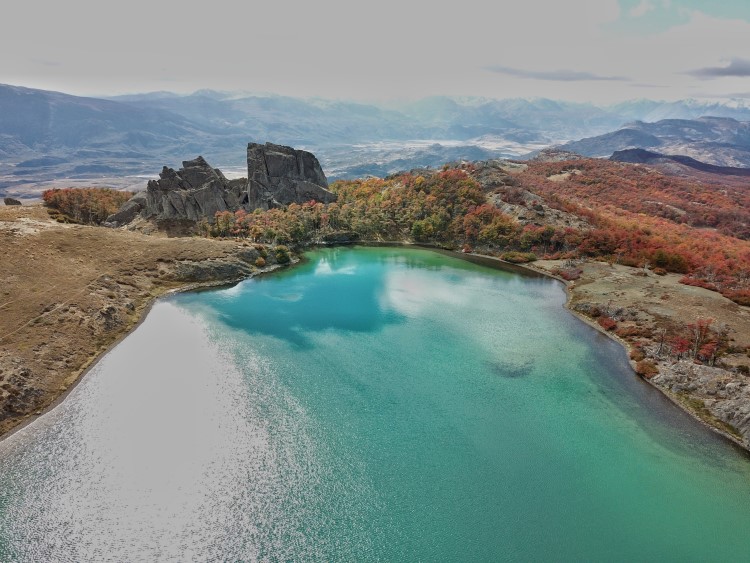
I only had the chance to hike the spectacular Lagunas Altas Trail. It’s a challenging 23-kilometer day-hike that ascends the south side of the valley in which much of the park is located, climbing into lenga forests past beautiful azure lagoons, before looping back down to the campground where you start.
There’s also the three- to four-day, 52-kilometer trek, known as the Traversía Jeinimeni-Avilés or Sendero Valle Hermoso-Valle Chacabuco, that crosses from Patagonia National Park into the Jeinimeni National Reserve.
For more information, the park’s website is especially detailed and even in English.
Where to go for spectacular landscapes and natural landforms
Perito moreno glacier, argentina.
Patagonia’s most famous glacier, Perito Moreno is an astonishingly large glacier just a few hours’ drive from El Calafate in Argentina.
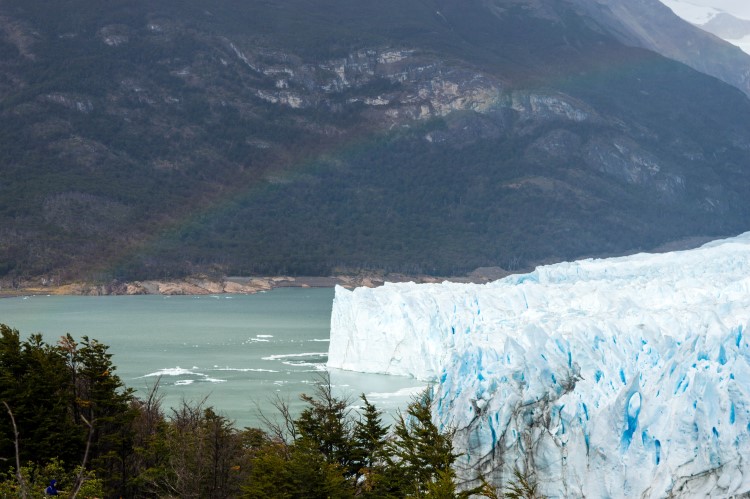
Although it’s certainly not the largest of the glaciers in Patagonia by any stretch, what is unique about this lump of millennial ice is how close to its snout you can get.
Not only are there wooden boardwalks that allow you to follow the main wall of the ice from left to right, just a few hundred meters from it, but you can also go via kayak or boat to see it from a completely different angle.
You can even join a trekking tour from $110 USD for an hour and a half on the ice, with one of the companies based in El Calafate.
It’s fair to say that the walkways get packed with visitors in the summer months, so if you want to avoid the hordes, plan to get the earliest public bus departing from the bus terminal in El Calafate ($24 USD return).
You’ll need $25 USD in cash (Argentinean pesos) for paying the entrance fee, too.
Find all the information you need about visiting in our guide to the Perito Moreno glacier .
Villa O’Higgins, Chile
It’s a three-and-a-half-hour drive or bus journey down to the very end of the 1,240-kilometre Carretera Austral to reach Villa O’Higgins.
This tiny, 600-inhabitant village is unremarkable; however, in the surrounding area, you can visit the bewitching snout of the O’Higgins Glacier, a 75,000-hectare and 38-kilometer-long slice of dense, compressed ice where spectacular bergs calve at frequent intervals.
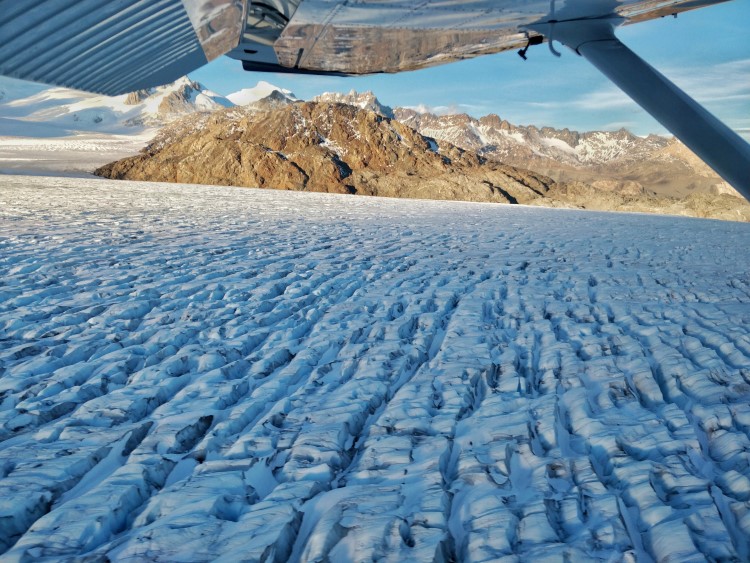
Unfortunately, the local operator running these tours closed during the pandemic. We’ll update this article when we find out who’s now offering this tour.
Glacier Alley, Chile
With its row of tidewater glaciers that hang precipitously over the waters of the Beagle Channel, Glacier Alley is one of those places that you have to pinch yourself to believe you’re actually seeing.
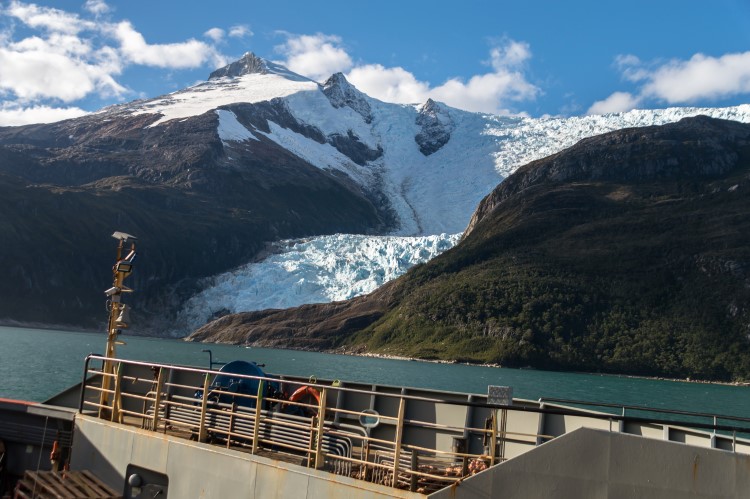
I’d long heard about these beautiful ice giants that are only accessible by ship but thought that my chances of seeing them were nil, as the main cruises that pass by cost well over $2,000 USD for the trip.
However, on my ferry ride between Punta Arenas and Puerto Williams, I realised that this magnificent view was one that I could actually afford.
I’ve written above about taking this very ferry, which normally passes mid-afternoon when the light is perfect.
The captain even slows the boat to allow you to take photos as the glaciers spill water into the ocean below, leaving a trail of milky-coloured, glacial meltwater to create beautiful patterns when it mixes with the saltwater below. See the section “ Best way to travel around Chilean Patagonia ” above for more information about visiting.
Marble Caves, Chile
The swirling, technicoloured patterns of the Marble Caves in Lago General Carrera are probably the Carretera Austral’s most famous sight.
Formed when the winds whip up the spray of the lake and erode the softer limestone, these grottos go back deep back into the rock.
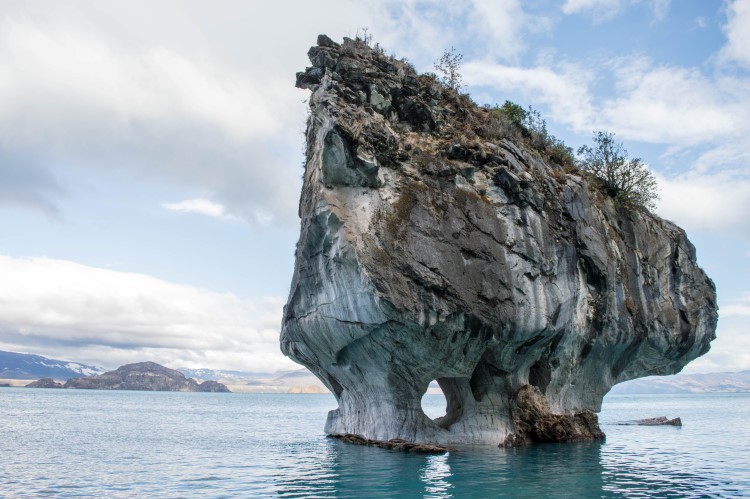
Surreal in their kaleidoscope colouring and only accessible by speedboat or kayak from the closest settlement of Puerto Río Tranquilo (which, in itself, is a good five hours in bus or car from the nearest airport), these caves feel even more special because of the lengths you have to go to experience them and definitely rank among the best places to visit in Patagonia.
The colour of Lago General Carrera changes with the light and pictures are best in the early morning. If you visit between April and June, when water levels are lower, you can pass right through the passageways in the caves and out the other side.
Expect to pay around $10,000 CLP ($16 USD) to go with one of the companies along the shoreline in Puerto Río Tranquilo.
Queulat National Park, Chile
Duck-egg blue and perched precariously on the edge of some mountains, the Queulat Hanging Glacier is an iconic sight along the Carretera Austral .
It’s accessed by an hour and a half’s hike from the entrance into the Queulat National Park, where you climb slowly through dense, evergreen beech forest to reach a mirador located directly across from the glacier – offering truly magnificent views.
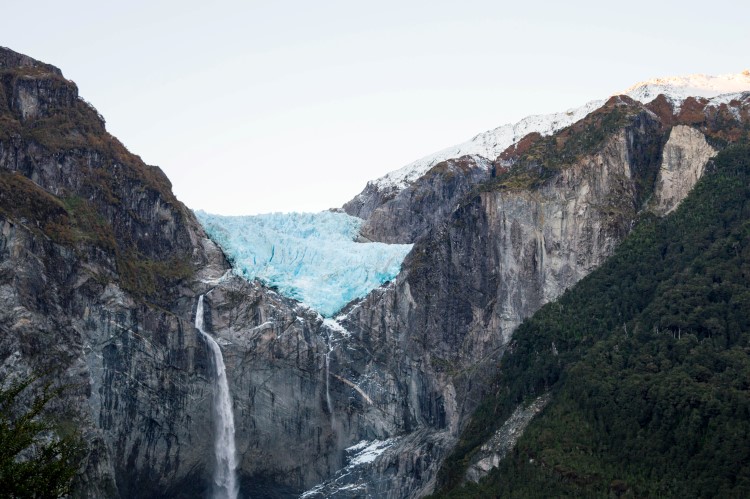
31 kilometres further south on the way to Coyhaique, the Bosque Encantado (Enchanted Forest) offers equally splendid scenery.
A 2.3-kilometer one-way trail climbs through a magical woodland of beech trees that drip with moss, before opening out to a moraine ridge where there’s a short climb up to an emerald lake filled by glacial meltwater spilling from the surrounding mountains.
Unfortunately, this part of the park is closed indefinitely due to a landslide.
Covid-19 update: You MUST make a reservation in order to visit the park. You can do this on this website , but you will need to pay in cash (bring small notes) upon arrival. You can only enter the park between 9:00am and 14:30pm (Tuesday to Sunday; you can stay within the park until 16.30pm) and you must bring your reservation code on your phone or printed off to show at the park entrance. Don’t forget your passport, which you’ll need to show to prove you’re not a Chilean resident.
The Queulat Hanging Glacier can easily be reached from a daily bus that leaves in the morning from nearby Puyuhuapi*.
*Because of the pandemic, I am not sure this is still running. Contact Turismo Experiencia Austral who used to run this service to confirm.
Where to go because no one else does
Caleta tortel, chile.
Caleta Tortel is a magical, fjord-side village almost at the very end of the serpentine Carretera Austral.
There are no roads here; instead, the village is connected by a series of cypress-wood walkways that hang above milky blue meltwaters, which drain from both the Northern and Southern Patagonia Ice Fields. This village is as close as you can get to a fairy tale in Patagonia.
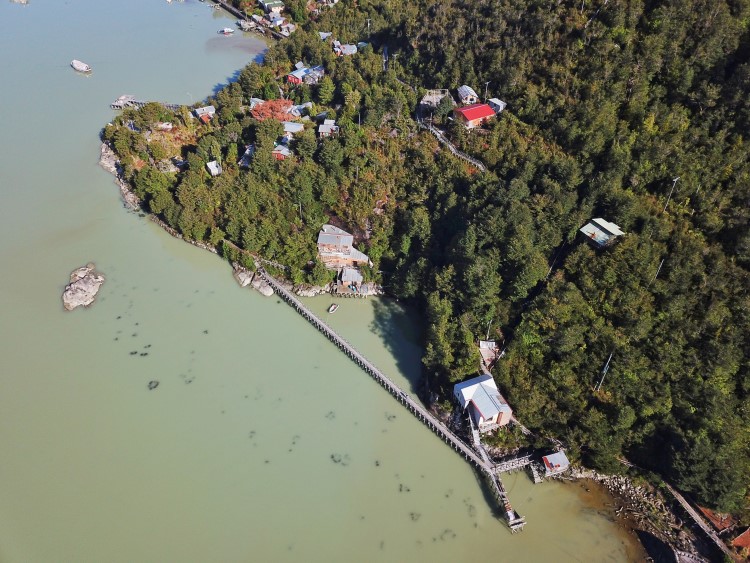
I fell in love upon arrival, as the sun lit up the pastel-hued waters and the morning dew sparkled on the wooden walkways.
From the town, local people run boat trips out to hanging glaciers and the mysterious Isla de los Muertos (“the Island of the Dead”).
Here, 33 crosses bear testament to the deaths of the first Chilean people who inhabited the region and who are thought to have been poisoned by the forestry company that employed them.
Again, Caleta Tortel is made more magical by the fact that it is so inaccessible. You can either take the ferry from Puerto Natales (described above) or arrive overland by frequent minibus services from Cochrane, the closest large town on the Carretera Austral.
Chilean Tierra del Fuego
Almost the polar opposite of the tourist-jammed Torres del Paine National Park, Chilean Tierra del Fuego is a true Patagonian wilderness. Practically empty of people – both locals and tourists – this is one of my absolute favourite places in Patagonia.
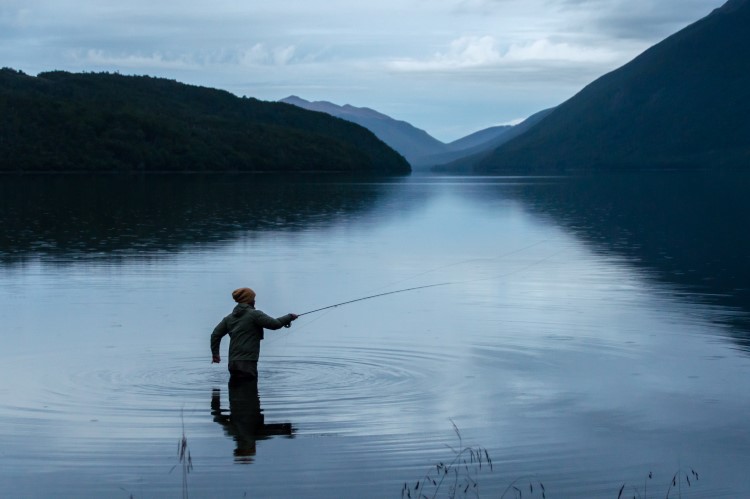
What makes Tierra del Fuego so tantalisingly refreshing for adventurous travellers is the fact that it’s very difficult to access.
To admire its king penguin colony (the only one in the Americas) you can get a tour from Punta Arenas, but to go deeper into its lagoon-dotted and peat-bog laden landscapes, where herds of guanaco shuffle through dense forests and beavers blink at you from road-side streams, you’ll need a vehicle.
Rent a 4×4 from Punta Arenas , pack a tent and enough food to keep you going, plus an extra fuel can, and you’re ready to go.
This is a subject that’ll I’ll be writing about in more detail in the future; however, in the meantime, if you want to learn more, you can download my one-month Patagonia itinerary .
Puerto Williams, Chile
Chilean Patagonia’s best-kept secret – in my opinion at least – is Puerto Williams. The world’s southernmost settlement (nope, it isn’t actually Ushuaia), this tiny community sits on the southern shore of the Beagle Channel on Navarino Island.
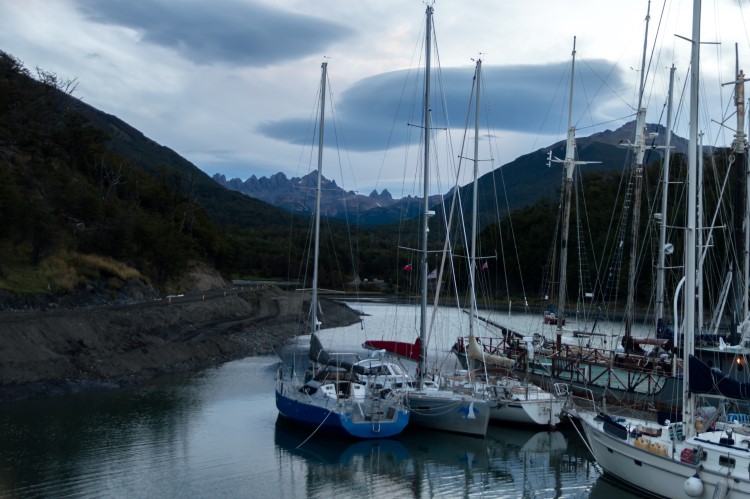
Puerto Williams is beautiful for its remote, wild feel. Horses roam the street aimlessly and most of the town’s residents belong to the Chilean Navy.
However, tourism is on the rise, helped in part by the excellent Museo Martín Gusinde , the most complete museum in Chile about the seafaring, indigenous Yaghan people who have all but been driven to extinction (the final clutch of remaining descendants still live here on the island).
But it’s also an increasingly popular place to go hiking in Patagonia, with the Dientes de Navarino trail picking up steam.
Certainly not for novice hikers, the 53.5-kilometer Dientes de Navarino is a difficult, five-day, four-night hike that circumnavigates the mountain range of the same name, passing through peat bog and bleak, exposed rockfaces.
Staggering views across Navarino Island and a feeling of being at the uttermost ends of the earth are included.
I didn’t get the chance to hike here and there’s still very little on the internet in the way of hiking guides. Wikiexplora have a pretty detailed guide, as do Best Hike .
If you want to hire a guide or just want some up-to-date information, get in touch with local trekking agency, Explora Isla Navarino .
Where to go for an extreme adventure
Futaleufú, chile.
In the north of the Carretera Austral and just on the border with Argentina, Futaleufú is one of Chilean Patagonia’s most picturesque towns.
Tucked within a river valley and surrounded by green-drenched mountains, this town, despite its remote location, is globally-renowned – all thanks to the Futaleufú River that rushes past.
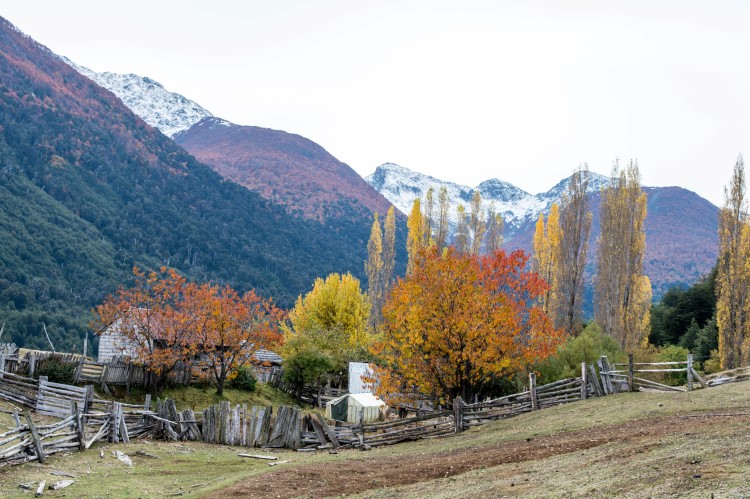
This thunderous river actually tumbles through 47 rapids, including class III and IV and the IV+ and is considered one of the best places for white water rafting in the world and it’s a great spot for experts and amateurs alike.
You’ll want to visit between November through March, although the end of the season has more stable weather conditions and higher water levels, meaning the rapids are even more gnarly and fun.
In the town, there are plenty of agencies that run tours (from $60,000 CLP ($93 USD)), most of whom have international guides and all of which speak excellent English. For the less water-inclined, there are plenty of nearby hiking routes too.
Exploradores Glacier, Chile
Although Perito Moreno is the best-known destination in Patagonia for ice trekking, the Exploradores Glacier, 25 kilometres east of Puerto Río Tranquilo on the Carretera Austral, is perhaps an even better place to do it.
You’ll get a wide-reaching panorama of the glacier and the Northern Patagonian Ice Field beyond from the mirador (viewpoint) at the start of the trek (and accessible for those not ice trekking), before hiking onto the glacier for a six-hour experience, climbing moraine boulders and through dripping ice ravines.
You can book onto a tour with a qualified guide in Puerto Río Tranquilo at a cost of around $70,000 CLP ($110 USD).
Want more inspiration? Read about my other top Patagonia highlights .
Where to stay in Patagonia
Types of accommodations.
Accommodation in Patagonia varies across the region and across Chile and Argentina. These are the main types of accommodation that you can expect to find.
Camping is popular among Argentinean and Chilean tourists, so you’ll find plenty of campgrounds in Patagonia for putting up your tent. If you’re budget backpacking in Patagonia, this is your cheapest option.
You can expect facilities to include showers (most often hot, but not always), taps with clean water and, the most important thing (for the locals at least!), barbecue areas.
Most national parks in Chile and Argentina also have campgrounds, although the quality of services vary with those in Torres del Paine National Park among the best and those in Los Glaciares National Park pretty poor.
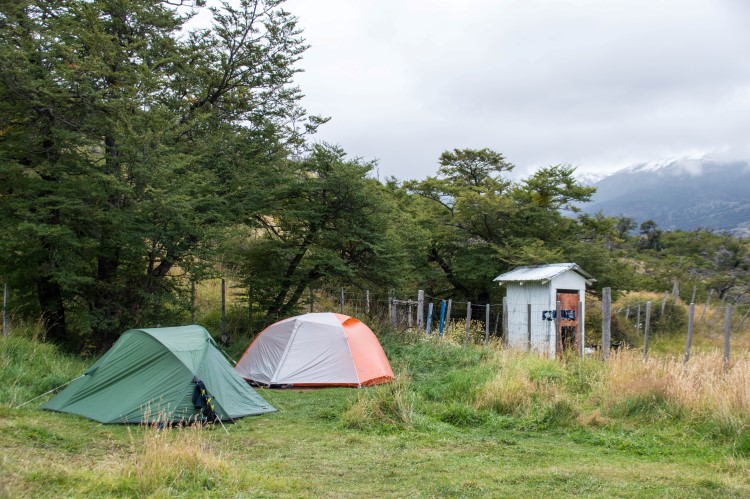
Prices start from upwards of $5,000 CLP ($8 USD).
You can also wild camp in Patagonia, and particularly on the Chilean side, although make sure to ask permission if you’re obviously on someone’s land (they’ll likely say yes) and don’t leave a trace .
In Argentina, the exposed nature of the pampa means there’s very little protection from the wind for your tent and you might not find it a particularly enjoyable experience being blown over in the night.
Wherever you camp, you’ll want a decent tent that’s lightweight enough for multi-day hiking trips.
I recommend the Big Agnes Copper Spur: read my honest review of the Big Agnes .
Hostales and Residenciales
Hostales and residenciales are some of the most common types of accommodation in Patagonia, although you’ve probably never heard of them.
Hostal doesn’t mean what we would call a “hostel”. It’s similar, in that it’s accommodation for travellers, although it’s rarely with shared bedrooms. Most are private, often with a private bath, and with access to communal areas and occasionally a kitchen. Breakfast is generally included in the price too.
A residencial is similar, but normally within the house of the owner and the facilities are often a lot more basic.
You can expect to pay from $12,000 CLP ($19 USD) for a single bedroom and $22,000 CLP ($35 USD) for a private in a residencial , and $18,000 CLP ($28 USD) for a single and $28,000 CLP ($44 USD) in a hostal , although outside of December through March, prices drop and you can often negotiate.
You rarely find these types of Patagonian accommodation on website such as Booking.com .
To reserve (something essential in summer), look for accommodation on Google Maps and contact the owners directly by telephone.
Cabañas
Among Chileans and Argentineans, cabañas (cabins) are the accommodation of choice.
Cabañas are normally pretty basic, wooden structures, comprising two or three bedrooms (they’re intended for large Chilean or Argentinean families), with a private bathroom, living room and well-equipped kitchen.
For a cabin for four people, you can pay anywhere between $40,000 CLP ($63 USD) and $80,000 CLP ($126 USD).
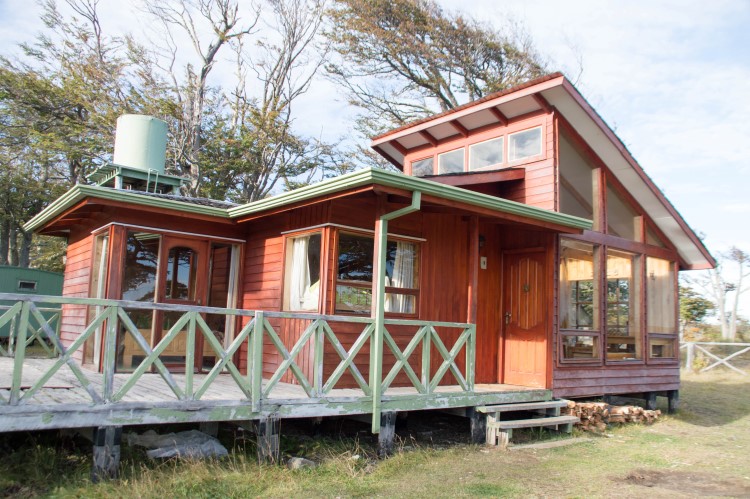
These make sense if you’re travelling in a group, although you’ll sometimes find owners open to a reduction in price for a couple, particularly if you’re travelling outside of December through March.
Again, an increasing number of Patagonian cabañas are appearing on Booking.com , but I’d recommend you also look up options in a given destination on Google Maps and, where possible, book directly with the owners for cheaper prices.
Hostels, in the traditional sense of budget accommodation with dormitory-style rooms, exist throughout Patagonia, although primary in the larger towns and cities.
They’re generally very comfortable, with facilities are as you would expect, with often a communal kitchen and communal areas available to guests.
You can expect to pay upwards of $13,000 CLP ($20 USD) for a dorm bed in a hostel. Privates start from anywhere above $25,000 CLP ($40 USD).
Hostels in Patagonia are best booked in advance in high season, as they can often be full with tourists. You can find them both on Booking.com and Hostalworld.com .
B&Bs and Hotels
There is a proliferation of increasingly comfortable B&Bs, and expensive hotels in Patagonia, with everything up to five-star properties in areas such as Puerto Natales and Torres del Paine National Park, El Calafate and Ushuaia.
B&Bs and other small guest houses often start from $45,000 CLP ($70 USD), while hotels range from this upwards.
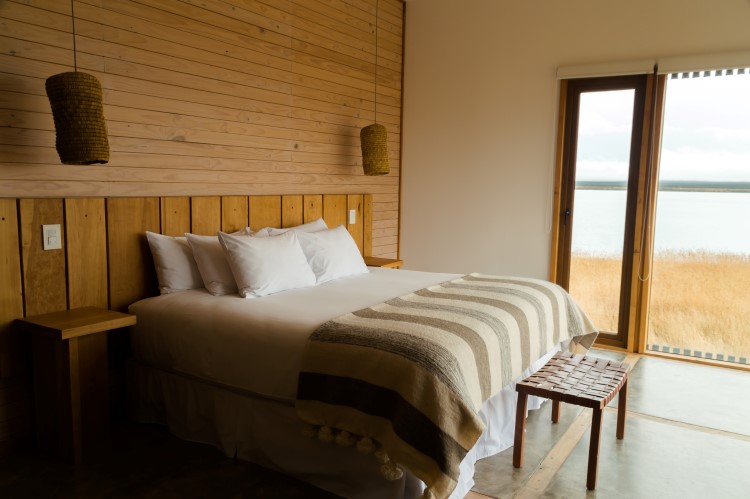
Again, if you’re heading on a short vacation in Patagonia, you’ll want to book hotels in Patagonia in advance in high season, at least a few months in advance for January and February. Again, you can find most on Booking.com .
Cost: $$$$+
Remote lodges have become a new trend in Patagonia and often offer the most exclusive, luxury accommodation and attention.
Properties such as Explora , Tierra Patagonia and Awasi (all in Torres del Paine National Park) offer complete services of hotel pick-ups, all-inclusive dining and private guides and transportation – but you’ll be paying at least $600,000 CLP ($940 USD) per night for this service, with a minimum of three nights standard.
Again, booking in high season is absolutely essential, as these properties are normally small and exclusive.
Booking accommodation in Patagonia
When I travel to Patagonia, I use a combination of advance booking through websites such as Booking.com (which I’ve found to have the most complete collection of accommodation in Patagonia advertised on it) and Hostelworld.com .
If you’re backpacking in Patagonia, you probably want to keep your plans flexible and this is generally possible, although be aware that you might struggle to find cheap or pleasant accommodation if you turn up to a town and start hunting then, rather than booking ahead.
When I’m travelling out of peak season (December through March), I’ll often book a couple of days in advance either through these methods or by finding properties on Google Maps and contacting lodgings directly by phone.
The issue with this latter form of booking is that you need to speak Spanish.
In peak season, I would recommend booking at least a week in advance for big Patagonia cities.
Be sure to bring US dollars with you as many types of accommodation offer tax discounts if you pay this way.
Where to eat or get food in Patagonia
Food in Patagonia is expensive, due to the fact that it needs to be transported down from further north in Chile and Argentina.
You can expect food to cost at 30% more than in other parts of the two countries.
Supermarkets in Patagonia
You can get most fresh fruits, vegetables and other goods in supermarkets in large towns or cities.
The best range and prices found in Punta Arenas and Coyhaique (and Puerto Montt before you enter Patagonia) on the Chilean side and in Ushuaia, El Calafate and Bariloche on the Argentinean side.
For places such as Puerto Natales, which does have a supermarket, but one that is poorly stocked, and El Chaltén, which doesn’t, stock up in the nearest city (Punta Arenas and El Calafate respectively).
In summer, supplies run out quickly and, particularly if you’re buying good for hiking the W or O in Torres del Paine, you’ll be surprised by how little you can find in Puerto Natales.
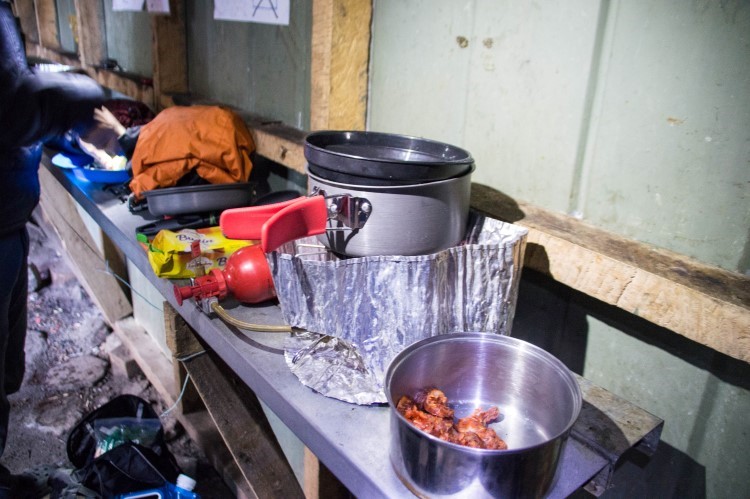
In smaller towns, such as those along the Carretera Austral, you will find mostly tinned goods, bread and some meat and cheese but you’ll struggle to find fresh fruit and vegetables.
You’ll also find prices significantly more expensive than in bigger supermarkets.
Large supermarkets generally always accept debit and credit cards and are normally open every day of the week until 9pm or 10pm, with shortened hours on Sundays.
Self-catering in Patagonia
If you want to keep costs down on your trip to Patagonia, self-catering is the easiest way. As I’ve mentioned above, you’ll want to stock up in bigger towns and cities.
Unfortunately, kitchen access is not a given with all types of accommodation, so I would recommend double-checking this before booking anywhere. Hotels very rarely have these facilities.
Campgrounds occasionally have stoves and cooking equipment, but this isn’t the norm; bring your own gear if you plan on camping.
If you’re after recommendations for light-weight cooking gear, check out my Patagonia packing list .
Remember that you cannot cross into Chile from Argentina with fresh fruit, vegetables or animal products, so avoid doing a big shop just before you cross the border!
Restaurants and dining in Patagonia
Dining on slow-roasted Patagonian lamb or a perfectly-cooked steak is the ultimate Patagonian dining experience, however it comes at a cost.
Restaurants are similar in price with those in Santiago and Buenos Aires, although quality is often much lower.
It’s not unusual to spend over $15,000 CLP ($23.5 USD) for a main and a drink in a medium-priced restaurant in cities across Patagonia and you can expect prices to not be much lower even in small, local restaurants in towns and villages.
However, cheap restaurants offering menu del dia (a fixed menu, normally of two or three courses and sometimes with a drink) can often be found for around $5,000 CLP ($8 USD).
You can always find empanadas in Argentina and Chile for around $1,000 CLP ($1.5 USD) too, which make for a cheap lunch.
Money and exchange in Patagonia
Making sure you get a decent exchange rate and can withdraw money are essential things to plan before you go to Patagonia.
Getting hold of money can be an issue, mainly in Argentina, and one that it’s worth considering before you leave home.
ATMs in Patagonia
You’ll quickly notice in Argentina that getting money out of ATMs can be a real pain in the arse.
I was in Ushuaia when practically all of the cash machines in the entire city stopped functioning for a few hours – not a good thing to happen when you’ve just crossed the border from Chile and have no money on you.
They also have tendency to run out of cash on weekends and bank holidays and can be petulant and not accept a lot of foreign cards.
There’s also a fixed $220 ARS ($8 USD) fee every time you withdraw cash and you’re only allowed to do so in batches of $2,400 ARS ($86 USD) making the whole process exceptionally expensive.
You’ll find that many hotels and tour agencies don’t accept credit cards.
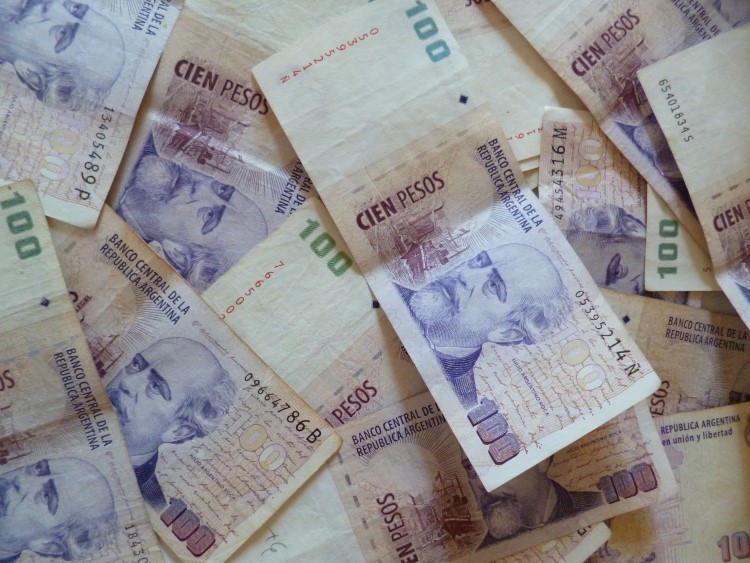
In Chile, withdrawing cash can be costly too. Most banks charge between a $4,500 CLP ($7 USD) and $6,000 CLP ($9.5 USD) fee for using the ATM, although you can withdraw up to a maximum of $200,000 CLP ($314 USD) at a time.
For me (a UK bank account holder), I’ve found that Scotiabank is the only one that doesn’t charge me anything to withdraw cash; unfortunately, I don’t know if this only works for European cards. It’s also a bank that’s only found in cities.
I’ve never had an issue with Chilean banks in Patagonia not having money, although there always is the possibility of small towns running out of cash on weekends and holiday weekends in summer.
Money exchange
While the days of the “blue dollar” are long gone (when you could exchange US dollars for up to 40% higher on the black market in Argentina than the official rate), Patagonia is still a good place to bring dollars with you.
Not only is it exceptionally safe, so you don’t need to worry too much about carrying cash, you’ll find that plenty of hotels and even tour agencies on both sides of the border offer discounts if you pay in dollars.
This is particularly the case in Chilean Patagonia and Chile in general where foreigners should get a tax break of 19% anyway, although in practice, smaller lodgings only offer this is you pay in physical dollars, when they should offer it to you for having a foreign card.
Dollars can be exchanged for good rates in exchange houses around Patagonia.
I was surprised to find that no one wanted to give me a good rate on exchanging Chilean pesos when I was in Argentinean Patagonia in April 2018.
You’ll also struggle to find good rates on British Sterling and Euros.
If there’s anything you think I’ve missed, please add it via the comments below or if you have any further questions, contact me directly at [email protected] .
I promise I don’t send spam: just tips, inspiration and the tools to make a South American adventure a reality , straight to your inbox!
FAQs about visiting Patagonia
What is the best month to visit patagonia.
The best months to visit Patagonia are typically November through mid-December and March. Known as the shoulder season, these months see significantly fewer tourists in the region than the high-season months of late December through February and the weather is still pleasant enough for hiking and other outdoor activities.
The weather in Patagonia is always unpredictable and it’s always possible to experience all four seasons in one day! However, typically in spring (October-November), temperatures hit up to 18°C (64°F), while in fall (March-April) they hover around 10°C (50°F). Wind speeds are also significantly lower than in summer, where they can read up to 120 km/h (74 miles/h) at their strongest!
Is Patagonia worth traveling to?
Yes, Patagonia is worth traveling to! It’s one of my favorite places on the planet and if you love hiking in beautiful national parks with a backdrop of snow-dusted peaks, are keen to spot endemic wildlife species such as guanaco, Andean condors, and pumas, or just want to go to “the ends of the Earth”, then Patagonia is a destination for you.
Sure, it’s expensive to visit because of its distance from major cities such as Santiago de Chile and Buenos Aires, and it’s certainly now on the tourist trail (and not as remote and quiet as many expect), but you won’t regret visiting Patagonia.
Where do you fly into to go to Patagonia?
Where you fly into to go to Patagonia depends on whether you’re visiting the Chilean or Argentine sides of the country. Most people fly from Santiago de Chile into Puerto Natales or Punta Arenas (for southern Chilean Patagonia, including Torres del Paine National Park), while others fly from Buenos Aires in Argentina to El Calafate or Ushuaia (for southern Argentine Patagonia, including the Perito Moreno Glacier).
If you want to visit other parts of Patagonia, there are alternative options. For the Carretera Austral in northern Chilean Patagonia, you’ll want to fly to Puerto Montt or Balmaceda. For Bariloche in northern Argentine Patagonia, you can fly directly there from Buenos Aires.
Is Patagonia better in Chile or Argentina?
As someone who lived for three years in Chile, I’m a little biased in saying that Chilean Patagonia is better than Argentine Patagonia. However, I still think it’s true. Chilean Patagonia has a lot more variety of scenery, from the fjords, isolated national parks, glaciers, and lush vegetation of the Carretera Austral, to the spectacular mountain scenery and wildlife of Torres del Paine National Park, it’s an exceptionally diverse place.
Argentine Patagonia also has its highlights, however. It’s incredible to get so close to El Perito Glacier, and the hiking from both El Chaltén and Bariloche is some of the best in South America. There’s also plenty of wildlife, from the penguin colonies and whales near Puerto Madryn to those accessible from Ushuaia.
Want to save this epic Patagonia travel guide for later? Make sure you pin it!
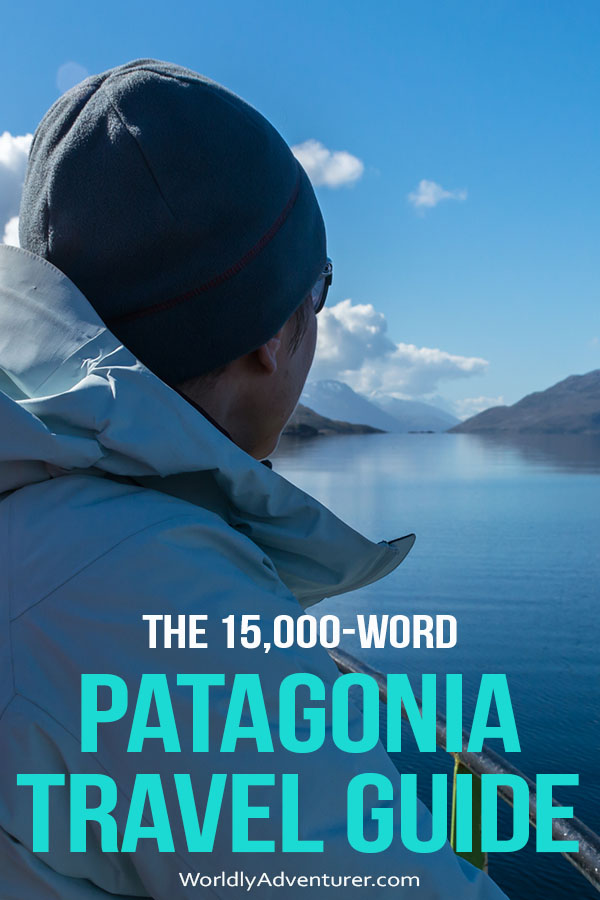
Javier Buchanan
Thursday 15th of December 2022
Hi Steph! Congrats on your post, it certainly has plenty of information of all kinds. If I'm allowed a comment, I think you should have inlcuded Bariloche on the "must see" list. It's Argentinian Patagonia's largest destination, apart from the ski, it has hundreds of hiking trails, lakes, mountains and fairy tale forests. Certainly a must for me :)
Steph Dyson
Hi Javier, yes lots of people love it! I found it very busy when I visited and that spoilt the experience for me but I'm keen to return and see if that changes my mind! Steph
The Vandersons
Tuesday 18th of October 2022
I'm curious why you say the "blue dollar" days are long gone?
We're here in Argentina and even better than the blue dollar (280 to 1 USD) is using Western Union (310 to 1 USD today), and the official exchange if you use an ATM like you suggest is only 145 to 1 USD!
Thursday 19th of January 2023
You are correct - I haven't had a chance to update this article recently! Steph
Sunday 9th of October 2022
I would like to go to Patagonia end of Jan for 2 weeks, I want to see the highlights, hike, see wildlife , see the fjords, glaciers, and sea life. I would like help in planning the trip. Thank you
Wednesday 12th of October 2022
Hi Janet, you need to drop me an email at [email protected] and we can chat further about your plan. Steph
Thursday 7th of May 2020
Hello Steph, this is a wonderful article.
Is there a better way to visit Atacama along with Patagonia? I like to plan this starting next Jan 2020 for 2 weeks.
And I don't see any tours for Atacama along with Patagonia but itself.
Thanks Gabe
Thursday 14th of May 2020
Hi Gabe, you'll have to fly into Santiago from Patagonia and back out again to San Pedro (or vice versa) to see both as there's no easy connection between them unfortunately! Steph
Monday 28th of October 2019
Thanks a lot for this helpful guide! Would be interest in your view on this: due to time restrictions (6 weeks in Chile) we are thinking about two questions: 1) Should we include the very south around Ushuaia in our schedule vs. focusing solely on the far north (Lauca, Atacama) and the areas around Puerto Montt, Chalten, Calafate, Puerto Natales and Punto Arenas? Either at the cost of something else or at the cost of a bit of travel stress 2) We are considering both Navimag (Puerto Montt - Puerto Natales) and the Yaghan (Puerto Natales - Puerto WIlliams) ferries. You seem to have done both. What would you suggest: both or only one? If you had to decide for one of them, which one would you recommend?
Would be very thankful for your guidance! Christian
Thursday 7th of November 2019
Hi Christian, personally I would recommend trying to make sure you have enough time to see everything in as much detail as you want (I would personally plan out day-by-day the itinerary and see if the trip you are trying to do is realistic - this is something I do for my travel planning clients!). I personally enjoyed the Yaghan more than the Navimag but it really depends on if you have the time to get that far south. Have a fantastic trip! Steph

Planning a Trip to Patagonia: A Complete Guide (2024/25)

Travel Resources
- Accommodation at the best prices.
- Book activities and excursions in Spanish.
- Find cheap flights.
- Rent your Car for Patagonia
- -5% eSIM discount with unlimited data and no roaming charges
- Store your luggage for US$ 5.90 per day
- Travel and cancellation insurance with -5% discount
- I will organize your trip
Imagine standing amidst towering glaciers, observing unique wildlife, and trekking through some of the most breathtaking landscapes on Earth. Welcome to Patagonia, a vast and diverse region stretching across southern Argentina and Chile . This incredible destination, located at the southern tip of South America, offers an unforgettable adventure for nature lovers and outdoor enthusiasts alike. In this comprehensive guide, we’ll share insider tips and first-hand experiences to help you with planning a trip to Patagonia, ensuring the perfect Patagonian journey.
Key Takeaways
- Planning a trip to Patagonia? Get the best out of your experience with tips on when to visit, transportation options and accommodation choices.
- Explore iconic sights like W Trek, Perito Moreno Glacier & Laguna de los Tres by creating an itinerary tailored for one week, two weeks or three weeks.
- Strategically planning and optimizing your itinerary can lead to significant savings!
Best Time to Visit Patagonia
Choosing the right time to visit Patagonia can significantly impact your trip experience. The region’s weather and tourist influx vary throughout the year, influencing the availability of outdoor activities and accommodations. So, when should you embark on your Patagonian adventure?
We will discuss the pros and cons of visiting during different seasons.
High Season: December to February
The high season in Patagonia runs from December to February, coinciding with the Patagonian summer. Warm temperatures reach up to 22°C (72°F), perfect for outdoor activities like hiking in Torres del Paine National Park or exploring the breathtaking Chilean fjords. Wildlife enthusiasts will also enjoy spotting penguins and guanacos during these months.
However, the high season comes with its drawbacks. Popular destinations like Torres del Paine and Tierra del Fuego can get crowded, with limited availability of accommodations and packed hiking trails. Moreover, Patagonia’s unpredictable weather means you might experience sudden changes, even during the summer season. You could encounter:
- Sunny skies
- Cool breezes
All in one day.
Despite the challenges, visiting Patagonia during the high season ensures you’ll be able to participate in numerous outdoor activities while enjoying the region’s stunning landscapes. Just be prepared for rapidly changing weather and high tourist traffic.
Shoulder Season: September to November and March to April
If you prefer a more tranquil experience, consider visiting Patagonia during the shoulder season, which spans from September to November and March to April . During these months, you’ll encounter fewer crowds and still enjoy pleasant temperatures that range from the high 50s to the low 60s Fahrenheit (14-18°C).
The shoulder season also offers a unique opportunity to witness the region’s stunning landscapes as they transition between seasons. In spring (September-November), wildflowers bloom and fill the valleys with vibrant colors. Fall (March-April) brings a palette of warm hues as the foliage changes, painting the landscape in shades of red, orange, and yellow.
Keep in mind that the shoulder season may bring more rain than the summer months, with June being the wettest month. Nevertheless, the shoulder season’s milder temperatures, fewer crowds, and beautiful scenery make it an appealing time to visit Patagonia.
Low Season: June to August
While it may be tempting to visit Patagonia during the low season ( June to August ) to avoid the crowds, we would advise against it. The winter months bring heavy snowfall, resulting in closed hiking trails and reduced transportation schedules. Accommodations may also be limited during this period.
Temperatures during the low season range between the 30s to 60s Fahrenheit (3-18 degrees Celsius), adding to the challenges of exploring the region. For these reasons, it’s best to plan your Patagonian adventure during the high or shoulder seasons to fully enjoy the region’s activities and attractions.
Getting to Patagonia: Transportation Options
When planning your trip to Patagonia, you’ll need to consider transportation options to navigate the region’s vast distances. The most popular choices include flying, bus travel, and ferry travel. Each option offers distinct advantages and drawbacks, so let’s examine them to help you make the best decision for your Patagonian journey.
Flying is the fastest way to get around Patagonia, but it can be expensive. Bus
Flying to Patagonia
Flying is the most convenient and time-saving option for reaching Patagonia, especially if you have limited time to explore the region. Major cities like Santiago, Chile, and Buenos Aires, Argentina, offer flights to popular destinations such as:
- Puerto Madryn
- El Calafate
- Punta Arenas (for southern Chilean Patagonia)
- Ushuaia (for southern Argentine Patagonia)
Airlines such as Jetsmart, Sky Airline, and LATAM operate flights to various Patagonian airports in Chile. And Aerolineas Argentinas covers most of the flights within Argentina along with the low cost companies Flybondy and Jetsmart.
Booking flights in advance is recommended due to potential price and availability fluctuations throughout the year. To compare flight prices, consider using websites like Skyscanner.com .
While flying is the fastest option, it may not be the most cost-effective. Additionally, some remote destinations in Patagonia may not have air connections, necessitating alternative transportation methods to reach them.
Bus Travel in Patagonia
Bus travel is an affordable alternative to flying, though it can be time-consuming due to the region’s vast distances. Despite the long travel times, buses in Patagonia are generally comfortable and punctual, ensuring a pleasant journey.
Purchasing bus tickets can be done directly at bus stations or online via websites like BusBud.com. Be prepared for border crossing between Argentina and Chile, as they may require additional time and documentation checks.
While bus travel allows you to save on transportation costs, it may not be the most efficient method if you have limited time in Patagonia. Travel fatigue may also be a concern, as some bus journeys can span multiple days.
Ferry Travel in Patagonia
Ferry travel in Patagonia is a less common option, with limited connections available. However, it offers a unique and leisurely way to explore the region’s stunning landscapes, especially the Chilean fjords.
Though ferry travel may be slower and less frequent than other transportation options, it provides a memorable experience for those seeking a more intimate connection with Patagonia’s natural beauty. It’s an excellent choice if you have ample time to explore the region and prefer a slower-paced journey.
Accommodation Choices in Patagonia
Your Patagonian adventure will require comfortable and convenient accommodations to rest and recharge after a day of exploration. Fortunately, the region offers a variety of options to suit different budgets and preferences, from budget-friendly hostels and guesthouses to mid-range hotels and luxury resorts.
We will examine the range of lodging options available in Patagonia.
Budget Accommodations
For travelers on a tight budget, hostels and guesthouses offer affordable lodging options without breaking the bank. These accommodations typically provide dorm-style rooms or private rooms with shared facilities. You can find hostels in popular destinations like El Calafate , El Chalten , and Puerto Madryn.
To search for budget accommodations, use websites like Booking.com and Hostelworld.com. Keep in mind that prices may vary depending on the season, so it’s essential to book in advance to secure the best deals.
Mid-Range Accommodations
Mid-range accommodations offer a balance between affordability and comfort, providing amenities like free Wi-Fi, daily breakfast, and in-room conveniences. These hotels often feature on-site restaurants, shared lounges, and communal terraces, allowing you to unwind and socialize with fellow travelers.
Some popular mid-range options in Patagonia include Tierra de Leyendas in Ushuaia and Peninsula Petit Hotel in San Carlos de Bariloche. Prices for mid-range accommodations generally range from $60 to $150 per night, depending on the location and amenities offered.
Reviewing cancellation policies is a must when booking mid-range accommodations since these can vary among properties. Plan carefully and book in advance to ensure you find the perfect fit for your Patagonian adventure.
Luxury Accommodations
For travelers seeking a more indulgent experience, luxury resorts and lodges in Patagonia offer top-notch services and facilities. These high-end accommodations often feature private excursions, luxury spa facilities, and secluded locations, ensuring an unforgettable stay.
EcoCamp Patagonia, for example, is an extraordinary eco-dome property that provides a unique lodging experience amidst the stunning landscapes of Torres del Paine National Park. Other luxury options, such as Tierra Patagonia and Awasi, are known for their incredible views, exclusive services, and personalized experiences.
For those seeking a unique and luxurious outdoor experience, consider glamping in Patagonia. Glamping, or glamorous camping, combines the thrill of camping with the comforts of a hotel. Imagine waking up in a comfortable bed, stepping outside your tent, and being greeted by the breathtaking landscapes of Patagonia. This experience is offered by several providers in the region, allowing you to immerse yourself in nature without sacrificing comfort. For more information on this ultimate outdoor adventure, check out this Patagonia glamping guide .
Luxury accommodations may come with a higher price tag, but the exceptional service, breathtaking surroundings, and exclusive experiences make them well worth the investment for a truly unforgettable Patagonian journey.
Essential Activities and Attractions
A trip to Patagonia offers a wealth of opportunities to explore diverse landscapes, encounter unique wildlife, and immerse yourself in the region’s rich culture. To make the most of your Patagonian adventure, consider incorporating essential activities and attractions into your itinerary, such as:
- Hiking in the stunning national parks
- Wildlife encounters, including penguin colonies and whale watching
- Glacier exploration, with visits to Perito Moreno and other impressive glaciers
By including these activities, you’ll have an unforgettable experience in Patagonia.
We will delve into these unforgettable activities.
Hiking and Trekking
Hiking is an essential activity for any Patagonian adventure, allowing you to discover the region’s stunning national parks and landscapes up close. Whether you’re a seasoned trekker or a casual hiker, Patagonia offers trails to suit all abilities and interests.
Torres del Paine National Park in Chilean Patagonia is a popular destination for hikers , boasting iconic trails like the W trek and the O Circuit. In Argentine Patagonia, Los Glaciares National Park offers equally stunning hikes, such as the Laguna de los Tres trail and the Laguna Cerro Torre trek.
Regardless of your chosen trail, always ensure you’re prepared with appropriate hiking gear, sufficient supplies, and a respect for the environment. Hiking in Patagonia is an unforgettable experience that will leave you in awe of the region’s natural beauty.
Wildlife Encounters
Patagonia’s diverse ecosystems are home to a wide array of unique wildlife, making it a fantastic destination for nature enthusiasts. Some of the wildlife you can encounter in the region includes:
These are just a few examples of the incredible wildlife you can see in Patagonia, offering you the opportunity for once-in-a-lifetime encounters.
Punta Tombo peninsula is the top spot for penguin-spotting, with the best viewing months between September and April. Whale watching is another popular activity, particularly in Peninsula Valdes from June to December, during the whales’ mating season.
Remember to always maintain a respectful distance and follow local guidelines when observing wildlife. Your responsible behavior will help protect these incredible creatures and ensure future generations can enjoy the same thrilling encounters.
Glacier Exploration
A visit to Patagonia is incomplete without exploring its awe-inspiring glaciers. Perito Moreno Glacier in Argentine Patagonia and Grey Glacier in Chilean Patagonia are two of the most impressive and accessible glaciers in the region.
Various tour operators offer day trips to these glaciers, with options for guided hikes, boat tours, and even ice trekking. No matter which option you choose, witnessing the sheer size and beauty of these ancient ice formations is a once-in-a-lifetime experience not to be missed on your Patagonian journey.
Planning Your Patagonia Itinerary
With so much to see and do in Patagonia, planning your itinerary can be both exciting and challenging. To help you make the most of your time in this vast and diverse region, we’ve created suggested itineraries for one-week, two-week, and three-week trips.
These itineraries can serve as a starting point for your own custom Patagonian adventure, tailored to your interests and available time.
One Week Itinerary
With just one week in Patagonia, you’ll want to focus on the region’s key highlights. Flying from Santiago or Buenos Aires to popular destinations like Torres del Paine National Park or Los Glaciares National Park will maximize your time for exploration.
In Torres del Paine, you can undertake the famous W trek, a 3-5 day hike that covers some of the park’s most iconic sights. In Los Glaciares National Park, a visit to the stunning Perito Moreno Glacier and a hike to Laguna de los Tres near El Chaltén are must-do experiences.
By focusing on these key attractions, you’ll make the most of your limited time in Patagonia.
Two Week Itinerary
With two weeks in Patagonia, you can delve deeper into the region’s diverse landscapes and attractions. In addition to the highlights mentioned in the one-week itinerary, consider exploring the Chilean fjords and the Carretera Austral , a scenic route that stretches over 1,200 kilometers through southern Chile.
The Carretera Austral offers access to remote national parks, glacier-fed lakes, and dramatic mountain landscapes. Highlights along the route include Pumalin Park, Queulat National Park, Cerro Castillo, and the Marble Caves. A two-week itinerary allows you to immerse yourself in Patagonia’s natural beauty and experience a more extensive range of attractions.
Three Week Itinerary
A three-week trip to Patagonia provides ample time to fully immerse yourself in the region’s diverse landscapes, wildlife, and culture. In addition to the destinations covered in the shorter itineraries, consider visiting Tierra del Fuego, the southernmost region of South America.
Ushuaia, the southernmost city in the world, offers unique experiences like walking with penguins and cruising the Beagle Channel. Additionally, the Lake District region of both Chile and Argentina, located near the snow capped mountains of the Andes Mountains, features picturesque lakes, quaint towns, and opportunities for outdoor activities such as hiking, fishing, and skiing.
With three weeks to explore Patagonia, you can truly experience the region’s incredible variety and create lasting memories.
Budgeting for Your Patagonia Trip
Planning your Patagonian adventure requires budgeting for the following expenses:
- Accommodation
- Transportation
Expenses can significantly differ based on your travel style and preferences, emphasizing the need for advanced planning and informed decision-making to optimize your budget.
To help you save money and make the most of your trip, we’ve compiled a list of money-saving tips that can be applied throughout your Patagonian journey.
Money Saving Tips
Budget-conscious travelers can save on costs by:
- Staying at hostels and guesthouses, which offer affordable accommodation options without compromising on comfort
- Cooking their own meals, which can significantly reduce food expenses
- Taking advantage of communal kitchens provided by many hostels and guesthouses, allowing them to prepare meals with local ingredients purchased from nearby markets or grocery stores.
Hitchhiking is another money-saving option for transportation within Patagonia. While not suitable for everyone, hitchhiking can provide a unique and cost-effective way to explore the region.
Lastly, being flexible with your transportation choices can help you find the best deals on bus tickets, flights, and rental cars. By implementing these money-saving tips, you can make your Patagonian adventure more affordable and enjoyable without sacrificing unforgettable experiences, including finding a great deal on a rental car.
Custom Itinerary Planning with a Patagonian Native
If you’re feeling overwhelmed with planning your trip to Patagonia, don’t worry, I’m here to help! Born and raised in Patagonia, I have over 20 years of experience organizing trips to both Argentine and Chilean Patagonia. With my deep knowledge and understanding of this region, I can help you plan a custom itinerary that will ensure you see the best of what Patagonia has to offer , tailored to your interests and preferences. Let’s make your Patagonian journey an unforgettable adventure!
Patagonia’s awe-inspiring landscapes, unique wildlife, and diverse outdoor activities make it a truly unforgettable destination. From the towering peaks of Torres del Paine to the stunning fjords of southern Chile, there’s something for every traveler in this vast and captivating region. By carefully planning your itinerary, budget, and travel arrangements, you can make the most of your Patagonian adventure and create lasting memories.
We hope this comprehensive guide has provided you with the information and inspiration you need to embark on your own Patagonian journey. With careful planning and responsible tourism practices, you’ll be well on your way to experiencing the trip of a lifetime in one of the world’s most breathtaking regions.
Frequently Asked Questions
How many days do you need for patagonia.
If you wish to explore all the highlights of Patagonia, plan for at least 7-10 days to fully take in its breathtaking 409,500 sq miles. By doing so, you’ll get to visit places like Torres del Paine, Tierra del Fuego, the Perito Moreno glacier (Argentina), El Chaltén (Argentina) and the Carretera Austral (Chile).
What is the best month to visit Patagonia?
For an unforgettable Patagonia experience, plan your trip between November and March!
How far in advance should you plan a trip to Patagonia?
Book your tickets six months in advance if travelling to Patagonia during December to February, and three months ahead for other high season months.
What time of year should I visit Patagonia?
The best time to visit Patagonia is from November to March, when the weather is mild and you can experience its stunning landscapes and pristine wilderness in their full splendor.
How can I get to Patagonia?
You can get to Patagonia by flying.
My organised trips to Patagonia
In the carousel below you can see already assembled itineraries for inspiration, click on the one you are interested in and ask me for a quote.
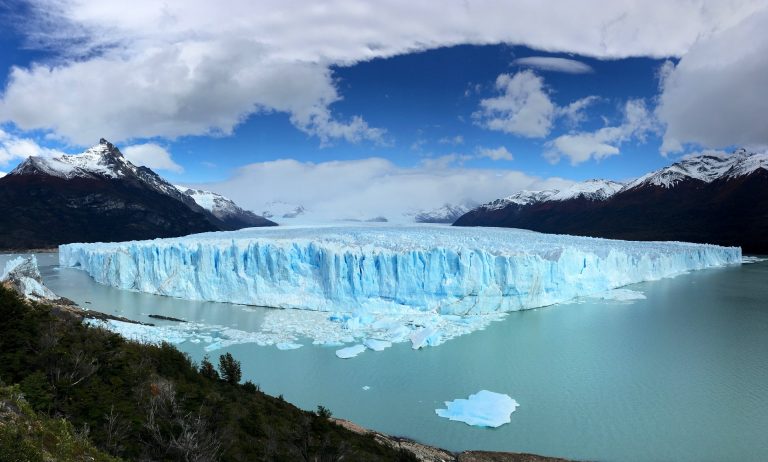
Compact trip through the southernmost Argentinean Patagonia: Ushuaia and El Calafate
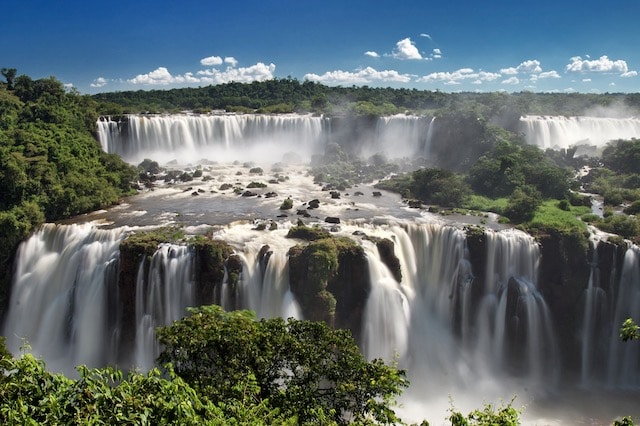
Enjoy the 3 most relevant ecosystems in Argentina: The End of the World, The Glaciers and the Iguazu Falls.
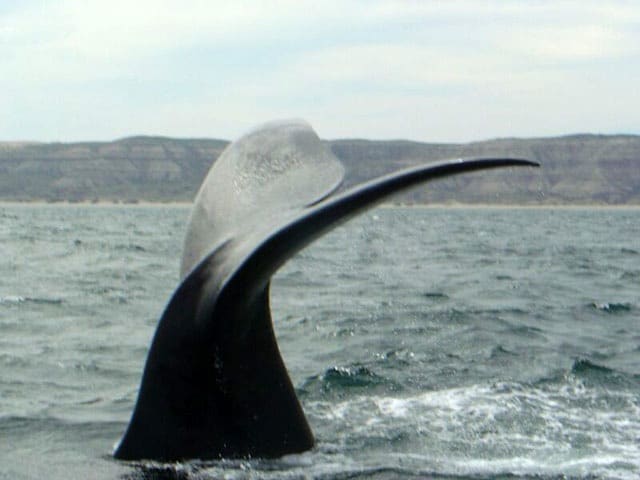
Trip to Patagonia Argentina in 7 days touring the most beautiful landscapes of Patagonia Argentina (Peninsula Valdés & El Calafate)
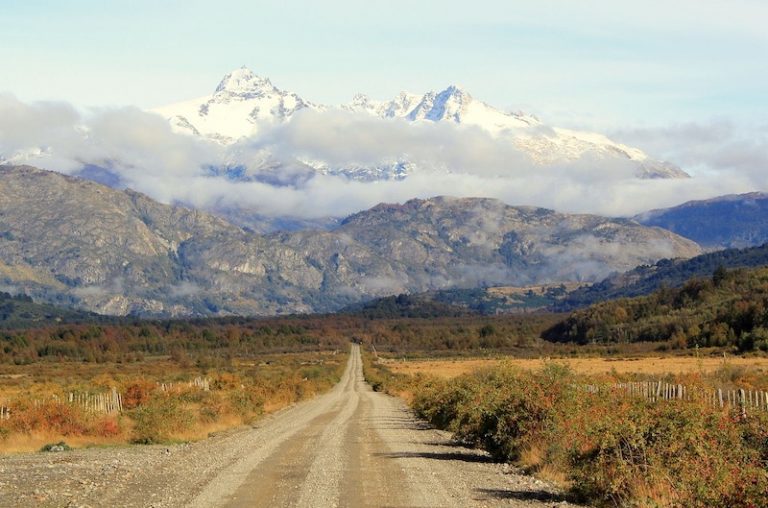
The Carretera Austral by rental car is probably one of the most spectacular routes in Patagonia, designed to be travelled with plenty of time in your rental car.
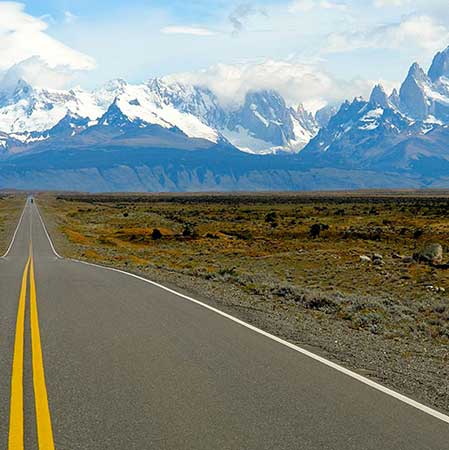
Tour along Route 40 in Patagonia, starting on Route 3 on the Atlantic coast and continuing along Route 40 until reaching the Andes Mountains and El Calafate.
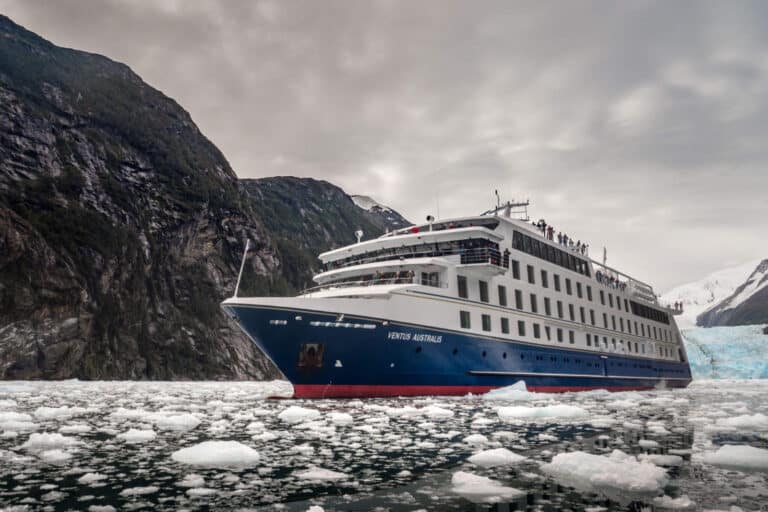
The Australis Cruises are Expedition Cruises that sail through the Strait of Magellan and the Beagle Channel, exploring one of the most beautiful and unspoiled regions of the world such as Patagonia and Tierra del Fuego.
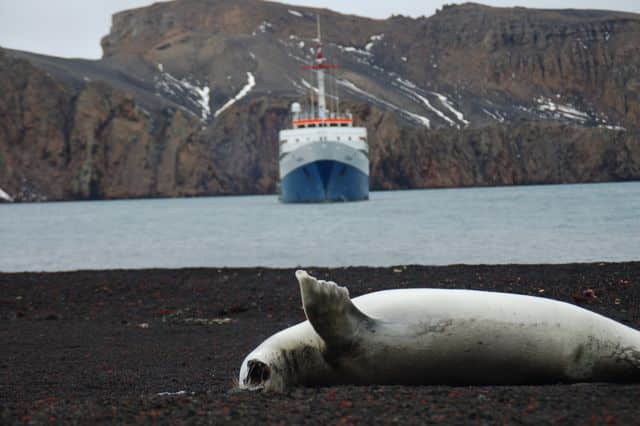
The Antarctic Cruise aboard the MV USHUAIA offers you an incredible introduction to the 'White Continent' at a reasonable price.
Book your tours
Search for your hotel, related posts.
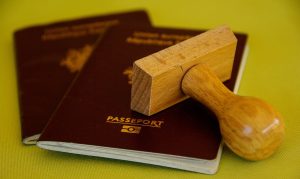
How much does a trip to Patagonia cost?
Patagonia, a region shared by Argentina and Chile, is a paradise for nature lovers and adventure
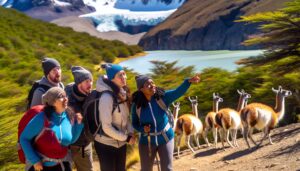
Top-Rated Patagonia Tour Companies for 2024/2025 Adventures
Choosing the best Patagonia tour companies is key to unlocking the full potential of your South
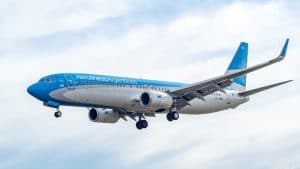
Can You Fly from Buenos Aires to Patagonia?
Exploring the majestic region of Patagonia, a land of awe-inspiring landscapes and unique wildlife, is a
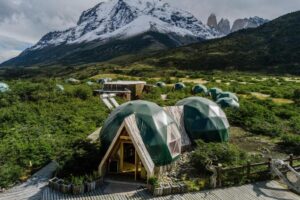
Experience the Ultimate Patagonia Glamping Adventure in Torres del Paine and El Chalten
Patagonia Glamping. Imagine yourself waking up amidst the breathtaking landscapes of Patagonia, nestled in luxurious accommodations

About the author
I am Matias, born in Patagonia, and a lover of my land.
For more than 20 years I help foreign travellers to organise their trip to Patagonia.
I also manage this exotic accommodation on the Atlantic coast.

Latest posts
- Best Tango Show in Buenos
- Best Patagonia Travel Books
- Hop On Hop Off Buenos Aires
Excursions from El Calafate – Quick Guide 2024
Top 15 must-see argentina locations for your 2024 trip, argentina vacation guide: explore top destinations and tours, is there a train from buenos aires to patagonia, explore the majestic ice: your ultimate perito moreno glacier tour guide, where is torres del paine, torres del paine how to get there, destinations, save on your trip.
- Accommodations
- Book your excursions
- Search for cheap flights
Terms & Conditions / Privacy Policy

The Best Patagonia Itinerary: 7 to 10 Days in Patagonia [Or More]
Patagonia is a fascinating place. With its wild weather, beautiful hiking trails, and picturesque glaciers, it’s an adventure playground.
I loved every minute of my trip to the region. But before I arrived, I had hundreds of questions (which you probably do too)!
“How many days in Patagonia?”
“Which is better: Chile or Argentina Patagonia”
“Can I visit Patagonia without a tour?”
Now that I’ve been there and spent over a month exploring the Chilean and Argentinian side, I’ve crafted this perfect 10 day itinerary for Patagonia.
It’s easily customizable to a 7 day itinerary but also includes other places to visit if you have 2 weeks in Patagonia.
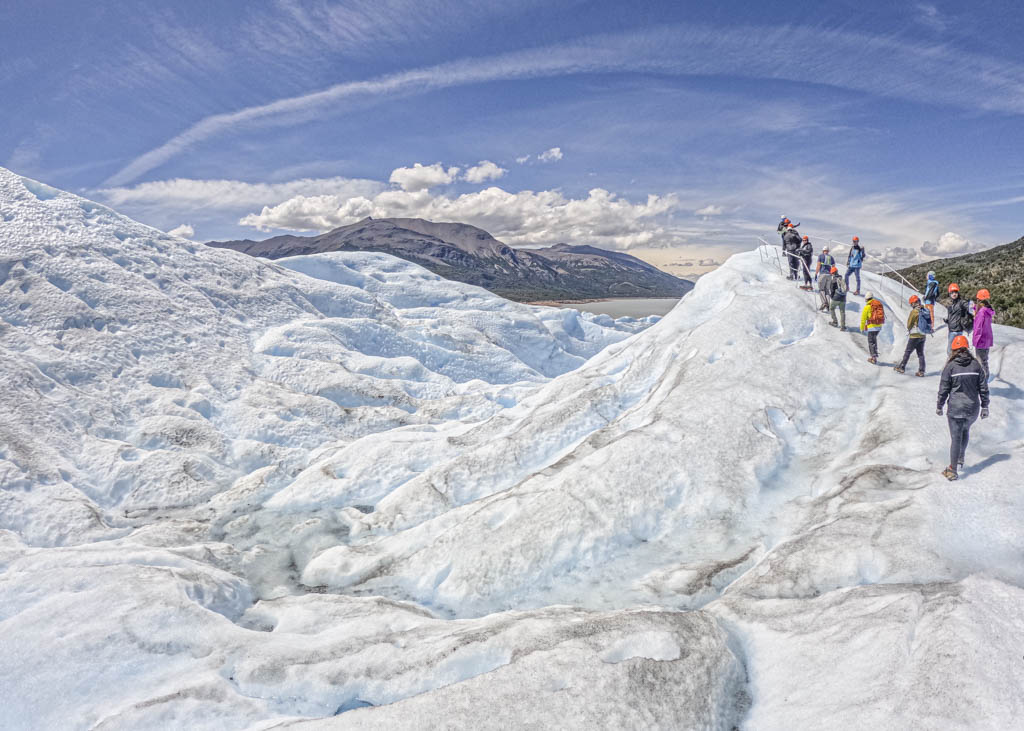
Torn Tackies contains affiliate links. If you make a purchase using one of these links, I may receive compensation at no extra cost to you. See my disclosure for more information.
Quick Navigation
10 Day Patagonia itinerary overview
- Day 1-3: El Chalten (2 nights)
- Day 4-5: El Calafate (2 nights)
- Day 6-10: Torres Del Paine (5 nights)
My Patagonia highlights
My overall favorite place in Patagonia: It’s an easy one! I loved the charming town of El Chalten in Argentinan Patagonia.
Most beautiful place: I still can’t get over how stunning Perito Moreno Glacier is! I did this Mini Trekking glacier tour from El Calafate, and it was one of my Patagonia highlights.
Best multi-day hike in Patagonia: The W Trek in Torres Del Paine, Chile. This hike allowed me to experience the real Patagonia. I had all four seasons in one day and saw landscapes I never knew existed.
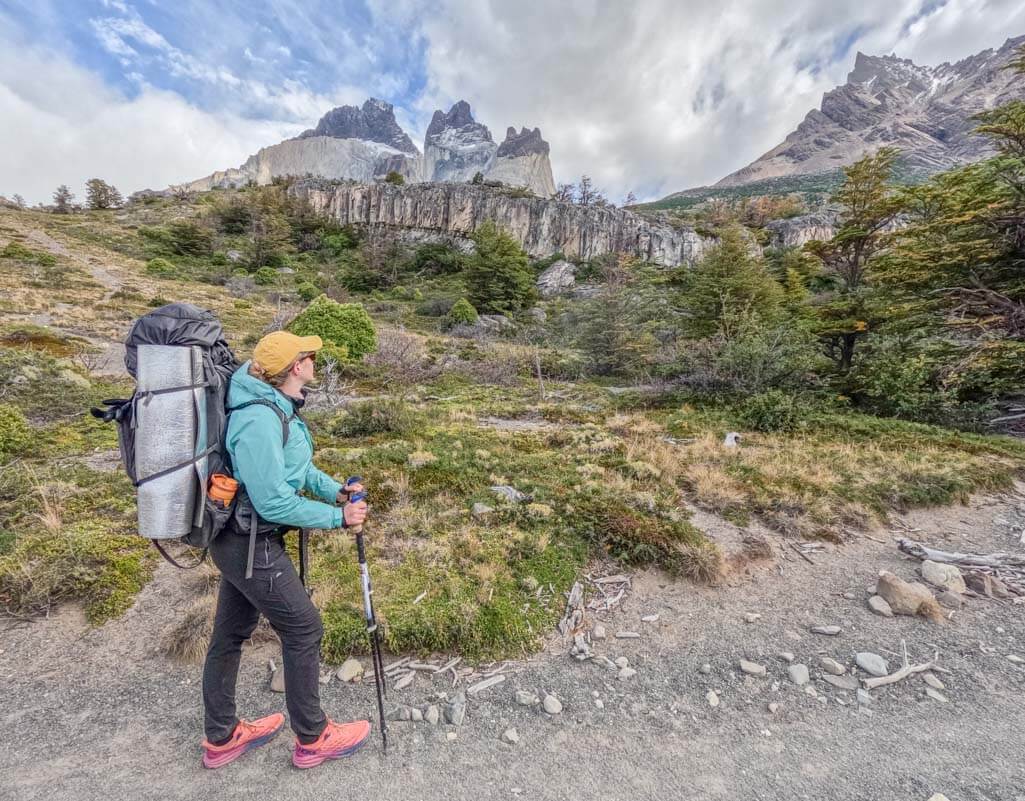
Day 1: Buenos Aires to El Chalten: Hike to Mirador Condores
Surrounded by snow-capped peaks, El Chalten is a small hiking town home to some of the best trails, which I’ve detailed in my El Chalten hiking guide.
It’s my favorite place in all of Patagonia. And if there’s one destination you cannot miss, it’s El Chalten.
If you’re coming from Buenos Aires, you’ll be traveling for most of the day. When you arrive in El Chalten, drop off your bags and put on your hiking shoes!
Mirador de los Condores is a quick and easy hike that’s perfect for day 1 of your Patagonia itinerary. It offers the best views of El Chalten and takes roughly 2 hours to complete.
Top tip: The sun sets after 9 pm in Patagonia during the summer, so you’ll have more than enough time for this hike, so long as you arrive before 6 pm.
How to get to El Chalten
There is no airport in El Chalten. The closest airport is in El Calafate, which services flights from Buenos Aires, Bariloche, and Mendoza in Argentina.
You’ll then need to take a 3.5-hour bus from El Calafate to El Chalten. I booked my bus through Bus Bud . You can check prices and availability here .
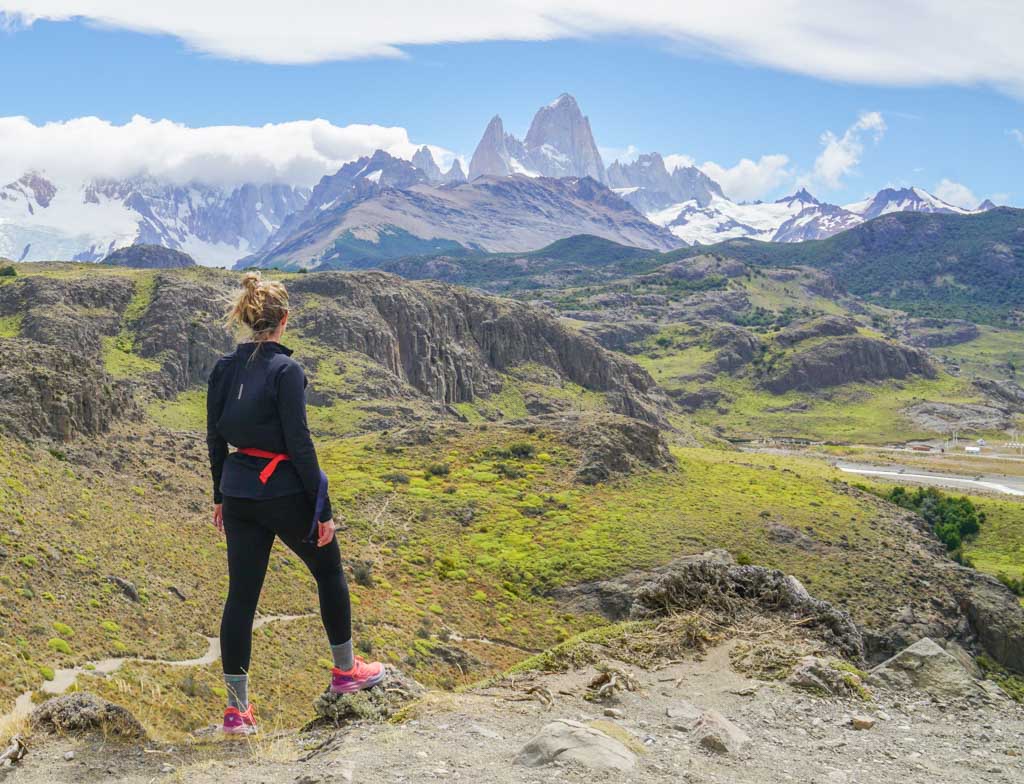
Where to stay in El Chalten
Patagonia is generally a lot more expensive than the other destinations in Argentina.
If you leave it too late, the more affordable options will be taken, and you’ll have to settle for something a bit further from town or out of your budget.
Apart Guillaumet is a basic accommodation option that ticks all the boxes, including an affordable price.
If you’re looking for something more luxurious, you can’t go wrong with Chalten Suites Hotel . There’s an onsite restaurant, and it’s just a stone’s throw away from the trails.
Day 2: Laguna de Los Tres hike (El Chalten)
Laguna De Los Tres is the crown jewel of El Chalten. It’s a turquoise blue lake at the base of the famous Fitz Roy mountain and offers picture-perfect views.
It’s a challenging 9-hour return hike to get from El Chalten to Laguna de los Tres. You’ll need to be prepared with food, water, and a lot of energy.
It was the hardest day hike I did in Patagonia (but so worth it).
You don’t need a guide for this hike or any others in El Chalten, as the routes are easy to follow and clearly marked. Read my guide on getting to Laguna de Los Tres for more details.
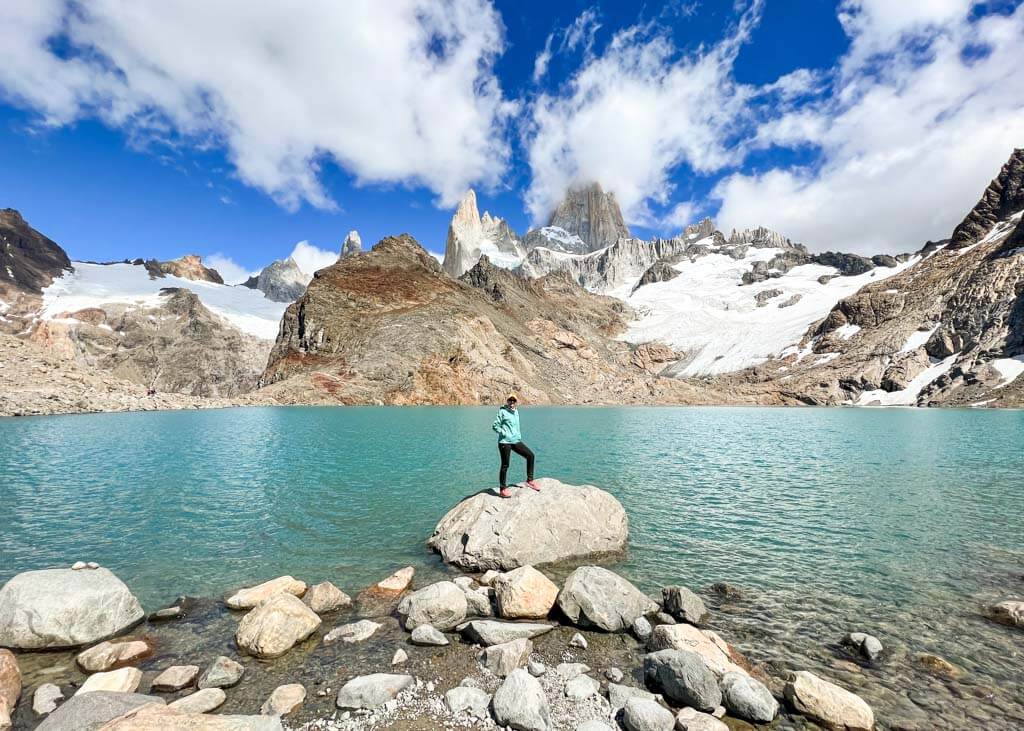

Day 3: Laguna Torre (El Chalten)
Laguna Torre is a vast glacier lake filled with small icebergs. The Cerro Torre Mountain range forms the backdrop and looks like something from a postcard.
The Laguna Torre hike is equally impressive as Laguna de los Tres. The difference? It’s a lot easier! It takes around 6 hours to complete, but most is a flat trail.
Try to start your hike before sunrise to beat the crowds. This will also ensure you’re back in El Chalten by lunchtime.
After the hike, hop on a bus back to El Calafate and spend the night here. It’s time to check out the most incredible glacier in the world!
Other things to do in El Chalten
If one hike in El Chalten is enough for you, or if you have more than 7 days in Patagonia, here are a few other amazing things to do around El Chalten.
White river rafting: I went river rafting in El Chalten and loved it. The rapids aren’t too intense, but they offer a nice break from all the hiking.
Rent a car and make a day trip to Lago del Desierto: Lago del Desierto is a beautiful lake surrounded by forests with picturesque mountain views. Check out Glacier Huemul on the way.
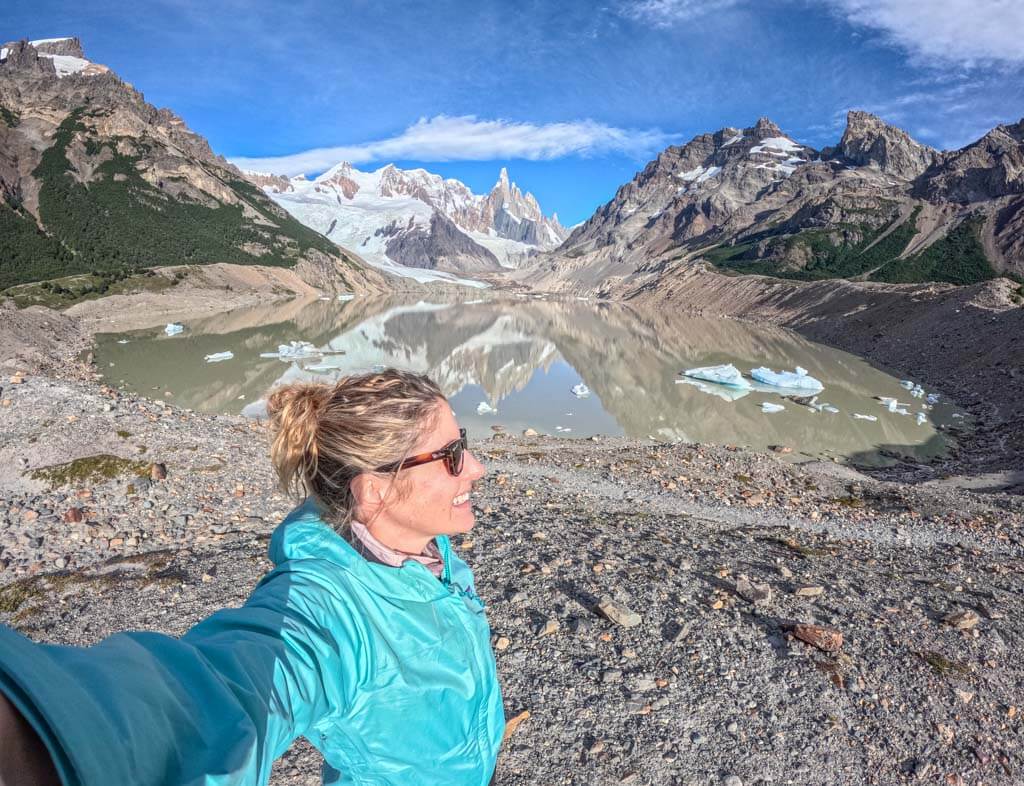
Day 4: Perito Moreno Glacier (El Calafate)
Today, you’ll wake up in El Calafate and make an exciting day trip to one of the most incredible sights I’ve ever seen, Perito Moreno Glacier.
It’s an iconic Patagonia attraction, and its beauty completely blew me away.
Perito Moreno Glacier is located in Los Glaciares National Park, about an hour’s drive west of El Calafate. There are a few ways to experience the glacier.
How to visit Perito Moreno Glacier
Perito Moreno walkways: If you’re on a budget, you can book a bus to the park and visit the walkways only. These comprise of 4 km of interconnected paths that offer panoramic views of the glacier.
Glacier trekking tour: I did this Minitrekking tour , which was well worth the money. Not only do you get to walk on the actual glacier, but it also includes a short boat trip. You’ll have some time to explore the walkways.
Ferry around Perito Moreno: The Minitrekking tour sells out fast, so a good backup option is this boat cruise , which allows you to get closer to the glacier.
Regardless of what tour you do, visiting Perito Moreno Glacier will be expensive! But it’s worth every cent.
Book your spot here , as there is limited availability.
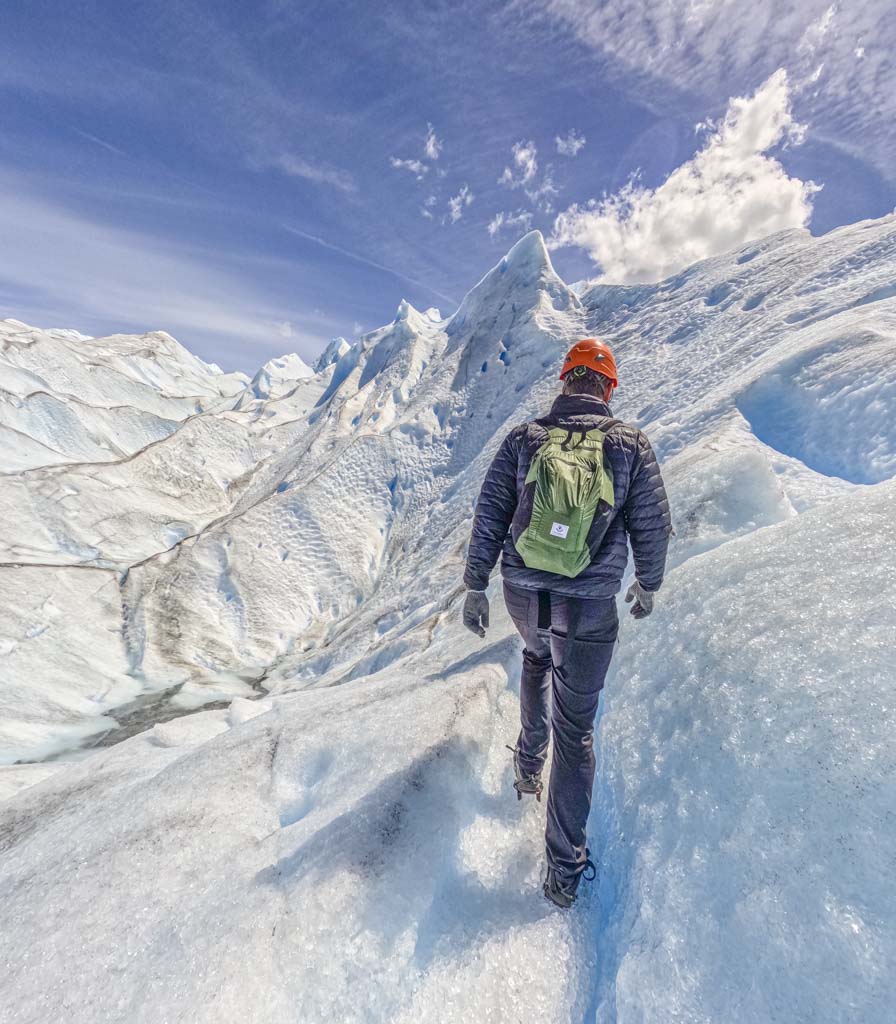
Where to stay in El Calafate
El Calafate is a bigger town than El Chalten, so your accommodation options are greater. It also means that some are closer to the main road than others.
I stayed at Folk Hostel , and it’s a great choice for backpackers. It’s close to the bus terminal, but you’re going to have to walk a bit further to get to the main town center.
Mirador del Lago Hotel has gorgeous large rooms with beautiful views. The breakfasts are exceptional, and it’s perfect for those looking for a more comfortable and luxurious stay.
Day 5 Patagonia itinerary: Puerto Natales
For the second half of your itinerary for Patagonia, there are a few places to visit.
I recommend crossing the border and checking out the Chilean side. You can then fly out of Santiago in Chile rather than crossing the border back into Argentina.
But depending on your time and interests, you may want to visit Bariloche or Ushuaia on the Argentinian side instead.
Where would I go? It’s an easy one! Torres Del Paine National Park in Chilean Patagonia. This park is home to the famous O and W Treks.
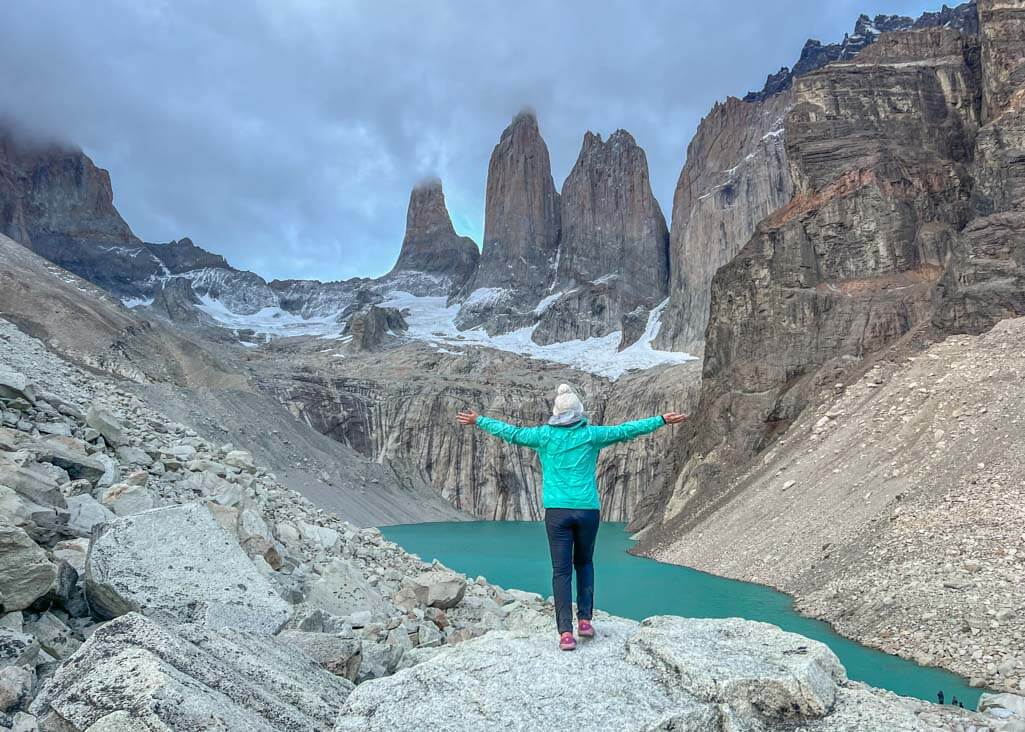
How to get from El Calafate (Argentina) to Puerto Natales (Chile)
Puerto Natales is the gateway to Chilean Patagonia.
Getting here involves an easy border crossing, which you’ll need to do via a bus from El Calafate in Argentina to Puerto Natales in Chile.
The bus drive takes 5 hours but allow for an extra hour at immigration. The buses are extremely comfortable, with large reclining seats. Check prices and availability here.
However, the town of Puerto Natales isn’t as charming as some other towns in Patagonia. So rather spend your first night in Puerto Natales and the rest in the national park.
Where to stay in Puerto Natales
I stayed at El Patagonico Hostel , a fantastic hostel in the heart of Puerto Natales. They offer private and dorm rooms and a big kitchen and lounge area. The price is hard to beat, and they’ll store your bags for free while you do the W Trek.
If you’re looking for a hotel with lake views, you can’t go wrong with The Singular Patagonia Hotel . The elegant rooms are some of the best you’ll find in Puerto Natales, and the staff are outstanding.
Day 6 – 10: W Trek (Torres Del Paine)
The W Trek is a 4-night/5-day trek through Torres Del Paine. It’s not as challenging as you think and can be done independently.
But the notorious Patagonia weather will affect your experience. During my W Trek (which you can read about here ), I experienced the most intense weather conditions.
Sunshine, rain, snow!
I was blown over numerous times while walking through French Valley and had to get down on my haunches to catch my breath. It rained heavily one day. The next, it was sunny and hot.
But despite not having perfect conditions and spectacular views throughout, braving this weather was one of my highlights. I got to experience Patagonia at its finest – the raw and harsh conditions were unlike anything I’d experienced before.
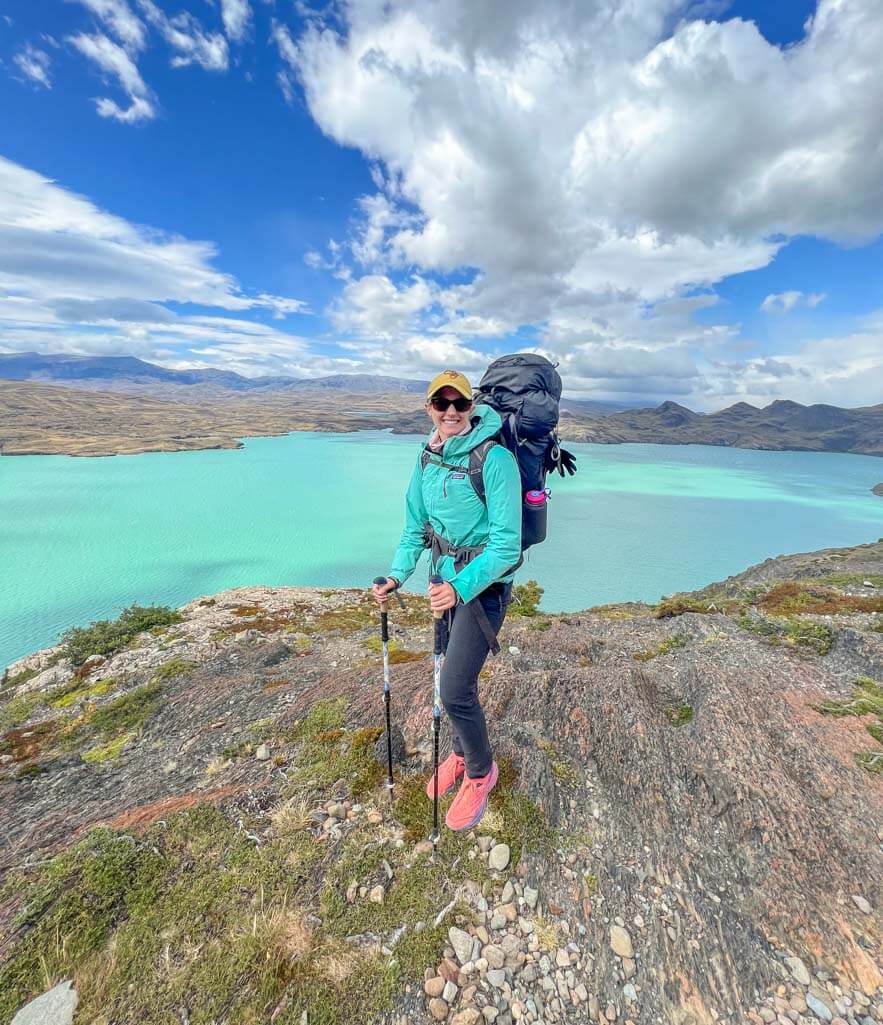
Accommodation on W Trek
If you’re doing the W Trek without a guide, you’ll need to organize your own accommodation. You can choose mountain huts or campsites, but the prices differ substantially.
Bookings open in July every year, and it’s a scramble to get a spot.
Two companies manage the accommodation along the W Trek: Vertice and Fantastico Sur (also known as Las Torres).
Booking your accommodation for the W Trek is a serious mission and highly time-consuming. But it’s the only downside of doing the W Trek independently.
Alternative option: Day trips to Torres Del Paine
Because of limited availability at campsites, your timing, or simply the fact that multi-day hikes are not everyone’s cup of tea, you can also visit Torres Del Paine on day trips from Puerto Natales.
If you’re choosing this option, it’s best to hire a car or take a day tour like this one .
Here are some day trip options:
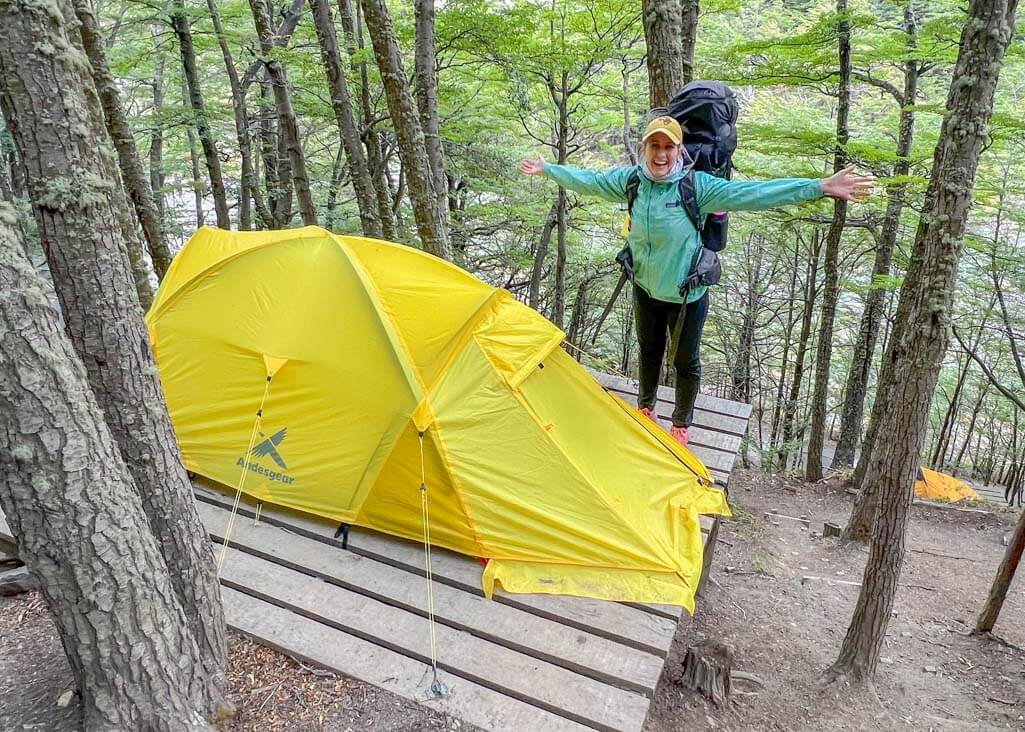
1. Mirador Las Torres (The Towers)
Mirador las Torres is an iconic site in Torres Del Paine. It’s the most popular section of the W Trek and gets busy with day trippers.
Getting to The Towers is a 9-hour return hike that starts challenging and does not get easier. The views are magnificent, though.
This is one of the best day tours from Puerto Natales to The Towers. Check price and availability here.
Top tip: If you’re following my Patagonia 10 day itinerary and struggled with the hike to Laguna de los Tres in El Chalten, skip Mirador Las Torres and opt for one of the below day hikes in Torres Del Paine instead.
2. French Valley
French Valley is the most picturesque day hike in Torres Del Paine National Park.
You’ll need to get on the first bus from Puerto Natales to the park and take the ferry to Refugio Paine Grande. From there, it’s a 2.5-hour hike to Refugio Italiano, which sits at the heart of French Valley.
3. Glacier Grey
Glacier Grey is the biggest glacier in Torres Del Paine and forms part of the western section of the W Trek.
You’ll need to catch the same catamaran as you would if you’re doing the French Valley day hike. But instead of following the trail that leads to French Valley on the right, you’ll go north to Refugio Grey.
Visiting Grey Glacier on a day trip is an ambitious yet achievable goal if you’re a fast hiker. It’s best to rather spend the night at Refugio Grey and head back to town the next day.
Top tip: If you’re planning a 7 day Patagonia itinerary and can only do 2 day hikes in Torres Del Paine, I suggest doing French Valley and Mirador Las Torres (The Towers).
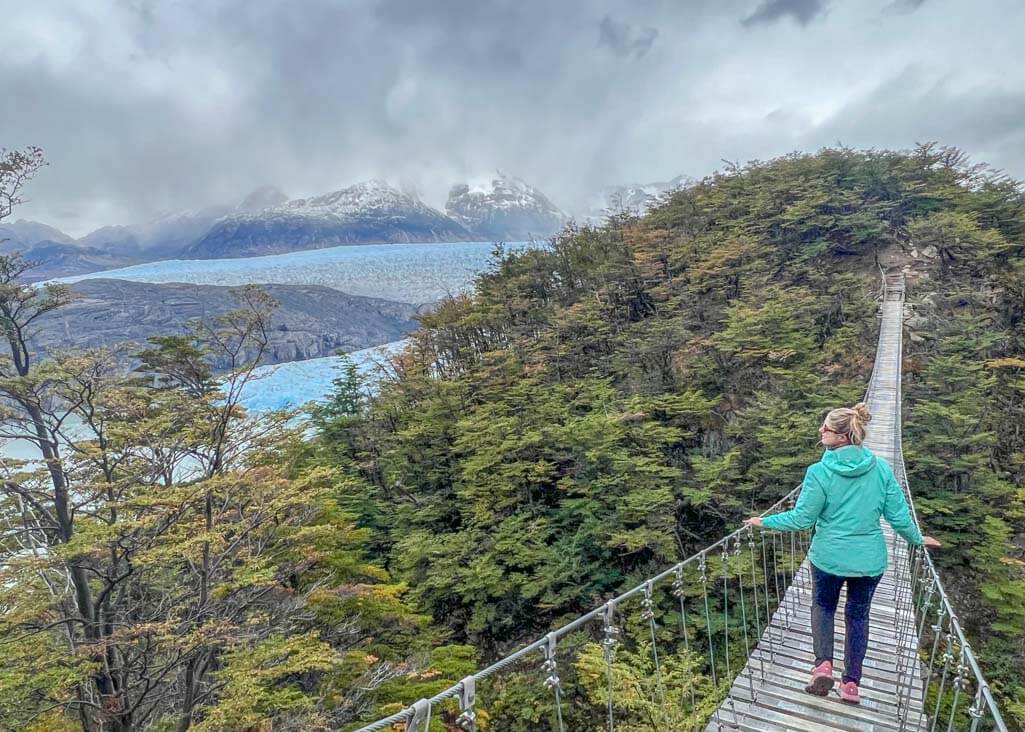
Other places to visit in Patagonia
Some travelers may want to avoid the border crossing from Argentina to Chile.
If this is the case for you, there’s the option to stay on the Argentinian side and explore more of Patagonia from there.
Bariloche is the lake district of Argentinian Patagonia. It’s strikingly different from all other places on this Patagonia trip itinerary.
Bariloche is ideal for travelers who want a break from hiking and prefer a mix of nature and comfort.
It’s best to spend 3 days in Bariloche and possibly even a night in San Martin de los Andes.
Day 1 in Bariloche
Try to arrive in Bariloche by lunchtime, so you have the afternoon to explore the town. The streets are lined with alpine-styled buildings, and the Centro Civico (the town square) is incredibly picturesque.
The Bariloche lakefront is a great place to hang out. It overlooks Nahuel Huapi Lake and is calming and serene.
A beautiful walking path leads from the Bariloche sign along the water’s edge. It passes a skate park and other sites, leading to an iconic Cathedral.
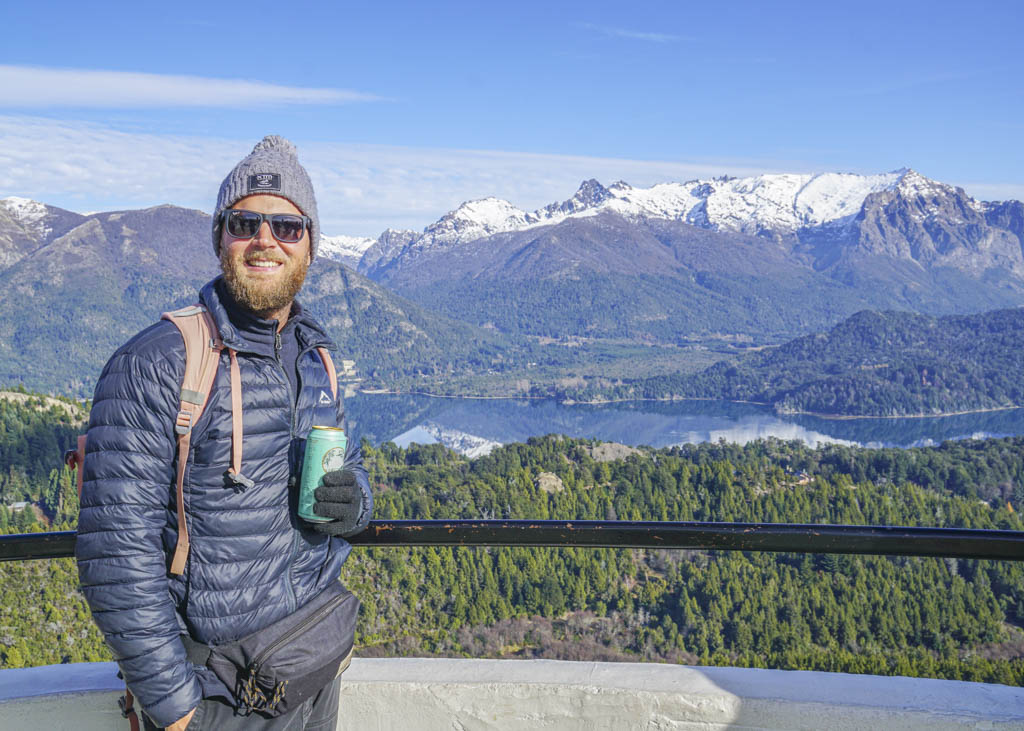
How to get to Bariloche
If you’re skipping the Chilean Patagonia side, or if you have more time in Patagonia and want to add Bariloche to your itinerary, you’ll need to get to Bariloche from El Calafate.
The easiest way is via a quick 2 hour flight between the towns.
Where to stay in Bariloche
Bariloche is a lot bigger than most Patagonia towns. There are many different areas to base yourself in. Unless you stay in the town center, you’ll need to use public buses or rent a car to get around.
I stayed at Trip Select Bariloche , just a short walk from the main road in Bariloche. The private rooms are simple yet comfortable and are great value for money.
Llao Llao Resort is one of the most luxurious places to stay in Bariloche. The location is everything, surrounded by mountain peaks with incredible views from every window. But you’ll need a car to get here.
Deciding where to stay can be overwhelming, so here’s my comprehensive guide to the best areas and accommodations in Bariloche.
Day 2 in Bariloche: Llao Llao National Park & Cerro Campanario
Llao llao national park.
An hour west of Bariloche lies Parque Municipal Llao Llao. It’s home to gorgeous hiking trails and spectacular views.
The most popular trail leads to Cerro Llao Llao, a panoramic viewpoint. You’ll walk up a steep zig-zag trail for 30 minutes to get here.
You can combine this with the Sendero de los Arrayanes trail. This loop track meanders through Parque Municipal Llao Llao, passing lush walkways and the picturesque Lake Moreno. It’s a flat trail and an excellent option for kids.
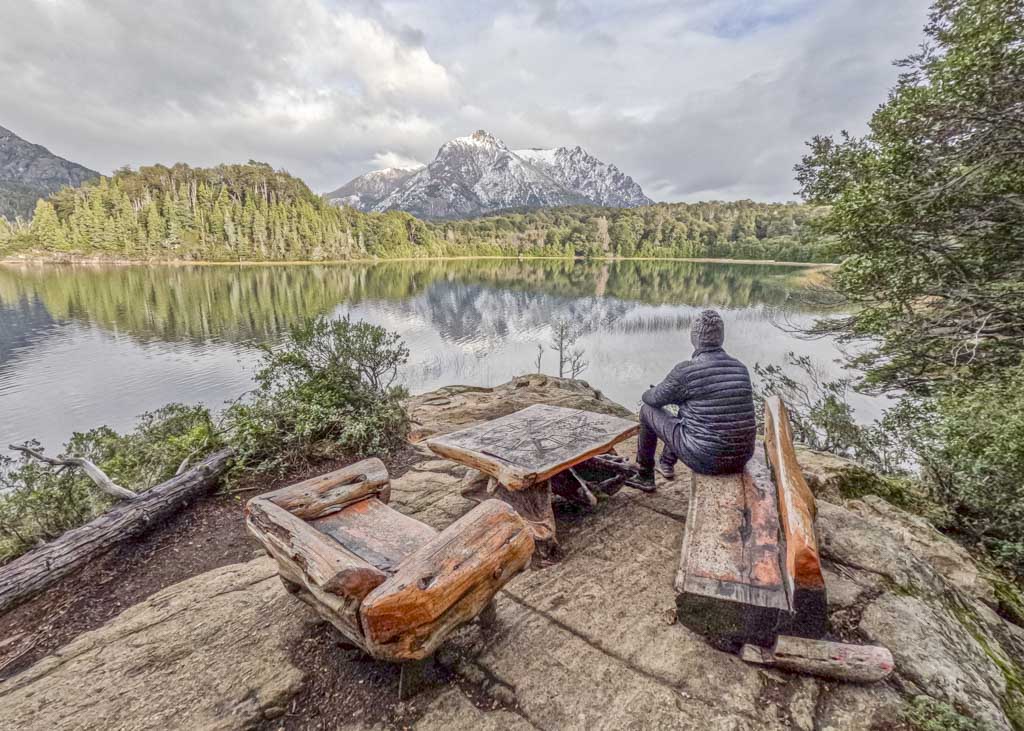
Cerro Campanario
After visiting Llao Llao National Park, make your way to Cerro Campanario. Here, you’ll find the most impressive viewpoint in Bariloche.
The best part? There’s no strenuous hike involved (unless you opt to walk instead of taking the chair lift to the top).
There are numerous viewpoints at the peak, and you’ll have 360-degree views overlooking the lake district. There’s also a small cafe and bar.
Day 8 in Bariloche: 7 Lakes drive or Refugio Frey hike
For the final day of your itinerary for Patagonia, you have two options. You can either explore the iconic 7 Lakes route or do the popular full-day hike to Refugio Frey.
7 Lakes Drive
The 7 Lakes route is one of the most scenic drives in all of Patagonia.
It starts in a lake-side town outside Bariloche called Villa la Angostura and goes north to San Martin de Los Andes.
Throughout the 7 Lakes Drive, you’ll pass seven stunning glacial lakes, dense forests, and picturesque mountain landscapes.
If you have the time, spend a night in San Martin de Los Andes. It will break up the long drive and is a quaint town to explore.
But if you only have a few days in Bariloche, you’ll need to squeeze this into one day, although two days are preferable.
This full-day tour from Bariloche stops at all the lakes. It’s an excellent option for solo travelers or those who would prefer not to rent a car.
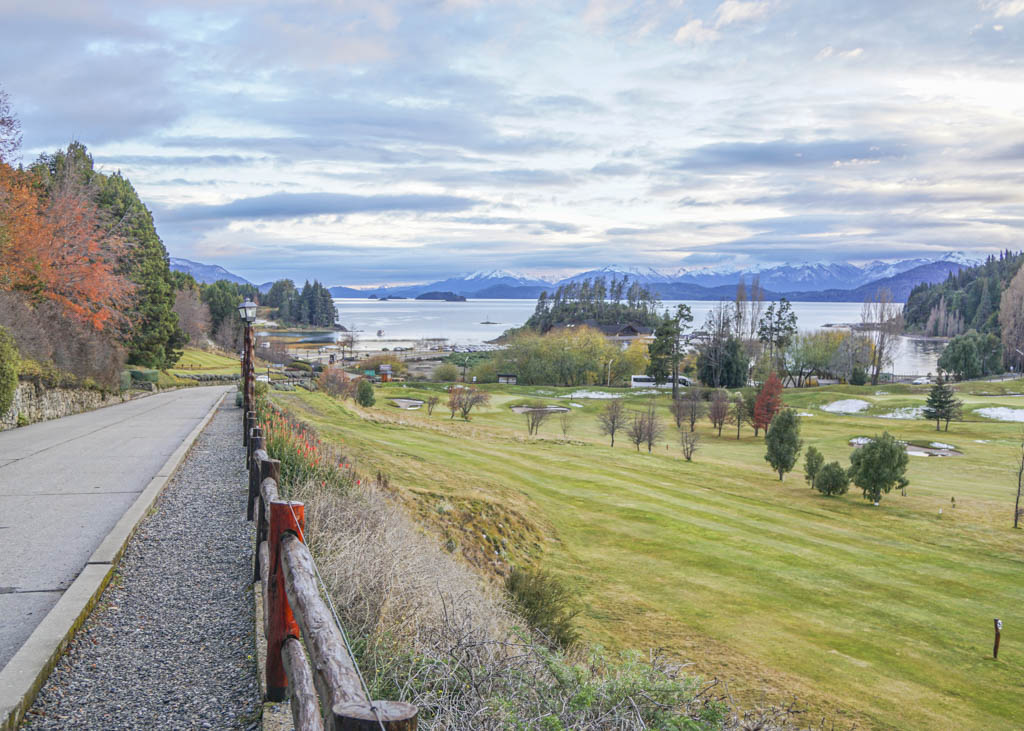
Hike to Refugio Frey
I highly recommend the Refugio Frey trek if you’d rather spend your day hiking around Bariloche as opposed to enjoying the views from a car.
It starts at Cerro Cathedral, which is Argentina’s largest ski resort. The trail ends at Refugio Frey, which sits in front of Laguna Toncek and is surrounded by craggy peaks.
The 22 km return hike takes 8 hours and is more challenging than the other hikes around Bariloche.
Best time to visit Patagonia
The best time to visit Patagonia is from October to April. The days are warmer and longer, providing ideal conditions for hiking and exploring.
Keep in mind that October and November will still be cold, and the glacier lakes may be iced up.
December through February are the best months to visit. But they’re also the busiest.
For less crowds and great weather, March is the ideal month to plan your Patagonia travel itinerary.
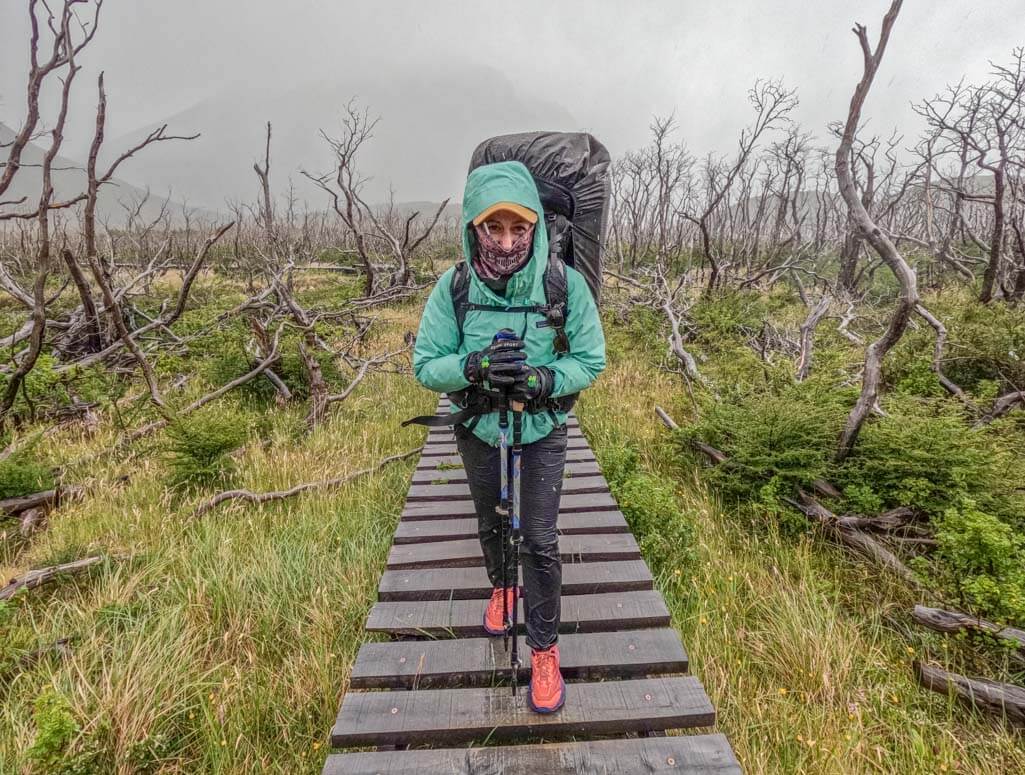
How many days should I spend in Patagonia?
You’ll need at least 7 days in Patagonia. But if you want to travel slower and visit all the attractions, you’ll need 2 weeks.
Which is better: Chilean or Argentina Patagonia
I loved Argentinian Patagonia! It’s home to my favorite places in Patagonia and has incredible hiking trails. It’s also a lot cheaper than the Chilean side.
Which is the best month to visit Patagonia?
If I could choose any month, it would be March. This is the end of high season, so the crowds are fewer. But the weather is still optimal, and you can expect long, sunny days.
Where do you fly into for Patagonia?
You can either fly into Buenos Aires in Argentina or Santiago in Chile. To get to the Patagonia region from there, you must fly to El Calafate or Bariloche in Argentina. Or Puerto Natales in Chile.
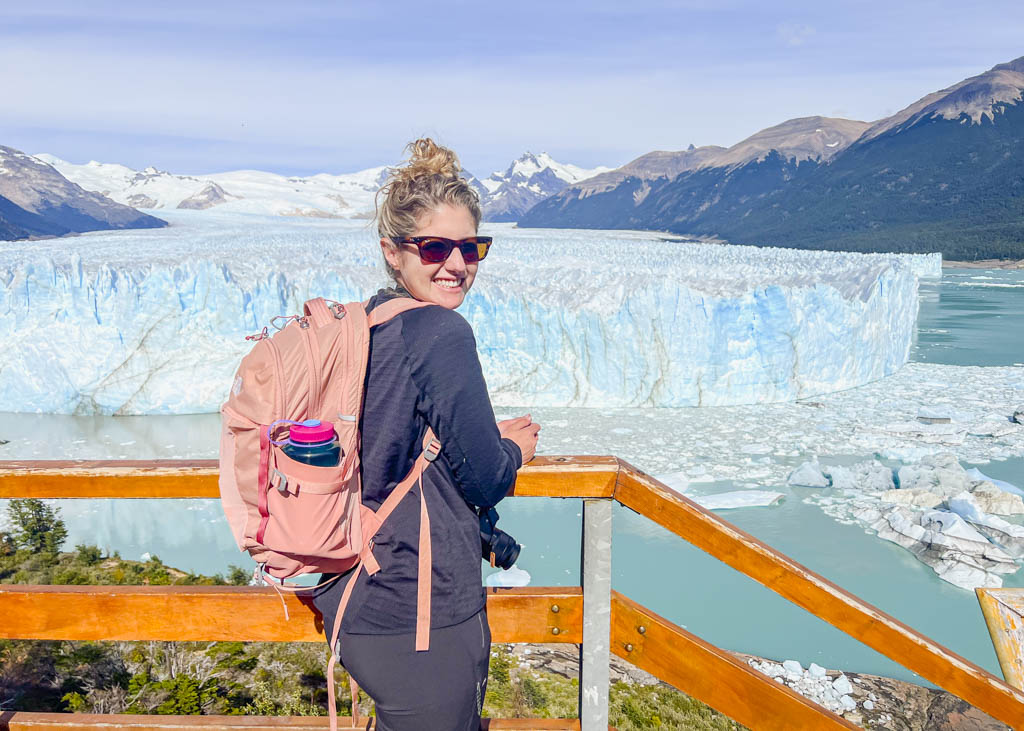
Final thoughts on my itinerary for Patagonia
I spent 7 months backpacking South America, and some of my best memories are from Patagonia.
But remember one thing about the region.
You can do all the planning and preparation for your trip, but unfortunately, you can’t prepare for the weather. It can be unforgiving, even during the summer months, which are said to be the best times to visit.
But no matter what Patagonia brings, embrace it. Enjoy the stunning scenery and take in the power of Mother Nature.
Like it? Pin it!
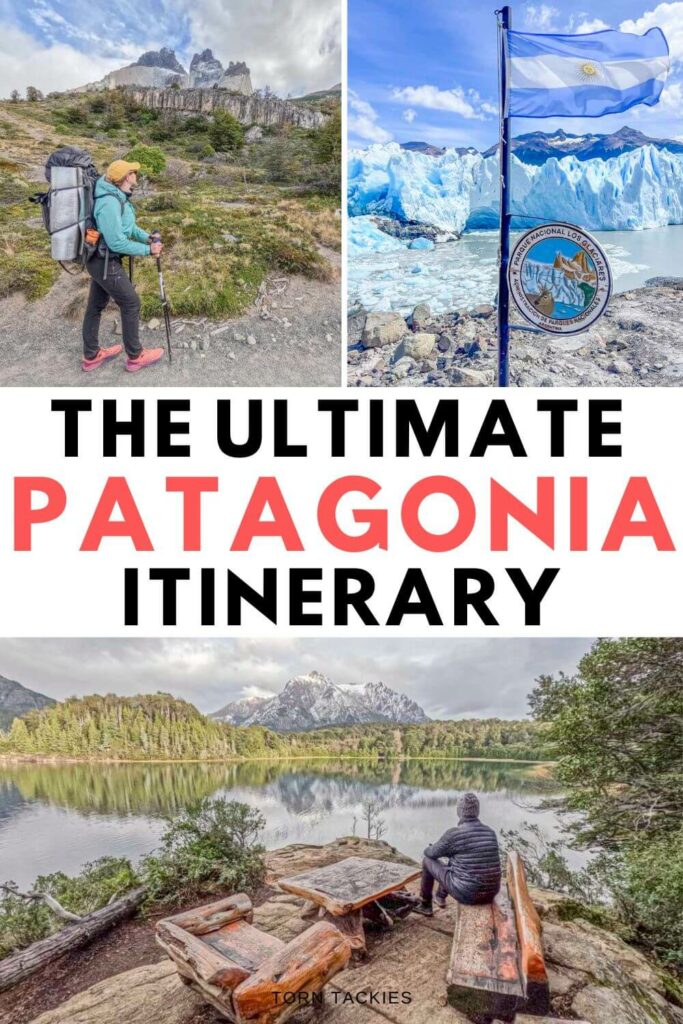
Planning your Patagonia itinerary and have any questions? Drop me a message in the comments section below.
Looking for more Patagonia travel inspiration? Check out my other posts!
- Hiking Mirador De Los Condores in El Chalten
- The Ultimate W Trek Packing List
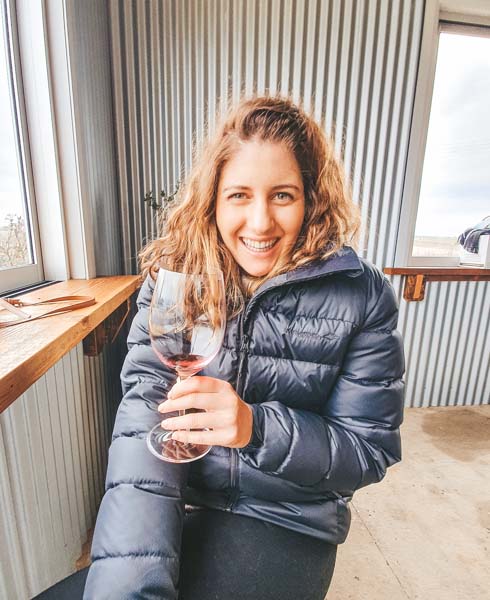
Hi, I'm Carryn. I’m an adventure travel blogger trying to figure out my way through life by traveling and exploring. Join me as I share my travel guides and tips for life abroad. Find out more about me here .
Where to stay in Cusco (before Inca trail): Best hotels and areas
The best argentina itinerary: how to spend 2 weeks in argentina, leave a comment cancel reply.

Guide to Patagonia: Essential Tips for First-Time Travelers
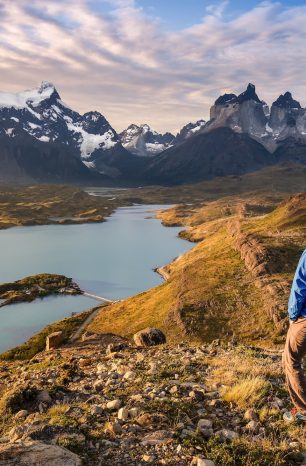
Embarking on your first adventure to Patagonia is an exhilarating experience, filled with the promise of breathtaking landscapes, diverse wildlife,…
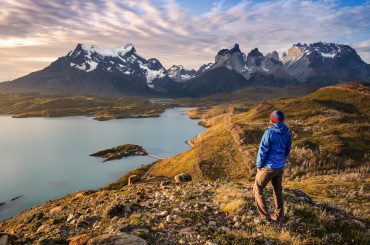
Discovering Patagonia unveils a treasure trove of awe-inspiring natural marvels and thrilling escapades. In this list, I give you an…
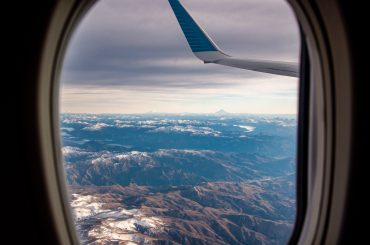
Traveling to Patagonia is relatively straightforward, but there are some crucial details to know about the Patagonia flights connections in…
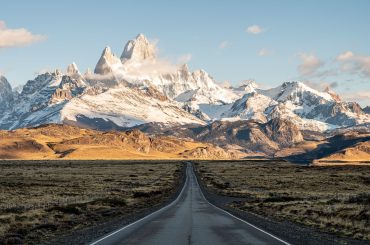
10 Essential Things You Need to Know Before Visiting Patagonia
Planning a trip to Patagonia? Get ready for an adventure of a lifetime! This remote and stunning region, located at…
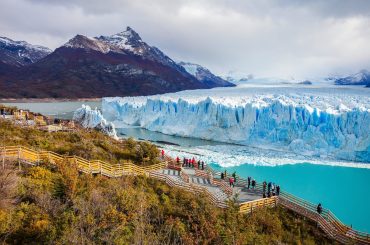
The tours in El Calafate You Must Do
There are tours in El Calafate you cannot miss! In this article, I make it a bit easier for you…
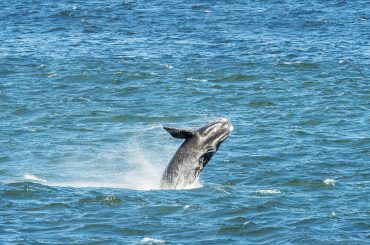
Whale watching in Patagonia (Argentina)
Whale watching in Patagonia, one of the nicest things to do in Puerto Madryn. Whale watching in Argentina is not…
G’ day and welcome on Secrets of Patagonia,
I’m glad that you are reading Secrets of Patagonia. After a couple of years living in Argentina, it was time to bundle all our Patagonia travel experiences on one page.
Traveling to South America is somehow special. That’s why we want to share all the information that we have about planning a trip to Patagonia. You will enjoy and discover so much more if you’re informed well and understand the way of traveling in Argentina and Chile. The idea of Secrets of Patagonia has it roots from my first project “ Secrets of Buenos Aires “. Give you honest and correct information about multiple topics. As locals, we learned the inside secrets on how to get the most out of your tour to Patagonia. From Peninsula Valdés to Ushuaia and back up to El Calafate, Torres del Paine, Bariloche, and so on.
You can contact me by email or Whatsapp: [email protected] or +5491125524682.
I hope you enjoy reading and have a pleasant trip to Patagonia. Disfruta!
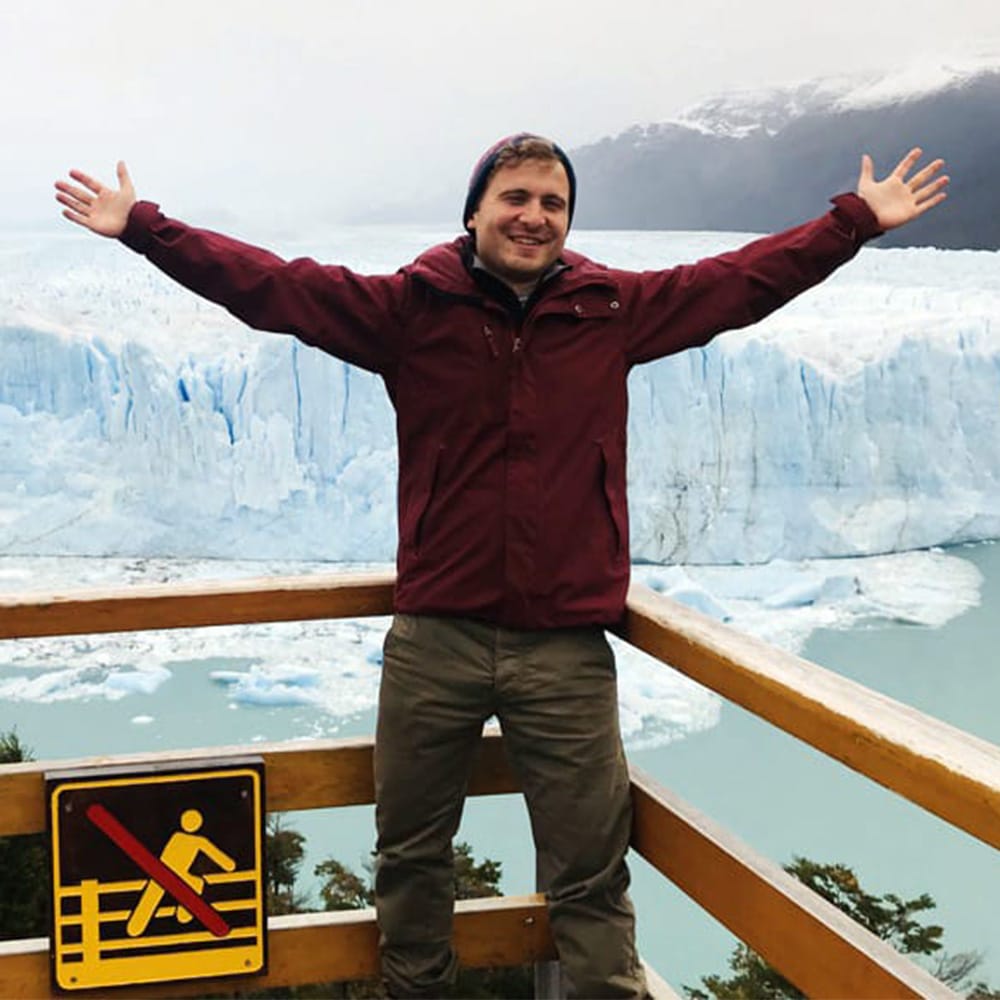
Secrets of Patagonia Today’s Pick
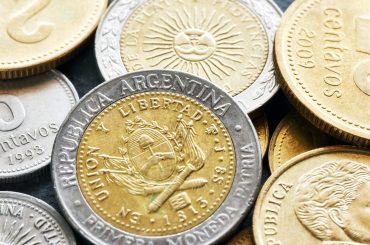
Where to exchange money in Patagonia
The last thing to happen during your Patagonia trip is not to have enough foreign currency with you. We speak…
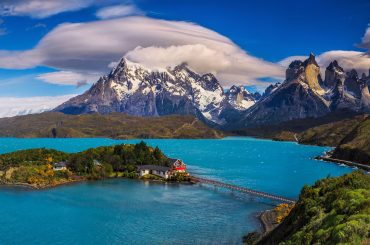
- How many days in Patagonia
Planning your trip to Patagonia is now ten times easier with our article: how many days in Patagonia. Probably you…
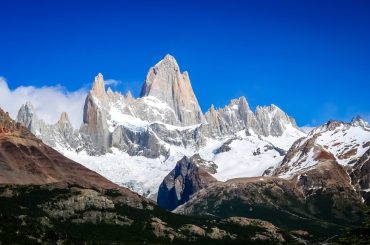
Hike Mount Fitz Roy and Laguna de los Tres
The hike Mount Fitz Roy is absolutely my favorite hike in Patagonia. In this article, I explain to you all…
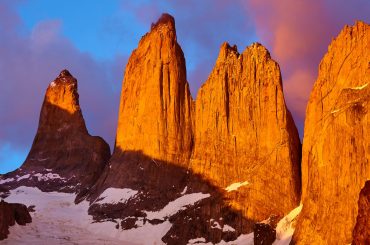
Getting from El Calafate to Torres del Paine
Getting from El Calafate to Torres del Paine is a common transfer between Argentina’s beautiful Patagonia landscape and Chile’s famous…
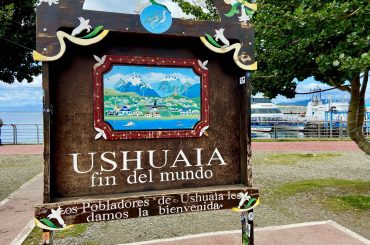
Things to do in Ushuaia
Probably you already know that Ushuaia is the most southern city in the world. Besides that fact its also one…
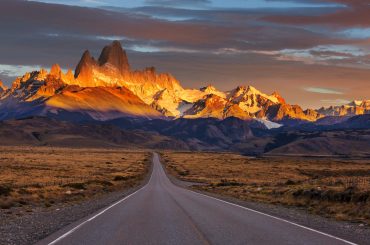
Getting from El Calafate to El Chalten
Traveling from El Calafate to El Chaltén is one of the most taken routes by hikers. You will pass stunning…
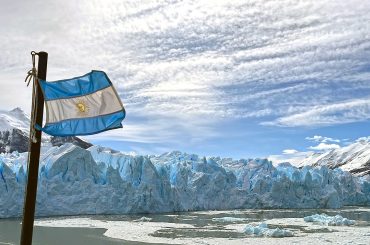
Top choice hotels in El Calafate
El Calafate is one of the busiest towns during high season. Many visitors arrive at the city which is the…
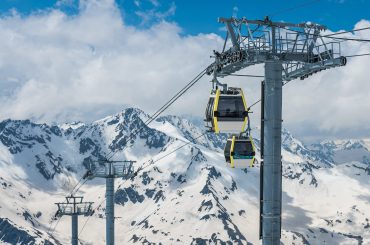
Ski in Patagonia: All You Need to Know
While Patagonia is famous for its stunning landscapes, including glaciers, mountains, and national parks, skiing is a not-that-famous activity. However,…
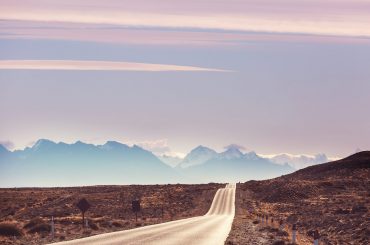
Best time to visit Patagonia
Do you know what is the best time to visit Patagonia? Well, it’s not just a specific period. It all…
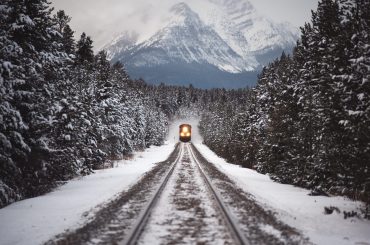
Patagonia train: how to take the Tren Patagonico
The Patagonia train drives on the iconic route between Viedma and Bariloche. How to book and ride Tren Patagonico? The ultimate guide.
- Transfers & Getting Around
- Best time to visit
- Exchange money
- El Calafate
- Puerto Madryn
- San Martin de los Andes
- Puerto Natales
- Punta Arenas
- Torres del Paine
- Bus & Car Transfers
Patagonia Tours, Treks, & Cruises
Our favorite tours to patagonia, trekking & hiking, small ship cruises, patagonia lodges, sea kayaking in patagonia, our favorite places to travel in patagonia.
- Torres del Paine
- El Calafate
10 Best Patagonia Tours for 2024-2025
Patagonia wildlife safari, ultimate patagonia trekking, patagonia camp - torres del paine, classic w trek, hotel las torres - torres del paine, awasi patagonia, dientes circuit trek, patagonia hiking express, ecocamp - torres del paine, torres del paine multisport, top 6 luxury patagonia tours for 2024-2025, top 4 patagonian fjord cruises for 2024-2025, 4 spectacular patagonia lodges for 2024-2025, explora patagonia, hotel las torres, our favorite destinations in patagonia, patagonia travel guide.
- Warm Seasons - November to March: The optimal time for travelers who seek warmer temperatures and the activities that are best enjoyed during this time falls between November and March. During these months, Patagonia basks in warmth, and daylight extends generously across both the Chilean and Argentine sides. Nights are remarkably short, lasting just six hours, though occasional night frosts and sleet may still visit the highlands even during the summer months. For a quieter experience amidst the spring blossoms, mid-November to mid-December offers fewer crowds.
- Cold Season - June to August: Winter in Patagonia, from June to August, may not be the best time for outdoor adventurers seeking hiking and trekking experiences. However, it does offer its unique charm. This is the best time to visit Patagonia if you're drawn to the solitude of snow-covered landscapes and want to try your hand at winter sports like skiing and snowshoeing. The lack of crowds and the dramatic icy landscapes make it a special season for those seeking a quieter, more introspective Patagonian experience.
- Transitional Seasons - Spring (October to November) and Autumn (March to April): In the transitional seasons, Patagonia undergoes fascinating transformations. Springtime in Patagonia, from October to November, ushers in a sense of renewal as the region awakens from its winter slumber. This is one of the best times to go to Patagonia if you prefer milder weather and fewer crowds. Spring offers crisp air, blooming landscapes, and wildlife returning to their breeding grounds, making it an excellent season for hiking and trekking through the picturesque trails of Torres del Paine and Los Glaciares National Parks. As autumn arrives, from March to April, the landscapes transform into a tapestry of warm, earthy hues. You will find Patagonia at its most colorful, showcasing vibrant autumn foliage while ushering in fewer visitors. The northern regions maintain some warmth compared to the south's milder temperatures.This is the best time of year to visit Patagonia for photographers and travelers who relish tranquility, with pleasant weather and opportunities for outdoor pursuits.
Top 12 Patagonia Places to Visit for Active Travelers
Best time of year to visit patagonia.
- Ushuaia, Argentina - a 3.5-hour flight from Buenos Aires also has 1.5-hour flights to El Calafate (or a 24+ hour bus ride!). Only 4 flights per week to Punta Arenas or a 12-hour bus + ferry ride complicate international transport. Airport: Ushuaia – Malvinas Argentinas International Airport (USH)
- El Calafate, Argentina - a 3.25 hour flight from Buenos Aires is the access point for Perrito Moreno Glacier, El Chalten & Glacier National Park. With no flights to Punta Arenas, a 5 hour bus ride to Puerto Natales, then 3 hours to Punta Arenas. El Calafate's airport is Comandante Armando Tola International Airport (FTE).
- Punta Arenas, Chile - located on the Strait of Magellan, is a 3.25 hour flight from Santiago. Buses/cars to Puerto Natales (2 hours) is the access point for Torres del Paine. Airport Presidente Carlos Ibáñez del Campo International Airport (PUQ).
Ushuaia Airport & Transportation
How do i get to patagonia's national parks and reserves.
- Los Glaciares National Park (Fitz Roy Area): Fly to El Calafate and drive approximately 220 kilometers (137 miles) to the park entrance.
- Tierra del Fuego National Park: Fly to Ushuaia and take a short 11-kilometer (7-mile) drive to the park entrance.
- Torres del Paine National Park: Fly to Punta Arenas and drive around 250 kilometers (155 miles) to reach the park. Alternatively, consider available bus and transfer services.
- Lakes District: Fly to Puerto Montt or Temuco, then drive to your destination. For example, from Puerto Montt to Pucon, it's approximately a 560-kilometer (348-mile) journey.
- Aysén Region: Fly to Balmaceda Airport and drive about 55 kilometers (34 miles) to reach Coyhaique, the regional capital.
- Patagonia National Park: Fly to Balmaceda Airport and drive roughly 340 kilometers (211 miles) to Cochrane, where the park is located.
- Nahuel Huapi National Park: Fly to Bariloche, a major gateway, and drive around 20 kilometers (12 miles) to reach the park entrance.
- Pumalín Park: Fly to Chaitén or Puerto Montt and take a ferry or drive to the park. From Chaitén to the park entrance, it's approximately a 20-kilometer (12-mile) drive.
- Spectacular Scenery: The park's signature feature, the towering granite spires known as the Torres del Paine, loom majestically over the landscape, casting awe-inspiring reflections in the glacial lakes below. Their dramatic presence is just the beginning of the visual feast that awaits visitors. Verdant valleys, azure lakes, pristine glaciers, and rugged mountains form a canvas of unparalleled beauty.
- Hiking and Trekking: Torres del Paine is a mecca for hikers and trekkers. Its extensive network of well-maintained trails caters to all levels of expertise. Whether you embark on the famous W Circuit or the more challenging O Circuit, you'll be rewarded with awe-inspiring vistas at every turn. Hiking through lush forests, past glistening waterfalls, and along crystal-clear rivers is an experience you won't soon forget.
- Glacier Adventures: The park also offers the opportunity to get up close and personal with some of the world's most magnificent glaciers. Glacier trekking and ice climbing are thrilling activities that allow you to explore the icy wonders of Grey Glacier, an otherworldly landscape of blue icebergs and surreal formations. Witnessing the calving of these colossal glaciers is a humbling experience that underscores the raw power of nature.
- Wildlife Encounters: Torres del Paine is not just about landscapes; it's a haven for wildlife enthusiasts too. While exploring the park, you'll encounter the hardy guanacos, graceful creatures reminiscent of smaller llamas. Keep a watchful eye out for the elusive pumas, the park's stealthy apex predators. Numerous bird species, such as Andean condors and Magellanic woodpeckers, grace the skies and forests.
Torres del Paine Geography
Tierra del fuego- the end of the world, top parks to hike & explore in patagonia.
- Los Glaciares National Park (Fitz Roy Area): Nestled in the southern Andes in Argentina, Los Glaciares National Park is renowned for the iconic Mount Fitz Roy. The park features stunning glaciers, including the famous Perito Moreno Glacier, and offers hiking trails showcasing breathtaking vistas.
- Tierra del Fuego National Park : Located at the southernmost tip of Argentina, Tierra del Fuego National Park is a pristine wilderness where the Andes meet the Beagle Channel. Explore diverse landscapes, from dense forests to coastal beaches, and embark on scenic boat rides.
- Torres del Paine National Park : One of Chile's most famous national parks, Torres del Paine is a haven for hikers and nature enthusiasts. Marvel at the iconic granite spires (torres), glaciers, and pristine lakes. Wildlife, including guanacos and condors, adds to the park's allure.
- Lakes District : The Chilean Lakes District is a captivating region with shimmering lakes, dense forests, and snow-capped volcanoes. Villarrica National Park, home to the active Villarrica Volcano, is a highlight. Explore charming towns like Pucon and Puerto Varas.
- Aysén Region : Aysén is a vast and sparsely populated region in Chile known for its remote wilderness and impressive glaciers. The Northern and Southern Patagonian Ice Fields contribute to the region's rugged beauty, with the picturesque Carretera Austral offering access.
- Patagonia National Park : This relatively new national park in Chile represents a significant conservation effort. It encompasses diverse ecosystems, from grasslands to mountains, and aims to protect wildlife while providing opportunities for sustainable recreation.
- Nahuel Huapi National Park: While not exclusively in Patagonia, Nahuel Huapi National Park in Argentina's Lakes District is worth mentioning. It features stunning alpine lakes, lush forests, and the iconic Andean-Patagonian landscape.
- Pumalín Park: Pumalín Park, also in the Aysén Region, is known for its biodiversity and lush rainforests. Visitors can explore trails, witness cascading waterfalls, and appreciate the park's commitment to conservation and eco-friendly practices.
- hiking & glacier trekking
- penguin spotting
- horseback riding
- yoga hosted at the main lodge
- Perito Moreno Glacier
Patagonia FAQs
- Stunning Natural Beauty: Travel to Patagonia to witness some of the world's most awe-inspiring landscapes, including the Andes Mountains, the Perito Moreno Glacier, and the fjords of Tierra del Fuego.
- Outdoor Adventures: Patagonia travel offers a wide array of outdoor activities, from hiking in Torres del Paine National Park to kayaking in the Beagle Channel.
- Unique Wildlife Encounters: During your Patagonia tour you can discover diverse wildlife, including the Magellanic penguin colonies and the southern right whales.
- Photographic Opportunities: Capture the ever-changing scenery on your Patagonia trip, from snow-capped peaks to colorful valleys.
- Cultural Richness: Immerse yourself in Patagonia's indigenous cultures, like the Mapuche and Selk'nam, adding depth to your Patagonia travel experience. Learn about the local way of life, including the gaucho culture and the history of European colonization while visiting Patagonia.
- Diverse Weather: Patagonia's climate varies, mirroring its diverse geography. Its unpredictable weather, which can include experiencing "four seasons in a day," and its seasonal changes provide unique experiences, from spring blossoms to winter sports, on each visit.
- Adventure Opportunities: From trekking in Los Glaciares National Park to horseback riding in El Chaltén, Patagonia offers countless adventure options, making your Patagonia travel unforgettable.
- Eco-Tourism Initiatives: Responsible tourism initiatives in Patagonia focus on conservation and sustainable practices, protecting its fragile ecosystems during your Patagonia trip.
- Indulge in Local Cuisine: Sample regional dishes like roasted lamb and seafood, influenced by the unique culinary traditions of Patagonia.
Best Patagonia Cruise Lines for 2024-2025
- Silversea Cruises - sail from Chile's Valparaiso to Argentina's capital Ushuaia and several more itineraries in Patagonia that offer all-inclusive Antarctica expedition cruises. This all-inclusive cruise comes with unlimited wine, cocktails, specialty beverages, daily high tea and canapés, Zodiac excursions with highly qualified naturalists onboard, all land tours, and local guides.
- Ponant - subtly combines luxury, intimacy, and serene well-being. Patagonia evokes that exotic sense of distant lands on the far side of the world. On the Le Boreal , travelers searching for a complete change of scenery are sure to be enchanted and delighted by the glaciers, the fjords, the vast plains, and the beautiful lakes surrounded by the serrated peaks of the Andes.
- Oceanwide Expeditions - is a Dutch cruise line organizing polar voyages to the Arctic and Antarctica. Discover Patagonia's deep south, a spectacular landscape of natural beauty, where hiking paths reveal glacial lagoons, alpine meadows, and blue glaciers aboard the newest, most advanced vessel, Polar Class 6 cruise ship MV Janssonius .
- Aurora Expeditions - is an Australian-owned company with advanced, purpose-built expedition ships Greg Mortimer and Sylvia Earle . Witness ice calving from Perito Moreno's 5km glacier front, watch the sunrise over the legendary Torres del Paine and enjoy breath-taking views from Cerro Fitz Roy and Cerro Torres base camps.
- Quark Expeditions has seasoned veterans with rich backgrounds in marine biology, history, glaciology, geology, and more. Embark on a small polar vessel like the 172-guest World Explorer , an all-balcony, all-suite expedition ship perfect for polar exploration, designed to navigate the fjords and waterways of Patagonia.
- Lindblad Expeditions - optimize your Patagonia experience with a land and sea expedition. Enjoy a three-day stay at the Tierra Patagonia Hotel & Spa or Explora Patagonia Hotel Salto Chico to fully appreciate Torres del Paine's famous vistas and wildlife. Then experience Patagonia's fjords, glaciers, and panoramic landscapes by expedition ship National Geographic Resolution .
- Polar Latitudes - is a founder-owned and operated cruise company that offers a wide range of trips to Antarctica and Patagonian channels. Recent upgrades on the MS Seaventure ensure the latest safety and style, including state-of-the-art stabilization, ice-strengthened hulls, the newest communication systems, and beautifully designed rooms and common areas.
- Poseidon Expeditions - is a leading polar cruise operator with itineraries aboard the 114 capacity Sea Spirit . This vessel has an ice-strengthened hull, a fleet of Zodiacs, and a set of retractable fin stabilizers for smoother sailing on the Patagonian fjords.
- Hurtigruten offers unique expedition cruises to some of the world's most remote and pristine waters. At home on MS Roald Amundsen your basecamp at sea, experience an informal, welcoming atmosphere, comfortable cabins, luxurious suites, and stylish interiors made from natural material on an all-inclusive Antarctica & Patagonia expedition.
- Skorpios Cruises - sail through fjords, gaze at glaciers and take in the spectacular landscape of Chilean Patagonia aboard the 160 guest MV Skorpios II .
Patagonia Travel Videos
Our Travel Stories
Elusive patagonia, tres amigos en patagonia, top patagonia travel destinations.
- Ainsworth Bay
- Magdalena Island
- Puerto Natales
- Punta Arenas
- Tierra del Fuego National Park
Patagonia Trips by Departure Date
- 2024 Patagonia trips (87)
- 2025 Patagonia trips (99)
- 2026 Patagonia trips (65)
- October 2024 (72)
- November 2024 (78)
- December 2024 (80)
- January 2025 (81)
- February 2025 (79)
- March 2025 (81)
- April 2025 (63)
- January 2026 (60)
- March 2026 (61)
Top Experiences in Patagonia
- Patagonia Land Tours (46)
- Patagonia Cruises (35)
- Patagonia Small Ship Cruises (31)
- Patagonia Active (27)
- Patagonia Wildlife & Safari Exploration (23)
- Patagonia Trekking (17)
- Patagonia Cultural (9)
- Patagonia Luxury (8)
- Patagonia Most Popular (8)
- Patagonia Family (8)
- Patagonia Solo Travel (7)
- Patagonia Fly Cruises (5)
- Patagonia Scheduled Group Tour (3)
Patagonia Trips by Duration
- 5 day trips (20)
- 6 day trips (10)
- 7 day trips (9)
- 8 day trips (9)
- 9 day trips (10)
- 10 day trips (4)
- 11 day trips (3)
- 12 day trips (3)
- 13 day trips (5)
- 14 day trips (3)
- 15 day trips (4)
- 17 day trips (3)
- 18 day trips (3)
Patagonia Trips by Activity
- Patagonia wildlife viewing (57)
- Patagonia hiking (49)
- Patagonia kayaking (25)
- Patagonia horseback riding (18)
- Patagonia camping (16)
- Patagonia whale watching (15)
- Patagonia adventure options (12)
- Patagonia whitewater rafting (8)
- Patagonia wilderness lodge exploration (8)
- Patagonia village visits (8)
- Patagonia land & sea exploration (7)
- Patagonia wine tasting (7)
- Patagonia biking (6)
- Patagonia fishing (5)
- Patagonia spa relaxation (5)
- Patagonia snorkeling (4)
- Patagonia local market visits (3)
- Patagonia urban exploration (3)
- Patagonia skiing (3)
Why Travel With Adventure Life
Recognized by.

Patagonia Tours & Vacations

Sandwiched between two oceans and sprawled across two countries. Patagonia is as ‘end-of-the-world’ as it gets.
Advancing glaciers, gushing waterfalls, snow-topped granite pillars…it’s no wonder Chile and Argentina both stake a claim over this beautiful slice of South America . Where else can you hike past herds of guanaco, hear giant shards of ice crash into the sea, sail the Beagle Channel past unique flora and fauna, and drop by the world’s southernmost city? If anywhere makes you feel small, it’s Patagonia. Adventure to the end of the world and appreciate our planet at its most wild and spectacular.
Our Patagonia trips
Let's create an exclusive trip for your group.
Patagonia highlights
Patagonia tour reviews.
Filter by rating
Classic Hikes of Patagonia
Articles of Patagonia
Best places to travel in November
Chill out: Beat the summer heat with these cool escapes
Finding the secret sauce to a great group in Patagonia
Travelling to Chile? Here’s the best time to go
7 different ways to see Patagonia with Intrepid
Travel is back and we just dropped 10 new Premium adventures
8 awesome experiences you MUST have in Argentina
Hiking in Torres del Paine? Here’s what you need to know
Patagonia travel FAQs
Where is patagonia.
Patagonia is a geographical region located at the southern tip of South America.
It spans the lower sections of Argentina and Chile and is governed by both countries.
Do I need a visa to visit Patagonia?
You will need to organize your visa. Entry requirements can change at any time, so it's important that you check for the latest information.
Please visit the relevant consular website of the country or countries you’re visiting for detailed and up-to-date information specific to your nationality.
Check the Essential Trip Information section of the itinerary for more information.
What is the weather like in Patagonia?
Patagonia is much cooler than the rest of South America. With diverse terrain ranging from glaciers to mountains and coastlines, the region sees extreme variations in weather.
Average temperatures range from 48-64°F in summer and 32-43°F in winter, but sub-zero temperatures are common.
The weather can be unpredictable at any time of year, and it feels much cooler when there are strong winds.
Snow is possible towards the end of autumn (May), and continues into winter with heavy snowfall down south and in the mountains.
When is the best time to visit Patagonia?
October to March (spring/summer) is considered to be the best time to visit Patagonia; this is when most of our trips run. During this period, daytime temperatures average up to 72°F, but it's a chilly 39°F at night.
Rain and strong winds are possible at any time of year and can make the temperature feel much cooler.
Is tipping customary in Patagonia?
Tipping in Patagonia is common, but only when you’re satisfied with the service.
Aim for 10-15% of a bill at a restaurant or cafe as a general guide (if it’s not included already).
It’s also common to give hotel porters, drivers and other staff a small tip.
What is internet access like in Patagonia?
You will find wi-fi in most hotels, cafes and restaurants in large towns and cities, but it can be harder to find as you venture to more remote areas.
You may wish to buy a local SIM card if you want to stay in contact with folks at home, but a phone signal can still be patchy in remote areas.
What are the toilets like in Patagonia?
You will find Western-style flushable toilets in Patagonia.
It is a good idea to carry your own toilet paper and hand sanitizer, as they’re not always provided.
Just note that while the toilets are modern, the plumbing isn’t and can clog easily, so you may see signs asking you not to flush toilet paper and use the bin provided instead.
What is ATM access like in Patagonia?
ATMs are available in larger towns and cities but are less common in small villages or rural areas.
Make sure you have enough cash before leaving urban areas.
Argentina uses the Argentinean Peso, while Chile uses the Chilean Peso. It might also be worth bringing some US dollars.
Can I use my credit card in Patagonia?
Credit cards may not be accepted in small towns and rural areas.
Make sure to carry enough cash when visiting rural areas in case credit cards are not an option.
What to pack for Patagonia
Please check your Essential Trip Information for a complete list of packing suggestions for your itinerary.
These are the basics you will need to bring for an active adventure in Patagonia:
- Closed-in, waterproof walking shoes/hiking boots
Sun protection (hat, sunscreen, sunglasses)
Rucksack and day bag
Reusable water bottle
Thermal base layers
Hiking clothing
Waterproof/windproof jacket
Do I need to purchase travel insurance before traveling?
Absolutely. All passengers traveling with Intrepid are required to purchase travel insurance before the start of their trip. Your travel insurance details will be recorded by your leader on the first day of the trip. Due to the varying nature, availability and cost of health care around the world, travel insurance is very much an essential and necessary part of every journey.
For more information on insurance, please go to: Travel Insurance
Are Intrepid trips accessible for travelers with disabilities?
We are committed to making travel widely accessible , regardless of ability or disability. We do our best to help you see the world, regardless of physical or mental limitations.
We are always happy to talk to travelers with disabilities and see if we can help guide them toward the most suitable itinerary for their needs and, where possible, make reasonable adjustments to our itineraries.

Check out this year's Best in Travel winners
On South America’s southern frontier, nature grows wild, barren and beautiful. Spaces are large, as are the silences that fill them. For the newly arrived, such emptiness can be as impressive as the sight of Patagonia’s jagged peaks, pristine rivers and dusty backwater oases. In its enormous scale, Patagonia offers a wealth of potential experiences and landscapes.
Best Time to Visit
Best places to visit, attractions, must-see attractions.

Glaciar Perito Moreno
Inland Patagonia
Among the Earth's most dynamic and accessible ice fields, Glaciar Perito Moreno is the stunning centerpiece of the southern sector of Parque Nacional Los…

Museo Paleontológico Egidio Feruglio
Coastal Patagonia
Showcasing the most important fossil finds in Patagonia, this natural-history museum offers outstanding life-size dinosaur exhibits and more than 1700…

El Calafate
Unique and exciting, this gorgeous museum illuminates the world of ice. Displays and bilingual films show how glaciers form, along with documentaries on…

Puerto Madryn
Celebrating the area’s unique marine ecosystem, this masterpiece brings an artistic sensitivity to extensive scientific research. There are exhibits on…

Portal La Ascensión
An outstanding addition to Parque Nacional Patagonia, this historic estancia on Lago Buenos Aires has an information center, lakeside car camping and a…
Parque Nacional Los Glaciares
Among the Earth’s most dynamic and accessible ice fields, Glaciar Perito Moreno is the stunning centerpiece of the southern sector of Parque Nacional Los…

Reserva Faunística Península Valdés
Lying on Argentina's barren eastern Patagonian coast, this oddly shaped peninsula is home to some of the country's richest wildlife. Elephant seals,…

Cueva de las Manos
The incredible rock art of Cueva de las Manos was proclaimed a Unesco World Heritage site in 1999. Dating from about 7370 BC, these polychrome rock…
Planning Tools
Expert guidance to help you plan your trip.
Best Things to Do
From exploring the grasslands on horseback to hiking mountain trails to glaciers, here are the best experiences in Patagonia.
Transportation
Patagonia is vast, but luckily, there are plenty of different transport options. Here are our tips on getting around.
Free Things to Do
Patagonia can be the most expensive place to visit in Chile and Argentina. But fear not! These are the best things to do for free (or almost free).
Best Road Trips
From remote scrubland to towering glaciers, a road trip will bring you to every corner of Patagonia like nothing else. Here are 8 of the best.
Plan with a local
Experience the real Patagonia
Let a local expert craft your dream trip.
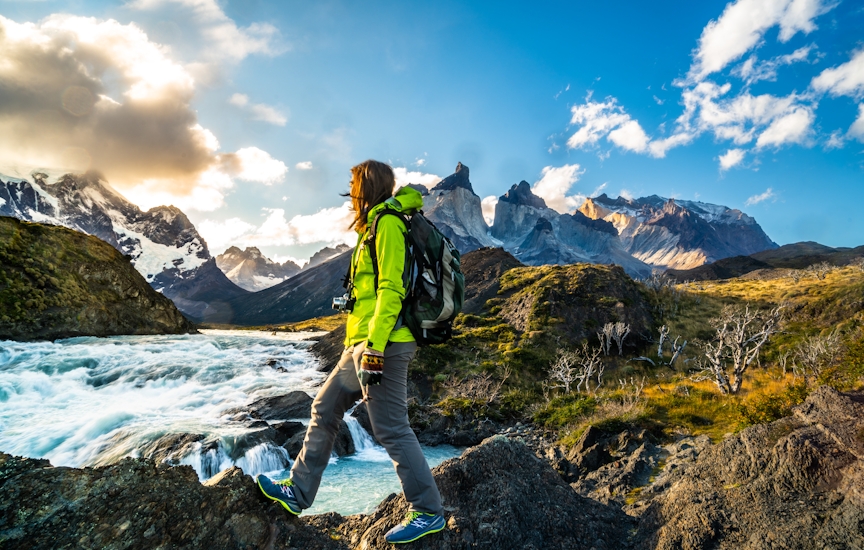
Latest stories from Patagonia
Filter by interest:
- All Interests
- Adventure Travel
- Art & Culture
- Beaches, Coasts & Islands
- Food & Drink

Jun 30, 2024 • 11 min read

Jun 29, 2024 • 7 min read

Jun 29, 2024 • 9 min read

Jun 28, 2024 • 7 min read
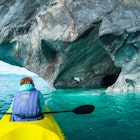
Jun 26, 2024 • 10 min read
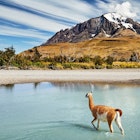
Jun 25, 2024 • 13 min read

Jun 24, 2024 • 10 min read

Sep 26, 2023 • 7 min read

Feb 21, 2023 • 4 min read

Feb 8, 2023 • 4 min read
Patagonia and beyond

Our 7 Best Patagonia Itineraries
Customers rate Zicasso's travel referral service 4.9 on a scale of 1 to 5 based on 1581 reviews on Trustpilot
We match you with top tour companies that specialize in the trip you want, whether it's a customized private tour or a group tour.
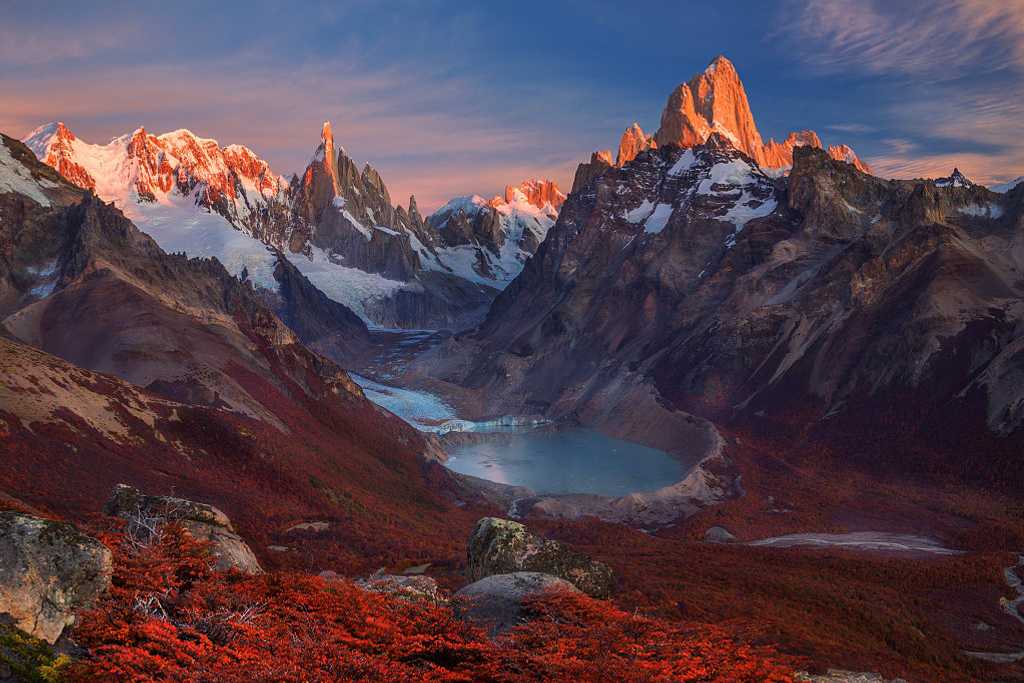
Fitz Roy Mountain, Patagonia
Barren, shimmering, and wild, Patagonia embodies the frontier of South America, where untamed nature reigns supreme, and our seven best Patagonia itineraries can inspire your excursion.
With jagged peaks, pristine glacial lakes, winding rivers, and surprising oases, there is a wealth of experiences to uncover in breathtaking nature. From glaciers to pampas, luxurious ski resorts to remote chalets, Patagonia brings to life solitude and fantasy.
Whether looking for the perfect couples’ trekking getaway or a family-friendly immersion into nature, you can find the right adventure for you with the following sample trips.
1. Mesmerizing Patagonia and Antarctica Trip of a Lifetime
2. patagonia adventure tour: thrilling activities, serene nature, marvelous luxuries, 3. crossing the andes mountains in patagonia by horseback and trekking, 4. hiking patagonia: two-week active adventure, 5. 3-week family tour of patagonia and the capitals of chile and argentina, 6. heart of patagonia: two-week tour of chile and argentina, 7. 17-day off-road adventure: hike, kayak and discover patagonia, plan your patagonia itinerary with a travel specialist.
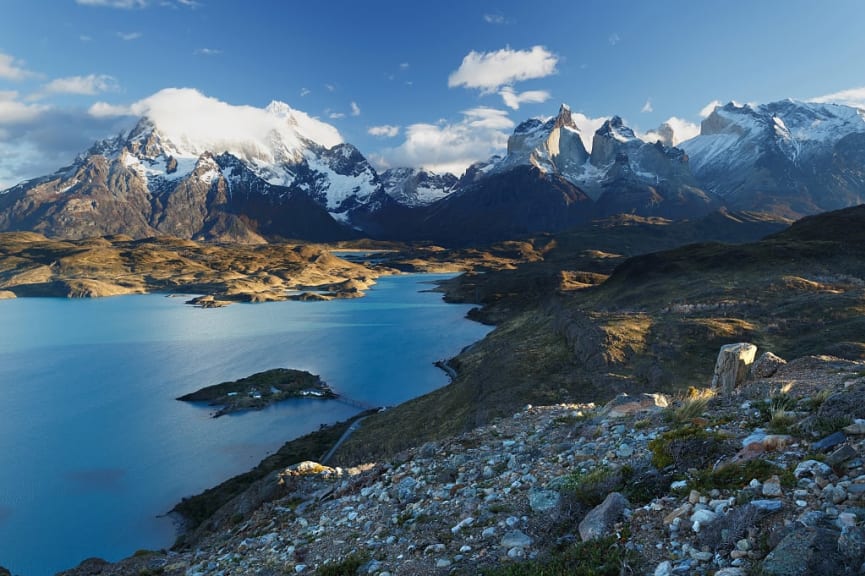
Torres del Paine, Patagonia, Chile
Length: 27 days
Places Visited: Santiago, Valparaiso, Casablanca Valley, Torres del Paine, El Calafate, Perito Moreno Glacier, El Chalten, Ushuaia, Buenos Aires
Why we recommend this sample itinerary:
With a passion for adventure and the time to experience the true essence of the untamed wilderness, Mesmerizing Patagonia and Antarctica Trip of a Lifetime designed by Alejandro, a Patagonia travel specialist, will take you on a 27-day luxury tour through natural splendor.
Vineyards and tango halls, king penguins and endless snowy expanses, glinting glaciers and soaring granite towers create an epic image. Whether looking for exceptional treks, kayaking stunning glacial lakes, or traveling to remote shores of the Seventh Continent, your Patagonia and Antarctica adventure will make your trip of a lifetime come true.
Learn more: 10 Best Places to Visit in Patagonia • Antarctica Cruises, Tours, and Vacations
Expert Tips for Discerning Travelers
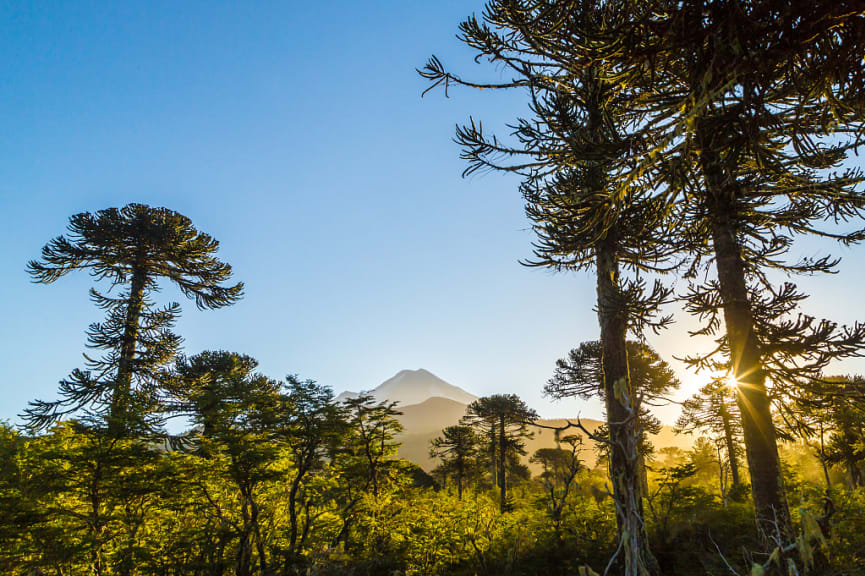
Conguillio National Park, Chile
Length: 12 days
Places Visited: San Martín de los Andes, Puerto Fuy, Junín de Los Andes, Villa la Angostura, Bariloche
Embrace the serenity of nature during this Patagonia Adventure Tour: Thrilling Activities, Serene Nature, Marvelous Luxuries designed by Hugh, a Patagonia travel specialist. It will demonstrate the nature and culture of the remote wilderness.
Among the picturesque mountain peaks and sprawling pampas, you can find storybook architecture and the drama of the glacial tundras. Indulge in the spirit of adventure with active excursions that take you mountain biking around glacial lakes or cruising hidden canyons in one of the world's most remote corners.
Kayak, hike, and simply bask in the beauty of your surroundings as you discover the splendor of the natural world on your personalized Patagonia trip itinerary.
Learn more: Top 7 Things to Do in Patagonia
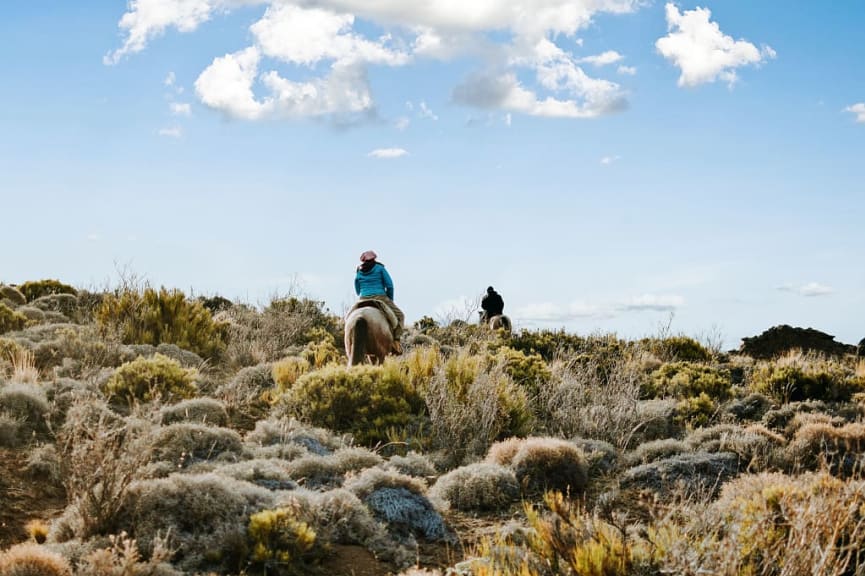
Length: 11 days
Places Visited: Bariloche, Chubut, Llanquihue, Cochamó, Puerto Varas
The promise of culture and discovery will guide you across the borders of Argentina and Chile during your 11-day Crossing the Andes Mountains in Patagonia by Horseback and Trekking tour, also created by expert Patagonia travel specialist Hugh.
As you venture through the unique mountainous terrain to visit local communities, you can find remote wilderness sanctuaries and dazzling untouched lakes while following the traditions of the gauchos.
From grasslands to glaciers, lush forests to glacial waters, you will find a new Patagonia when traveling on horseback and following hiking trails.
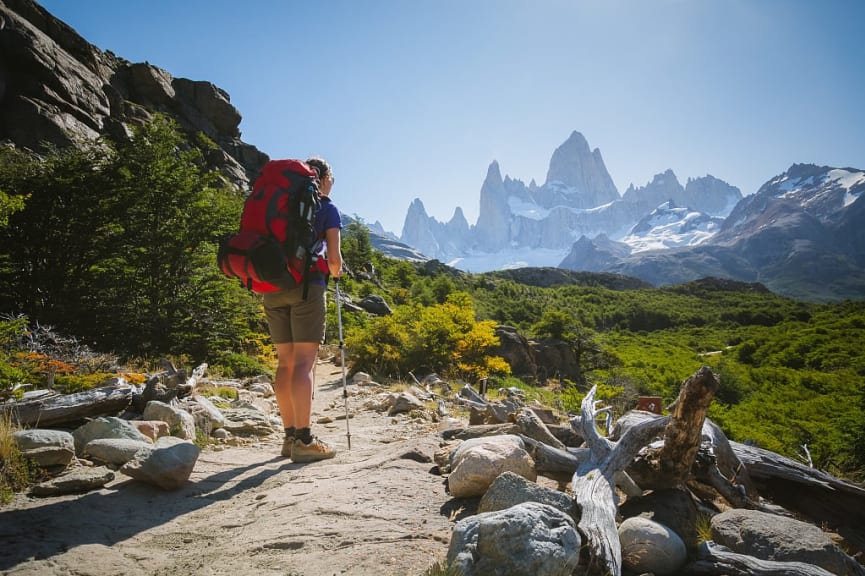
Los Glaciares National Park, Patagonia, Argentina
Length: 15 days
Places Visited: Buenos Aires, El Calafate, Puerto Natales, Torres del Paine National Park, El Chaltén
Rugged and breathtaking, Kiernan, a travel specialist for Argentina, created the Hiking Patagonia: Two-Week Active Adventure to unveil the remarkable beauty of the pristine landscape and captivating culture of Buenos Aires.
Marvel at the granite towers of Torres del Paine, climb the rolling surface of Grey Glacier, and embrace the shadows of drifting icebergs at Torre Lagoon as you dive deep into nature’s secluded majesty.
From Fitz Roy's peak to the tango rhythm, you will experience the heart of Patagonia and the pulse of Argentina on this itinerary.
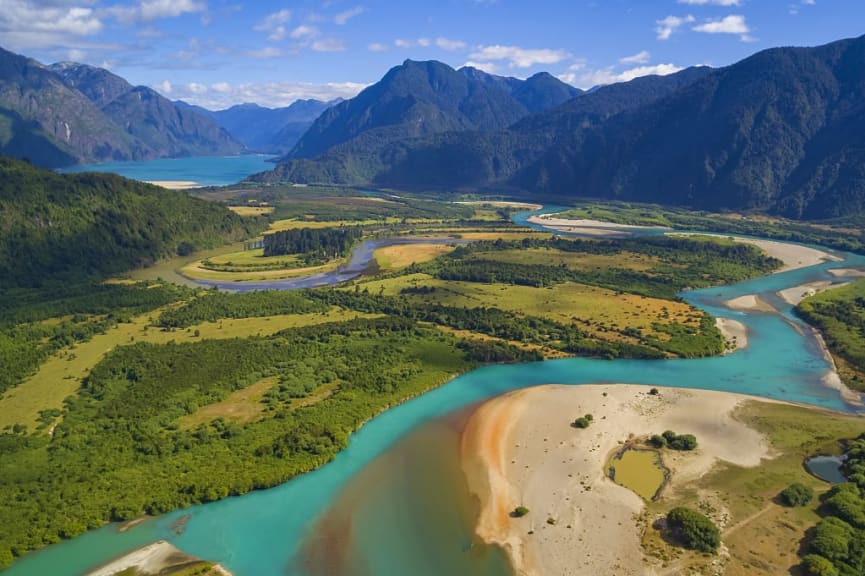
Puelo River Valley, Chile
Length: 19 days
Places Visited: Santiago, Casablanca, Puelo, Puerto Natales, Torres Del Paine, El Calafate, Buenos Aires
With the promise of remote magic and secluded comforts, Ivan and his team of Patagonia travel experts designed the 3-Week Family Tour of Patagonia and the Capitals of Chile and Argentina tour as the perfect family-friendly immersion into the adventures of the region.
Whether discovering the exciting ambiance of Buenos Aires or the artistic visions of Santiago, exploring the hanging glaciers around El Calafate or witnessing the icy waters beneath Torres del Paine massif, you can take your time witnessing the wildlife and exceptional scenery.
Set out on horseback, ATVs, and hiking trails for the ultimate way to explore Patagonia as a family on this Chile Patagonia itinerary that crosses into Argentina.
Learn more: Chile Tours & Vacations • Argentina Tours & Vacations
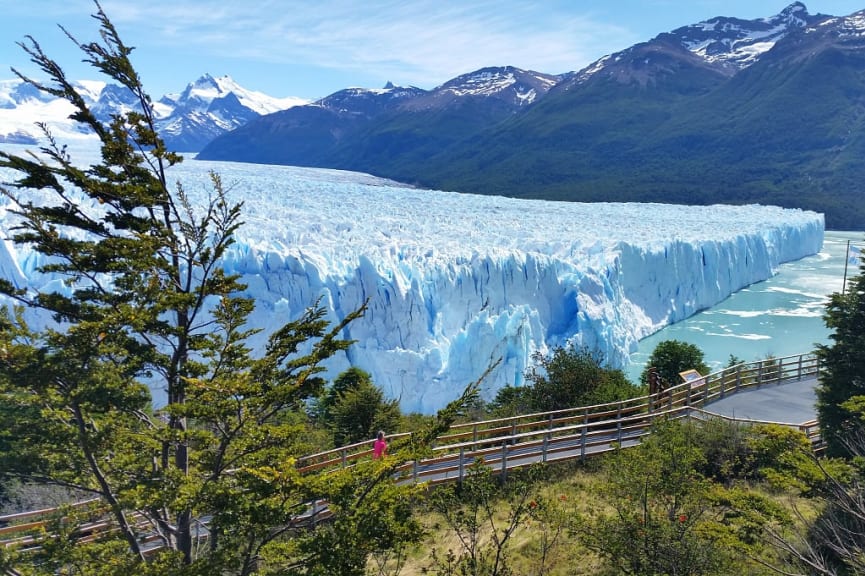
Los Glaciares National Park, Argentina
Length: 14 days
Places Visited: Santiago, Punta Arenas, Torres del Paine, El Calafate, Perito Moreno Glacier, El Chal, Fitz Roy
You can travel to the heart of the wilderness in search of penguins or vicuna, glaciers or granite cliffs during your Heart of Patagonia: Two-Week Tour of Chile and Argentina tour designed by Christian, another Patagonia travel expert.
Travel through the most iconic points of the southern region between Chile and Argentina, from Santiago to Buenos Aires. Embrace unparalleled mountain views where glaciers glint in the sunlight and enjoy a unique visit to a thriving penguin colony.
From looming icebergs to cruising beneath a soaring ice wall, as you explore Patagonia, you can bask in the connection between adventure and natural wonder.
Learn more: Argentina & Chile Tours
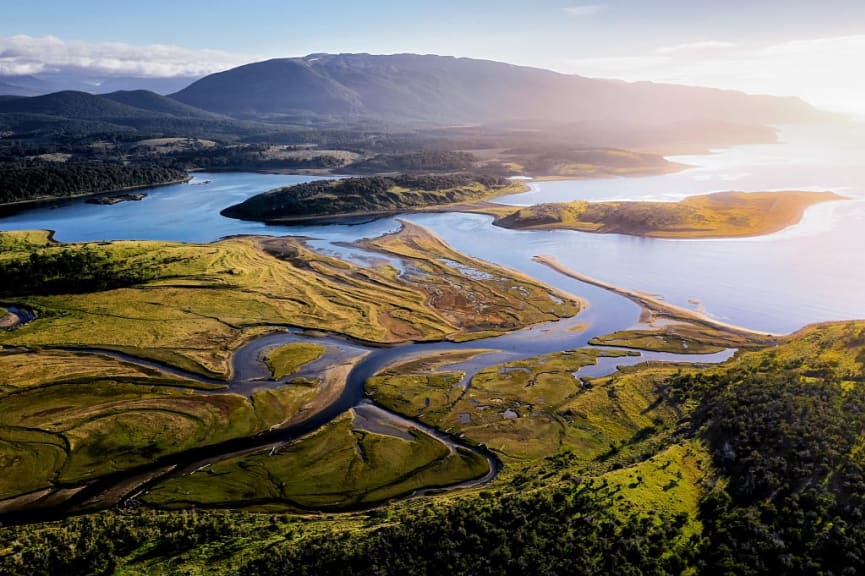
Beagle Channel in the Tierra del Fuego archipelago
Length: 17 days
Places Visited: Buenos Aires, El Chalten, El Calafate, Ushuaia
Patagonia travel expert Ezequiel created the 17-Day Off Road Adventure: Hike, Kayak and Discover Patagonia as an exploration of a region that has never been tamed.
From half-frozen lakes to winding whitewater rapids, overlooked trails to perfect mountain-biking excursions, you can discover the best panoramas to appreciate the magnitude of Patagonia. Kayak the Beagle Channel, trek to view a receding ice wall, and sample the customs of Argentinian flavor with a five-course meal.
As you break away from the familiar, you will find unfettered beauty and splendor in untouched Patagonia.

Mount Fitz Roy in Argentine Patagonia
Your ideal Patagonia itinerary may consist of an up-close view of the Torres del Paine towers, a walk through the storybook ambiance of a mountain town, a horseback ride with authentic gauchos, or a cruise beneath the soaring ice wall of an ancient glacier.
Zicasso’s Patagonia Tours capture the spirit of adventure and marvels of nature during an incredible journey to find unique wildlife, expansive wilderness, and distinct culture. As you start to plan for Patagonia, you can find more tips and inspiration in our Patagonia Travel Guide .
Life-Enriching Travel Designed Just for You
Trips curated by the world’s top destination experts
Concierge-level service leading up to and during your trip
Unique, exclusive experiences and insider access
Help Me Plan My Trip
Get Top Travel Specialists to Help Plan Your Trip

Find your perfect tour
- FAQ/COVID-19
- Testimonials
- Travel agent login
- X Search Tours
Patagonia Tours
Start exploring patagonia the region of patagonia includes parts of chile and argentina. experience patagonia hiking tours, small group tours or treks. tailor-made itineraries from 5 days, experience patagonia travel.
With a surface area of approximately 800,000 square kilometers, the region known as Patagonia encompasses the southern cone of South America (including parts of both Chile and Argentina). On the Chilean side, it begins south of the city of Puerto Montt. In Argentina, it begins south of the Colorado River. Patagonia ends in Tierra del Fuego, where Cape Horn is located. The population density in Patagonia is approximately 1-2 persons per square kilometers, making it one of the most sparsely populated regions in the world.
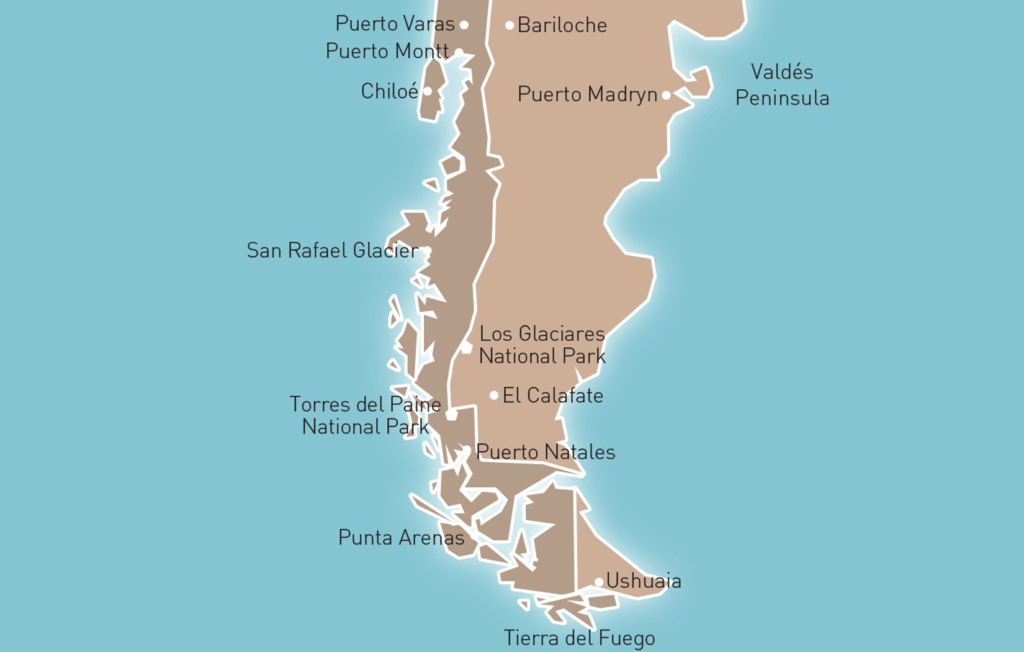
Patagonia Travel Information
The patagonian region.
The Argentinean side of Patagonia is divided into three regions: Andean Patagonia (a very mountainous area), Central Patagonia (dominated by plains), and Atlantic Patagonia (a coastal region). The Chilean side is divided into Northern Patagonia, in the province of Aisén, and Southern Patagonia, in the province of Magallanes. Chilean Patagonia is primarily mountainous with a rugged coast composed of countless channels, fjords and islands.
Patagonia is also home to the Northern and Southern Ice fields. The Northern Icefield runs for nearly 200 kilometers and covers a surface of 4,200 square kilometers. The Southern Icefield is over 350 kilometers long and has a surface of approximately 13,000 square kilometers. These icefields are located along the Andes at an average altitude of 1,500 meters. Located mainly in Chile, some branches of the Southern Icefield extend into Argentina.
Spring (September- November) warm days and chilly nights with strong wind and rain more often than not. Generally lower prices due to fewer crowds. It is also a great time to study plants and see wildlife.
Summer (December – February) the warm temperature is the best time to visit which brings in the crowds, high winds and cold nights. Visitors are more likely to see wildlife with skies with good visibility during the days and nights.
Autumn (March – May) chillier temperatures with increasing cold days and snow later in the season. Fewer crowds and foliage is stunning during this season making it a photographers paradise
Winter (June – August) unpredictable weather, low visibility and possibilities of snowstorms during the winter season. Not an ideal time to visit as many of the trails and main attractions are close or are inaccessible.
Torres Del Paine National Park
South America’s most famous and a UNESCO World Biosphere Reserve, Torres Del Paine is best recognised for its magnificent central massif, sculpted glaciers into the unmistakeable cuernos (horns) and torres (towers). Rising from the sea to over 3353 metres these granite spires are truly impressive. Varied and abundant wildlife including guanacos, elusive pumas and dozens of bird species roam here, making this Patagonia’s top adventure travel destination.
Patagonia Tour Highlights
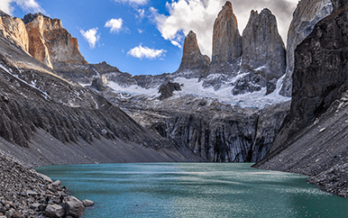
Torres del Paine
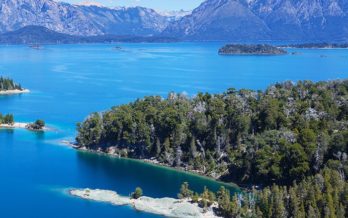
Lakes district of Bariloche
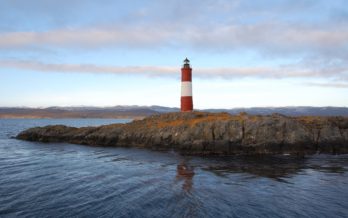
Tierra del Fuego
Best selling patagonia tours.
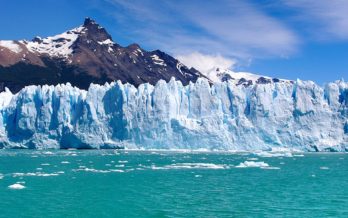
Patagonian Delights
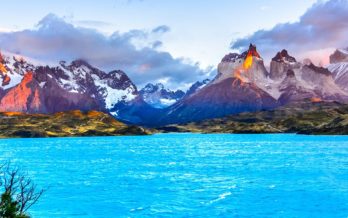
W Trek at Torres del Paine
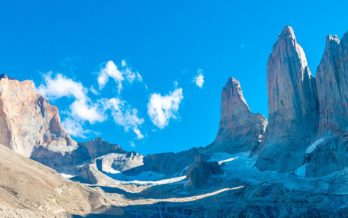
Ultimate Patagonia
El calafate – lakes & glaciers.
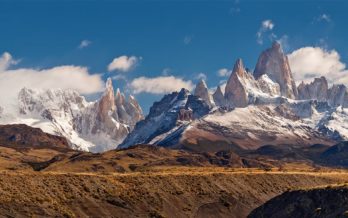
Trekking El Chalten
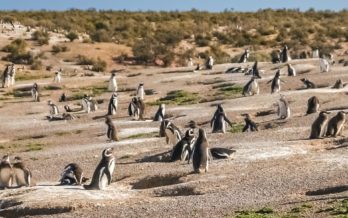
Highlights of Argentinean Patagonia
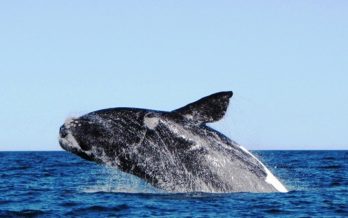
Peninsula Valdes
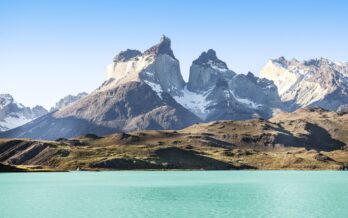
Wonders of Patagonia (Argentina & Chile)
Patagonian lodges.
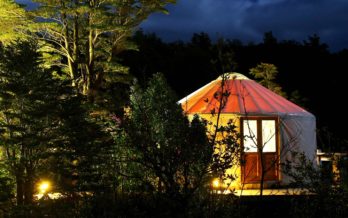
Patagonia Camp
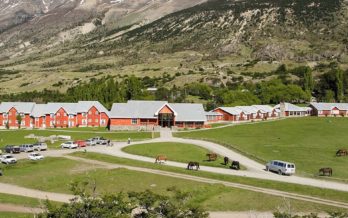
Hotel Las Torres
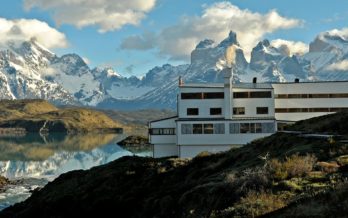
Explora Patagonia
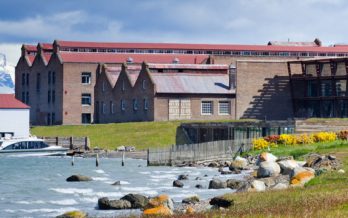
The Singular Patagonia
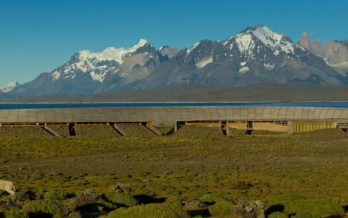
Tierra Patagonia
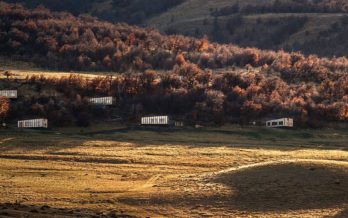
Awasi Hotel Patagonia
Cruising in patagonia.
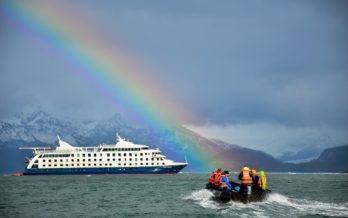
Australis Cruises
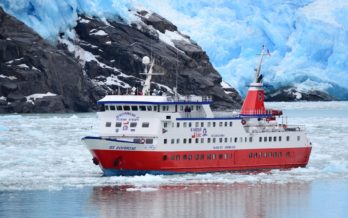
Skorpios Cruises
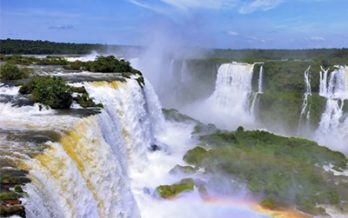
South American Voyager
Unique experiences.
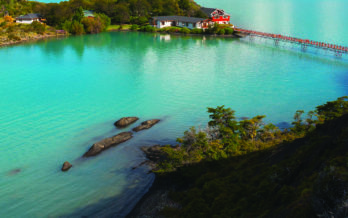
Best of Patagonia (Argentina & Chile)
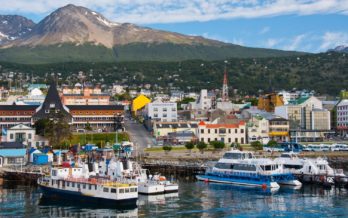
Ushuaia – Tierra Del Fuego
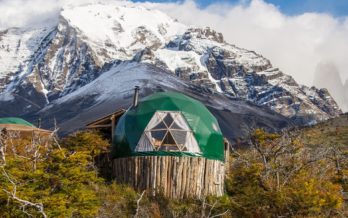
EcoCamp Patagonia
Get in touch today, we’d love to talk to you., call us: 1300 857 805.
We have friendly travel specialists who are waiting to help you.
Send an Enquiry
Have questions about Latin America? Simply fill out the form.
Request a Brochure
Get our latest brochures & start planning your Patagonia experience.
Latin American Inspiration

The Meat Lovers Paradise: Five Must Try Foods in Argentina
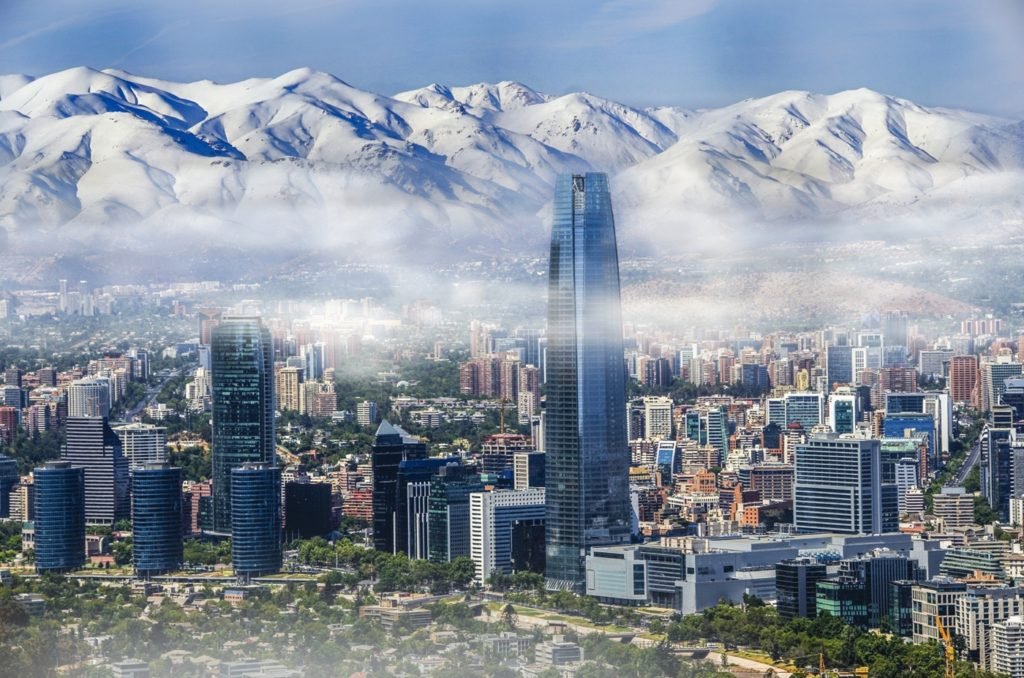
Your Guide to a Layover in Santiago de Chile
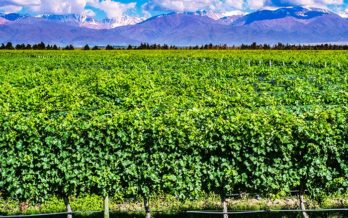
A Sneak Peek Into Some of South America’s Most Stunning Wine Regions
Get past-season clothing and gear up to 50% off. The sale ends September 2, 2024, but the discount and end date are subject to change.
Free Shipping on Orders Over $99
Orders are shipped within 1-2 business days and arrive within 3-10 business days. Need it sooner? Concerned about the environmental impact? Flexible shipping options are available.
More Details
Earth Is Now Our Only Shareholder
If we have any hope of a thriving planet—much less a business—it is going to take all of us doing what we can with the resources we have. This is what we can do.
Read Yvon’s Letter
- Food + Drink
- Take Action
Patagonia Stores & Authorized Dealers
Patagonia stores.

District of Columbia

Massachusetts

North Carolina

Pennsylvania

Hmm, No Results
Sorry, there are no results for . Please review or clear your search.
We guarantee everything we make.
We take responsibility for our impact.
We support grassroots activism.
We keep your gear going.
We give our profits to the planet.
Up to 50% Off Past-Season Clothing and Gear
- Quick Facts
- Sights & Attractions
- Tsarskoe Selo
- Oranienbaum
- Foreign St. Petersburg
- Restaurants & Bars
- Accommodation Guide
- St. Petersburg Hotels
- Serviced Apartments
- Bed and Breakfasts
- Private & Group Transfers
- Airport Transfers
- Concierge Service
- Russian Visa Guide
- Request Visa Support
- Walking Tours
- River Entertainment
- Public Transportation
- Travel Cards
- Essential Shopping Selection
- Business Directory
- Photo Gallery
- Video Gallery
- 360° Panoramas
- Moscow Hotels
- Moscow.Info
- Imperial Estates
- Oranienbaum (Lomonosov)
Visiting Oranienbaum and Lomonosov
Oranienbaum is perhaps the least visited of St. Petersburg's suburban palaces, despite the rich and unique treasures it has to offer. This can partly be attributed to the decades of neglect that have left most of the buildings in critical condition and allowed the park to be overrun by nature. Thankfully, the estate has now come under the auspices of Peterhof's management, and a massive renovation programme is already underway. For the next several years, however, it will be necessary to check which parts of the park and which buildings are currently open to the public.
Oranienbaum is only 12km along the coast from Peterhof, so it is possible for those with some stamina to combine the two in a single daytrip. A marshrutka minibus (K-348) connects the two estates. From St. Petersburg it is possible to take a minibus (K-300) from Avtovo Metro Station, or suburban trains from Baltiskiy Station. Either way, the journey takes a little under one hour.
Oranienbaum Park
Located on a slight incline, this pretty landscaped park is slowly being restored to its former glories, and contains a number of unusual architectural features.
Grand Menshikov Palace
This superbly elegant baroque palace was originally built for Peter the Great's closest adviser, and was the only suburban palace to survive World War 2 intact.
Chinese Palace
The favorite retreat of Catherine the Great, this small but exquisitely designed neoclassical villa has superbly restored interiors in "Oriental" style.
Palace of Peter III
This modest two-storey building was built for the future Peter III, and was the centre of Petershtadt, his peculiar model fortress of which he styled himself the Commandant.
Built as part of a Summer Palace for Peter III, this simple two-storey block by Antonio Rinaldi was later used as a Lutheran church, and is now an exhibition and concert hall.
We can help you make the right choice from hundreds of St. Petersburg hotels and hostels.
Live like a local in self-catering apartments at convenient locations in St. Petersburg.
Comprehensive solutions for those who relocate to St. Petersburg to live, work or study.
Maximize your time in St. Petersburg with tours expertly tailored to your interests.
Get around in comfort with a chauffeured car or van to suit your budget and requirements.
Book a comfortable, well-maintained bus or a van with professional driver for your group.
Navigate St. Petersburg’s dining scene and find restaurants to remember.
Need tickets for the Mariinsky, the Hermitage, a football game or any event? We can help.
Get our help and advice choosing services and options to plan a prefect train journey.
Let our meeting and events experts help you organize a superb event in St. Petersburg.
We can find you a suitable interpreter for your negotiations, research or other needs.
Get translations for all purposes from recommended professional translators.

3 Days in Saint Petersburg Russia: My Perfect 3-Day Saint Petersburg Itinerary
Saint Petersburg is one of Russia’s largest and most exciting cities, offering visitors thousands of things to do, including museums, palaces, beautiful parks, historical sites, and world-class theatre. Discover all the sights and delights the cultural capital of Russia has to offer with my 3-day Saint Petersburg itinerary.
With all these options, planning a trip to Saint Petersburg can be a bit overwhelming, especially for first-time visitors. I’ve put together a recommended 3-day Saint Petersburg itinerary that will help you see the city’s highlights if you have at least 3 days in Saint Petersburg.
Saint Petersburg is a budget-friendly destination that promises historical immersion and exquisite architecture at half the price of that in Western Europe.
My suggested 3-day itinerary has you visiting all the city’s most famous attractions (e.g., the atmospheric Church of the Savior on Spilled Blood, the Winter Palace, the Hermitage Museum) as well as some of the city’s lesser-known attractions. In addition to the 3-day itinerary, I also provide tips on how to get around Saint Petersburg and tips on where to eat and stay during your 3 days in Saint Petersburg.
If you’re headed to Russia’s capital city, take a look at my travel itinerary for one week in Moscow .

3 Days in Saint Petersburg Itinerary | The Perfect 72 Hours in Saint Petersburg
Saint petersburg, russia in 3 days – day 1.
Start with an early morning walk along Nevsky Avenue from Vosstaniya Square to the Admiralty Building. The first point of interest is the Hero-City obelisk next to the Moskovsky railway station commemorating the victory of Soviet people over the Nazis. The lovely views will put you in a good mood for the rest of the day. Stop for a nice cappuccino at one of the bars near Gostiny Dvor, a Russian alternative to the French Passage. Enjoy the sight of the old Anichkov Bridge, the oldest bridge over the Fontanka River.
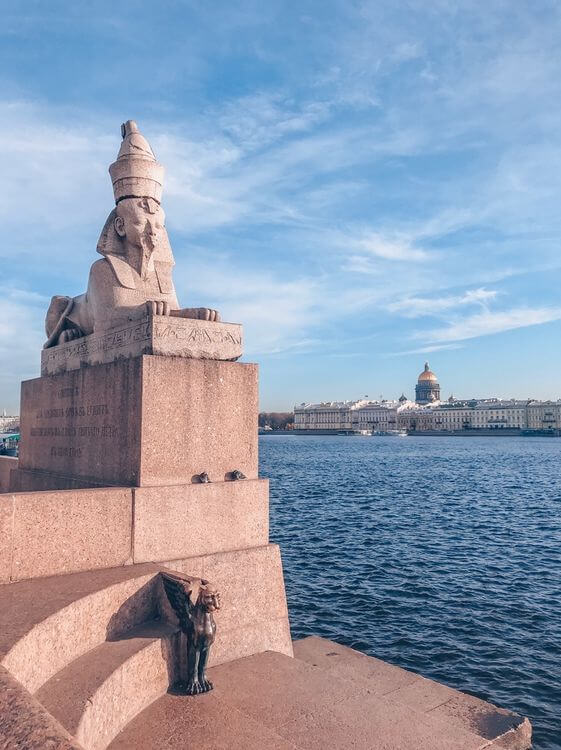
Then make your way to the neoclassical St. Isaac’s Cathedral. It’s a good idea to climb to its colonnade’s observation platform. It means that you get a panoramic view of the St.Petersburg and the refreshing breeze in the summertime.
In St. Isaac’s Cathedral you can admire the interior that boasts more than 300 paintings, mosaics, sculptures, various kinds of precious stones and gilding. The walls of the Cathedral are faced with fine Italian and Russian varieties of marble and other stones: malachite, lapis lazuli, porphyry. St. Isaac’s Cathedral, for example, is otherwise known as the “Museum of stones”.
What Motivates People to Travel
Just a stone’s throw away from St. Isaac’s Cathedral you’ll find the Winter Palace and the Hermitage Museum. These are the most famous attractions in St. Petersburg and you simply can’t miss them. Spend some time taking awesome pictures of the Palace Square, then continue your walking tour of St Petersburg toward the Spit of Vasilevsky Island.
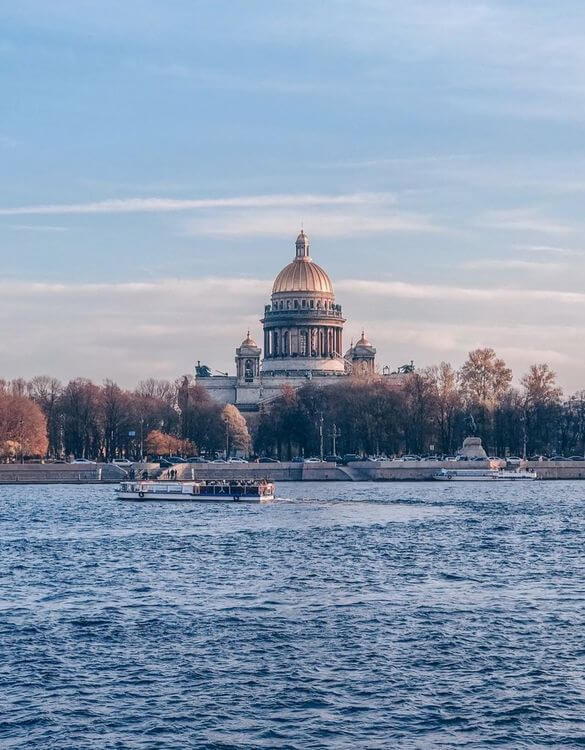
Here you’ll find red Rostral Columns decorated with bronze anchors and four pairs of bronze ship prows. Ah, don’t miss out on visiting the KunstKamera, arguably the weirdest museum in the world.
End your first day in Saint Petersburg exploring the Peter and Paul Fortress. The mighty that never served its purpose to protect the city sits on a narrow strip of land at the mouth of the Neva river. Hare’s island is home to a plethora of various buildings, museums, and exhibitions both permanent and temporary. Although, these do not always reflect the specific history of the fortress itself.
Be sure to make your way down to the Neva River. Here you can have a take a leisurely stroll along the mighty granite walls and mingle with locals.
Saint Petersburg, Russia in 3 days – Day 2
First things first. You can’t visit Saint Petersburg without seeing the real Dutch and Flemish Painting in the Hermitage Museum. It’s worth the trip but book ahead, and allow yourself at least two hours. A good place for a coffee and a pastry is Hermitage Cafe in the General Staff building. Pop over to the Field of Mars to have a look at ordinary people spending their leisure time and the first eternal flame in the country.
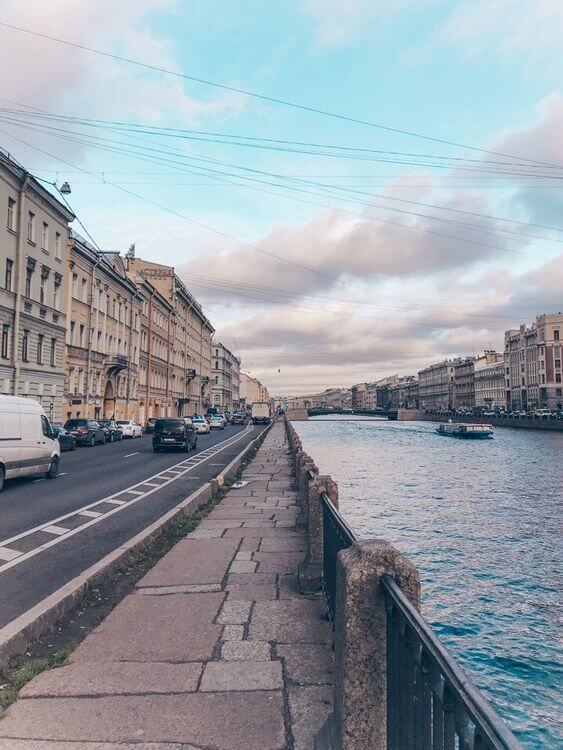
If you are a history buff, visit the Museum of the Defense and Siege of Leningrad. a former monastery filled with atmospheric early Renaissance frescoes painted by Fra’ Angelico. The permanent exhibition features the history of the city during the 900-day Blockade, which lasted from 8 September 1941 to 17 January 1944. It goes without saying that this is a very sobering, and unique place to visit for thought-provoking entertainment.
When Is the Best Time to Visit Russia
Then walk along Moika Embankment towards Chizhyk Pyzhik sculpture (pine siskin), and from there take a stroll through the Michael Garden (Mikhaylovskiy Sad) to reach the Church of the Savior on Blood. Admire the ornate cupolas of the Cathedral, otherwise known as ‘Spas Na Krovi‘. It was built on the very spot that Alexander II had been assassinated on March 1, 1881. You can also admire the Cathedral’s interior from inside – walls and ceilings are completely covered in intricate mosaics and paintings.
Nevsky Avenue and adjoining Griboyedov Canal are full of lovely little shops to browse in. At the intersection of Griboyedov Canal and Nevsky Avenue, you’ll find several cozy restaurants offering a wide array of dining options.
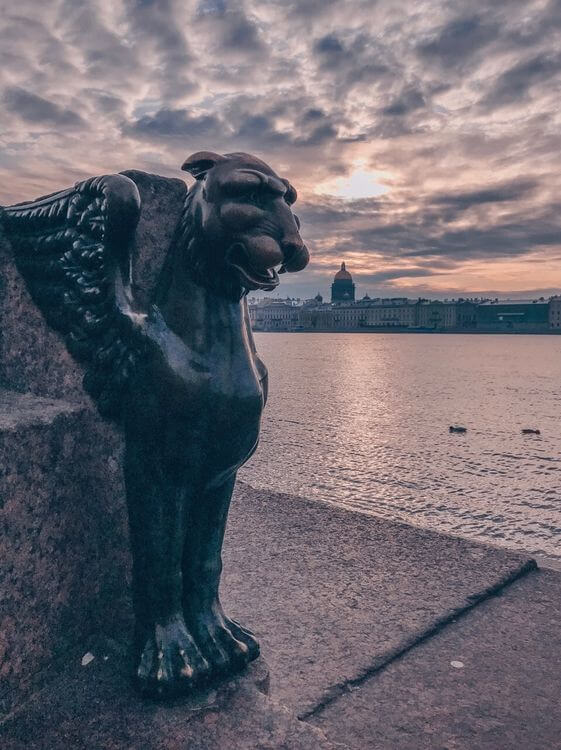
In the afternoon, head along to the Alexander Garden to see the Monuments and the Bronze Horseman; a monument to Peter the Great) next to the Admiralty building. From there take a subway ride (Admiralteyskaya station) and go see the impressive Narva Triumphal Arch. Definitely one of the most underrated attractions in St Petersburg.
This remarkable roman arch is made of bricks and covered with copper sheets for the facades. There are four columns on the front side, two on each side of the arch, chariot on the top and the two statues of ancient Russian warriors. The square around the arch is a lively spot in a summer evening too.
Saint Petersburg 3-day itinerary – Day 3
While St Petersburg is a perfectly walkable city, the main streets can get quite crowded in high-season. However, there is always an escape to one of the royal suburbs.
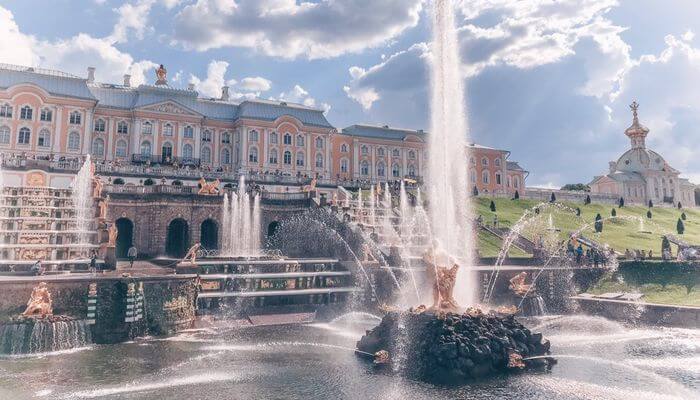
Spend the third day of your 3 days in St. Petersburg taking day trips to Peterhof and/or Pushkin.
Peterhof has many intricate fountains, the highlight being the Samson Fountain with the lion. The sculpture celebrates the Russian victories, especially the victory over Sweden, whose coat-of-arms contains the figure of a lion. Peterhof Park and gardens are a vast area behind the palace where you can spend a few hours to escape the crowds.
Should you choose, I recommend heading to Peterhof in summer. The former royal residence of Peterhof sits some 30 minutes by hydrofoil from the Hermitage Embankment. Peterhof consists of a series of palaces, gardens and the Grand Cascade that makes the city an extremely popular destination in summer. If you are here during the summer, check out the palace’s many fountains. Remember, the fountains are only operational from May to September and aren’t functioning during winter. Peterhof is most quickly accessible via minibus from a St. Petersburg suburb, but most easily accessible via direct train from Baltiysky railway station.
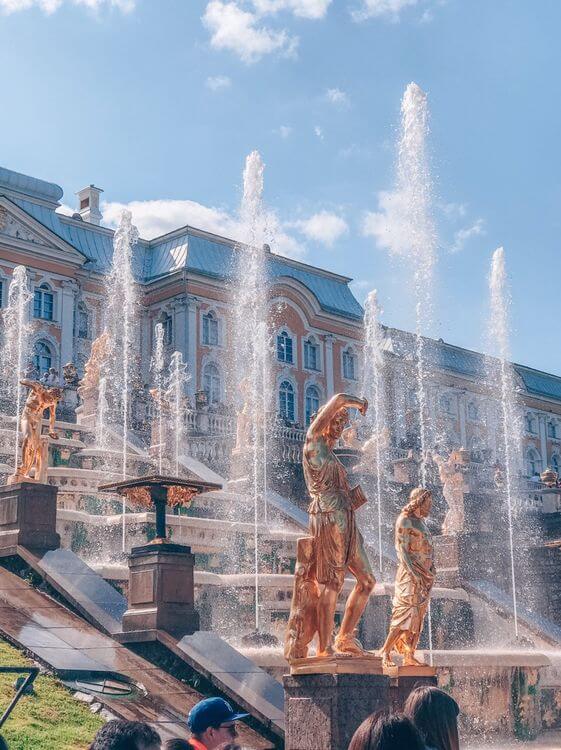
Alternatively, sightseers and culture seekers can visit Pushkin – home to a Catherine Palace and the famous Amber Room. I actually visited both Pushkin and Peterhof and it’s nearly impossible to choose between these two amazing places. Keep in mind, during the public holidays both cities can be quite packed with locals. So you may want to visit the Catherine Palace in autumn or winter when it’s much less crowded.
Where to Stay in Saint Petersburg
You’ll be spoiled for choice among Saint Petersburg accommodation options. The city offers everything from luxurious hotels with their own rooftop bars to more affordable budget hotels that put you within 25 minutes of Moskovskaya railway station. No matter what your budget, you’ll be able to find the perfect St Petersburg hostel within easy reach of downtown. Check Railway Capsules . If you’re looking for someplace a bit nicer, I can personally recommend the WYNWOOD Hotel .
The Bottom Line
You did it! You made it to the end of my itinerary for 3 days in Saint Petersburg, Russia! Hopefully, you’ve discovered some of the best attractions in Saint Petersburg and have maybe even learned about some unique things to do in Saint Petersburg too!
I also hope that you now feel comfortable enough to plan the perfect weekend itinerary in Saint Petersburg. So if you’re ready to begin planning your trip to Saint Petersburg, Russia, then pin this now and read it again later!
How many of these attractions would be on your Saint Petersburg itinerary? If you’ve visited Saint Petersburg, what were your favorite spots in Saint Petersburg? If you have any questions about the itinerary or visiting Saint Petersburg, just ask them in the comments below and as always I’m happy to help!
PIN IT FOR LATER!

YOU WILL ALSO LIKE:
STOP PROCRASTINATING YOUR DREAM VOYAGE!

8 REASONS WHY TRAVELLING MAKES YOU A BETTER PERSON
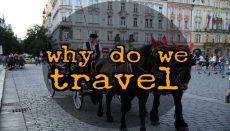
WHY DO WE TRAVEL
I’ve always wanted to travel to Russia. This looks amazing! Your photos are beautiful.
MindTheTravel
Thank you, Sarah! I agree this country should be visited at least once in a lifetime!
Thank you for sharing. I never dreamt about going to St. Petersburg. May change my mind after reading your blog post and seeing your pictures though 😀
Thank you for sharing.We would be in Sankt Petersburg in July 2020,for sure we would use the Guide.Thanks again.
Once this covid crisis is over, I can’t wait to get there — am looking forward to the suggested itinerary!
Save my name, email, and website in this browser for the next time I comment.

- Privacy Overview
- Strictly Necessary Cookies
My website uses cookies so that I can provide you with the best user experience possible. Cookie information is stored in your browser and performs functions such as recognising you when you return to my website and helping me to understand which sections of Mind The Travel you find most interesting and useful.
You can adjust all of your cookie settings by navigating the tabs on the left hand side.
Strictly Necessary Cookie should be enabled at all times so that I can save your preferences for cookie settings.
If you disable this cookie, I will not be able to save your preferences. This means that every time you visit my website you will need to enable or disable cookies again.

IMAGES
COMMENTS
The Best Way to Experience Patagonia, According to a Travel Expert. Patagonia is the place that bucket lists were made for. Stretching across the southern tip of both Chile and Argentina ...
Travelers flock to Patagonia to experience the otherworldly beauty of Torres del Paine National Park and spot Patagonia's wildlife, including the Big Five: pumas, llama-like guanacos, South ...
Patagonia in winter is a unique experience. Heavy snowfall coats much of the region, particularly on the Chilean side, lending the landscapes a magical atmosphere. ... Patagonia travel tip: If you are planning on traveling to Patagonia in winter, I would recommend booking accommodation in advance, or at least confirming that hotels and other ...
Ferry travel in Patagonia is a less common option, with limited connections available. However, it offers a unique and leisurely way to explore the region's stunning landscapes, especially the Chilean fjords. ... By including these activities, you'll have an unforgettable experience in Patagonia.
Luxury standouts include The Singular Patagonia (former abattoir turned 5-star hotel), Remota (estancia-meets-wilderness aesthetic), and the ship-like NOI Indigo, while boutique backpacker digs include Treehouse Patagonia, Wild and Yagan House. The dining scene runs the gamut from African-Patagonian fusion at Afrigonia, and inspired seasonal ...
Here are some of Patagonia's unmissable experiences. 1. Hike in Torres del Paine National Park, Chile. Arguably South America's finest national park, Chile's 1810-sq-km (699-sq-mile) Torres del Paine is defined by the characteristic bell-shaped Los Cuernos and the trident peaks of Las Torres themselves.
The word Patagonia conjures dreamy images of wide-open spaces, remote natural beauty, massive glaciers, soaring Andes, outdoor adventures and iconic wildlife on land and at sea. The Patagonia region of Argentina, which includes the southernmost third of the country all the way south to Ushuaia, the most southerly city in the world, delivers all ...
My Patagonia highlights. Day 1: Buenos Aires to El Chalten: Hike to Mirador Condores. Day 2: Laguna de Los Tres hike (El Chalten) Day 3: Laguna Torre (El Chalten) Day 4: Perito Moreno Glacier (El Calafate) Day 5 Patagonia itinerary: Puerto Natales. Day 6 - 10: W Trek (Torres Del Paine) Other places to visit in Patagonia.
An immense, wild territory covering over 400,000 square miles of Chile and Argentina, Patagonia spans the entire southern tip of South America, and has endless wild territory to explore. Our trips allow you to experience the best regions of this vast wilderness area: Tierra del Fuego, Los Glaciares, and Torres del Paine. Top Patagonia Parks.
Download our FREE Patagonia Travel Guide and get inspired to travel to Patagonia. Browse through 30 pages of travel planning tips and ideas - a great resource for planning your Patagonia dream vacation. ... Best Patagonia Tours. Experience the wonders of Torres Del Paine National Park, guided treks of Perito Moreno Glacier, and stand in awe ...
As locals, we learned the inside secrets on how to get the most out of your tour to Patagonia. From Peninsula Valdés to Ushuaia and back up to El Calafate, Torres del Paine, Bariloche, and so on. You can contact me by email or Whatsapp: [email protected] or +5491125524682. I hope you enjoy reading and have a pleasant trip to Patagonia.
The Best Time to Visit Patagonia The best time to go to Patagonia depends on your interests and the type of experience you desire. Whether you prefer the blooming beauty of spring, the activity-packed days of summer, the tranquil landscapes of autumn, or the wintery solitude of snow-covered Patagonia, this diverse region offers something remarkable throughout the year.
7. Experience icebergs one day, estancia the next . Giant towers of ice and incredibly warm hospitality - Patagonia does it both. Experience it all on a short adventure to Perito Moreno Glacier. First, you'll take a one-hour glacier cruise for an up-close look at the 70-metre tall, five-kilometre wide and 30-kilometre-long expanse of ice.
Classic Hikes of Patagonia. Margaret · Traveled March 2024. Wow, what an adventure we had with Intrepid in Patagonia. Apart from the amazing environment, our superb hikes, wonderful glaciers, we got to meet some interesting locals, sampled the foods, wines and lots of delicacies of the area. Review submitted 30 Mar 2024.
Itinerary #2: Best of Southern Patagonia. Experience the dramatic landscapes of Torres del Paine National Park and Los Glaciares National Park on this Southern Patagonia adventure. Ideal for those looking to minimize travel time and enjoy leisurely evenings, this tour features stays in El Calafate, El Chaltén, and Puerto Natales.
Patagonia. On South America's southern frontier, nature grows wild, barren and beautiful. Spaces are large, as are the silences that fill them. For the newly arrived, such emptiness can be as impressive as the sight of Patagonia's jagged peaks, pristine rivers and dusty backwater oases. In its enormous scale, Patagonia offers a wealth of ...
4. Hiking Patagonia: Two-Week Active Adventure. 5. 3-Week Family Tour of Patagonia and the Capitals of Chile and Argentina. 6. Heart of Patagonia: Two-Week Tour of Chile and Argentina. 7. 17-Day Off-Road Adventure: Hike, Kayak and Discover Patagonia. Plan Your Patagonia Itinerary with a Travel Specialist. 1.
Experience Patagonia Travel. With a surface area of approximately 800,000 square kilometers, the region known as Patagonia encompasses the southern cone of South America (including parts of both Chile and Argentina). On the Chilean side, it begins south of the city of Puerto Montt. In Argentina, it begins south of the Colorado River.
Aboard our small and nimble expedition ships, travel to the region's wild isles and untrammeled coasts, where roads are scarce and nature reigns. ... from our naturalists and photographers to our expedition leaders—is committed to ensuring you have an unforgettable experience. Most have worked in Patagonia for decades and many live locally ...
Patagonia Santa Monica. 1345 3rd St. Santa Monica, CA 90401. (310) 395-6895. View More Directions Call. Patagonia Ventura. 235 W Santa Clara St. Ventura, CA 93001. (805) 643-6074.
PATAGONIA; CAMINO DE SANTIAGO; 3 days in St.Petersburg - a detailed itinerary ... to visit some difficult-to-access faraway places, there are several unique tour options with G-Adventures and Intrepid Travel that will make your holiday unforgettable. ... They have a lot of experience in covering international travel and adventure activities ...
Last admission is at 5 pm. October 10 to April 30: Saturday and Sunday, 10:30 am to 5 pm. Last admission is at 4 pm. Admission: Adult: RUB 250.00 Children: RUB 150.00. Accessibility note: No wheelchair access in the museum. Essential visitor information for the Imperial estate at Oranienbaum, near the St. Petersburg suburb of Lomonosov.
Saint Petersburg 3-day itinerary - Day 3. While St Petersburg is a perfectly walkable city, the main streets can get quite crowded in high-season. However, there is always an escape to one of the royal suburbs. Spend the third day of your 3 days in St. Petersburg taking day trips to Peterhof and/or Pushkin.